

15 Things to Know Before You Visit Benin: Voodoo’s and Voodon’ts
Benin in West Africa is probably most famous for being the home of the Vodun or Vodou (more commonly known in the West as Voodoo) religion, of which Haitian Voodoo is derived.
Voodoo is one of the most complex, and therefore misunderstood religions in the world and is a far cry from the demonized version of Voodoo you see in the movies, however, there is some truth in the myth.
Voodoo is a life force, culture and way of life in sync with the natural world, something few people in the Western world can truly understand.
Yes, there is ‘bad’ voodoo (bad juju) and yes animals are sacrificed on a regular basis, but the majority of voodoo practices are used for good purposes.
Unusual things happen in Benin and for many of the Beninese people, magic is as real as you or I.
As a British person, I personally found Benin to be fascinating, weird, and wonderful. So if you’re looking for a truly ‘different’ kind of cultural adventure, then Benin is definitely the place to go.
So to help you have a smooth and awesome trip, I’ve pulled together a list of travel tips for travelling Benin.
Table of Contents
Things To Know Before You Visit Benin
1. you need to obtain your visa in advance.
Most visitors to Benin need a visa to enter unless they are from one of the ECOWAS (Economic Community of West African State) countries.
There are various different types of visas for Benin you can apply for including a 30 days single entry, 30 days multiple entry and 90 days multiple entry, as well as different business visas too.
The easiest way to apply is through the e-visa Benin website which is very efficient.
My Benin visa came through in a day or two, but to be on the safe side, perhaps give yourself a week.
For further information on entry requirements, you can contact your nearest embassy. For the UK & Europe, this is the Embassy of Benin in Paris. For the US, this is in Washington.
To apply for your visa, you will need:
- A valid passport with 6 months validity remaining from when you are due to return from Benin (if you are visiting neighbouring Togo too, you’ll need 1 year left on your passport).
- At least 2 free pages in your passport (usually always 2 per country for Africa).
- Your flight details.
- Passport photos.
- Yellow Fever certificate.
- Hotel address (for the first night in Benin).
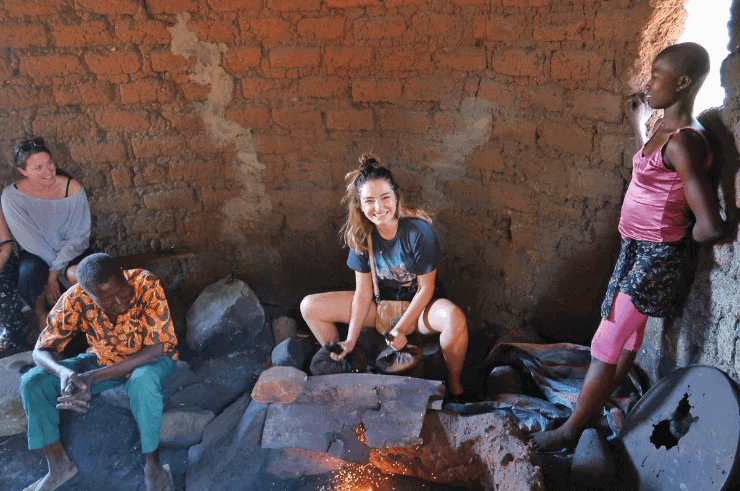
2. You’ll Need a Yellow Fever Certificate
Just like Sierra Leone and many other West African countries, visitors to Benin needs to have a proof of Yellow Fever vaccination and you may have to send it off when you apply for your visa, so if you don’t have it already, make sure you get it in good time.
Depending on when you read this, you may also need a negative Covid-19 test too.
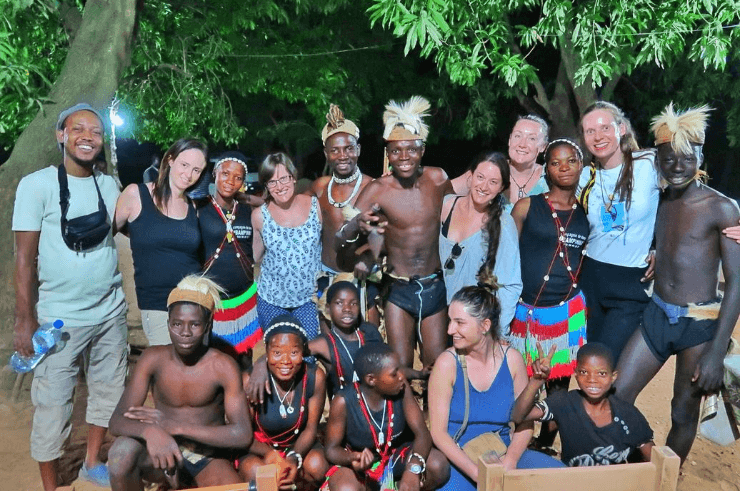
3. The Official Language is French
Whilst there are around 55 languages spoken in Benin, 50 of them indigenous, French is the official language. The main local languages are Fon, Yoruba, Bariba and Dendi.
I can understand very basic French, but I would have struggled without a French-speaking guide and luckily two of my group were also fluent French speakers. This helped us immensely and ensured we had an incredible experience.
It’s not that you can’t travel there if you only speak English, but it will be a lot more difficult. So before you go, brush up on your French or get a guide who can translate for you.
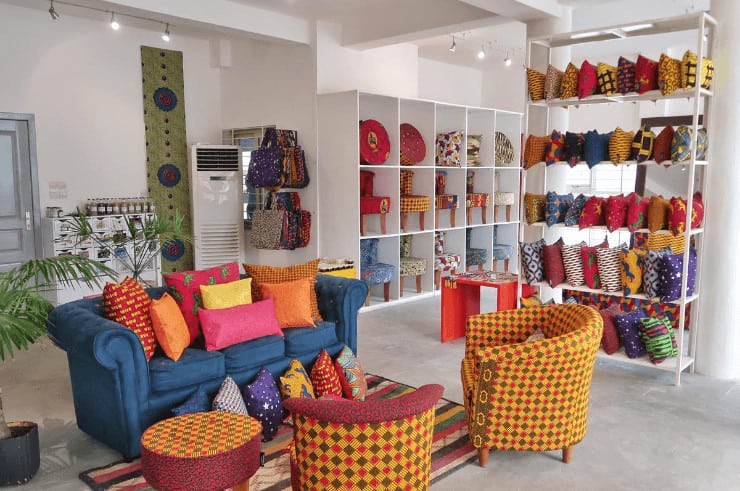
4. The Currency of Benin is the West African CFA Franc
The currency of Benin is the West African CFA franc (CFA).
What’s great about this currency, is that it is used in 8 different West African countries, so as well as Benin, it’s used in Burkina Faso, Guinea-Bissau, Ivory Coast, Mali, Niger, Senegal, and Togo – which makes things easy when you cross the borders.
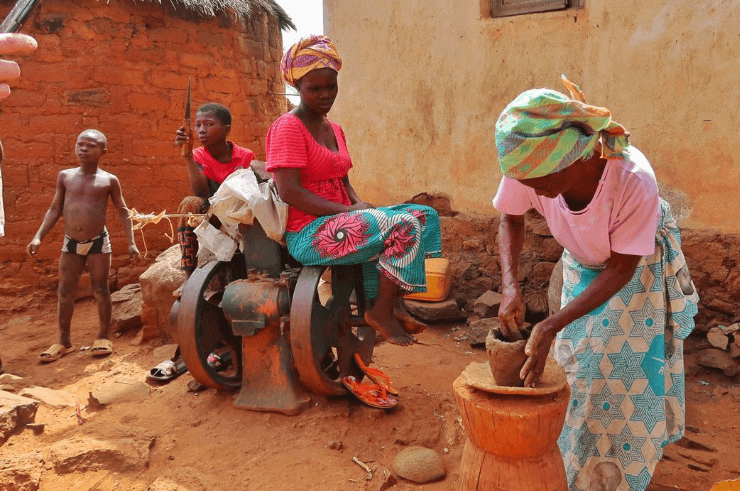
5. Accessing Money in Benin
Paying by cash is the easiest way to pay in Benin, although cards are accepted in many of the more high-end places.
Getting hold of CFA francs outside of West Africa (except maybe in France) can be pretty tricky, so you’re best to either use the ATM’s when you’re there or take some money to exchange.
I usually take USD or GBP when I go to East or Southern Africa, but Euros were by far the easiest currency to change here, and some banks we went to did not change USD or GBP at all.
There are plenty of ATMs in the cities and Visa is the most widely accepted card, so make sure that you don’t just have a Mastercard as you will struggle to use it.
When you exchange/take out money, you’ll usually get larger bills, so before you head to anywhere that you are likely to need small bills (so markets, villages, etc) try and break your notes. You can exchange money on the street (ask at your accommodation for where to do it) or buy something in a supermarket.
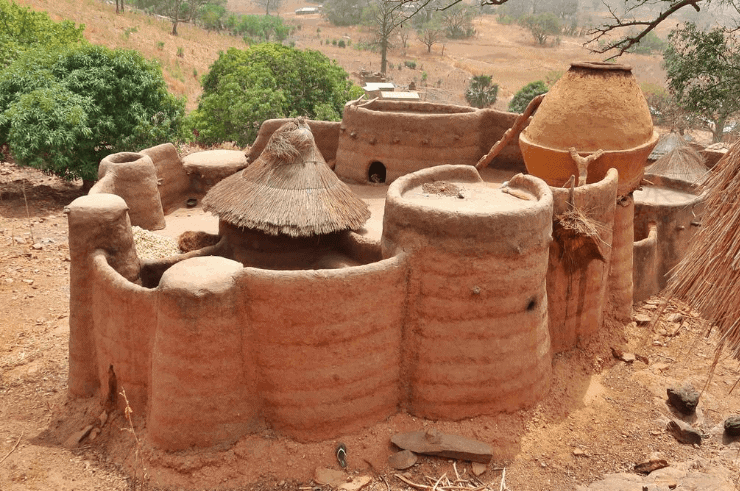
6. Get a Local SIM Card
Local SIM cards are cheap, easy to come by, and will help you navigate the country more easily.
We got our SIM cards from MTN, a big, reliable phone company that operates all over Africa. We purchased ours from the guys on the street outside the MTN store on the corner between Rue 102 and Boulevard Steinmetz in Cotonou.
Always take your passport with you when you are getting your SIM cards in Africa and don’t forget to unlock your phone. The SIM card, and quite a lot of data (I think I got about 4GB) cost me around $10.
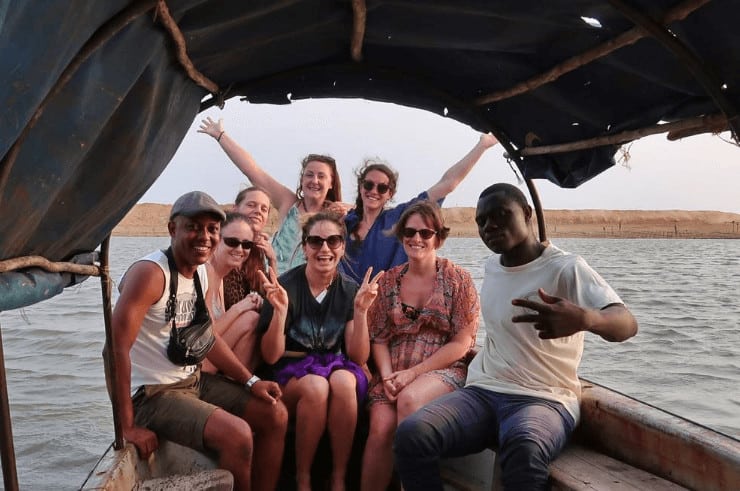
7. Getting Around Benin
In Cotonou and the major cities, you can easily get around using motorbike taxis known as zemidjans or zems. You can spot the drivers by their yellow vests. These guys are everywhere, speeding around town but they are best used for short distances in the daytime only and don’t expect to be able to wear a helmet, unless you bring your own.
These taxis are pretty cheap and you’ll pay anything between 30p – £1.50 for a ride around town, depending on your negotiation skills. As a foreign traveller, you will usually always be charged more but it’s still not much.
Between cities, you can use either buses or share (bush) taxis. Buses are usually the more comfortable option. Recommended companies such as ATT and Confort Lines will get you where you need to be. Some buses even have air-con too.
Share taxis are usually a car with as many people stuffed in as humanly possible. Definitely not as comfortable, or safe, but always an experience to tell your friends back home.
The biggest problem I found, was getting private taxis to take us home after a night out. There just aren’t many at all.
The hotels would sometimes ring us a taxi, but it always seemed difficult, we would wait ages for them to arrive and they always had to wait for us as it was difficult to find another one – which adds waiting time to the costs also.
You can also hire a car, but it’s not cheap. As we were travelling in a small group , we had our own private transport and driver which was super useful.
As with many places in Africa, I would avoid travelling long distances at night. Lack of streetlights, drunk drivers, and people on the road make night driving on the backroads risky.
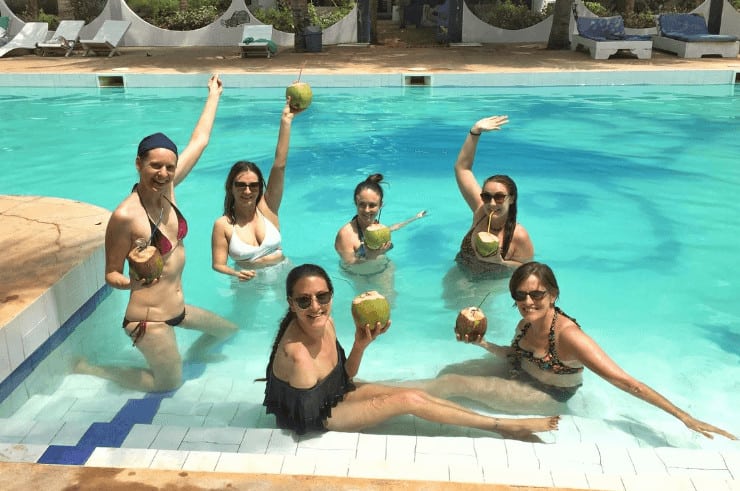
8. Best Time to Visit Benin
Roughly, the wet season runs from May to September, whilst the rest of the year is dry. The cooler part of the dry season runs from October to January and the hotter part of the dry season is from February to April.
I visited Benin at the end of February and it was bloody hot and I’ve never been so sweaty in my life. Would I visit at that time again? Probably not, it was a little too hot for me, but we still had a great time.
The wet season in West Africa can make things difficult, with roads being impassable, mosquitoes out in force, rough seas, and some of the national parks being closed.
From mid-November to mid-March, the Harmattan winds blow over West Africa, causing a hazy atmosphere which makes photography difficult.
A good time to visit is during the annual Voodoo Festival which takes place in Ouidah on the 10th January. Whilst Ouidah is where the bulk of the action happens, I’m told that there are some less commercial events in Grand Popo, a beach resort along the coast.
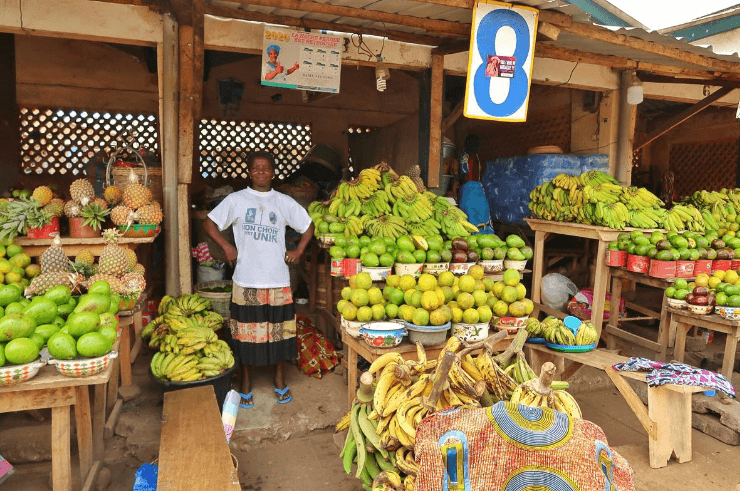
9. Try the Peulh Cheese
We had some pretty good food in Benin.
You get the usual West African foods, such as maize (fufu), jollof rice (from Nigeria), plantain, fresh fish, peanut soup, a good selection of fresh fruit, and in the cities, there is a selection of different cuisines too. The ice creams at Cornetto are a welcome break from the heat!
One of my favourite food finds in Benin was Peulh cheese.
It’s a bit like mozzarella mixed with halloumi, and when you’re travelling in Africa, finding good cheese is always a bonus.
UPDATE: See in comments below, it’s actually called wagasi , but made by the Peulh people, and from what I found, it was referred to as Peulh on menus. Thanks Theresa!
Either way, if you see it and you can eat cheese, get it!
One local cuisine I did NOT eat, was ‘agouti’, which is basically a large cane rat. We saw these being roasted at the Dankoli Fetish and I can safely say, I was not tempted in the slightest. Smelled pretty good though and I’m told they are pretty tasty. But… no.
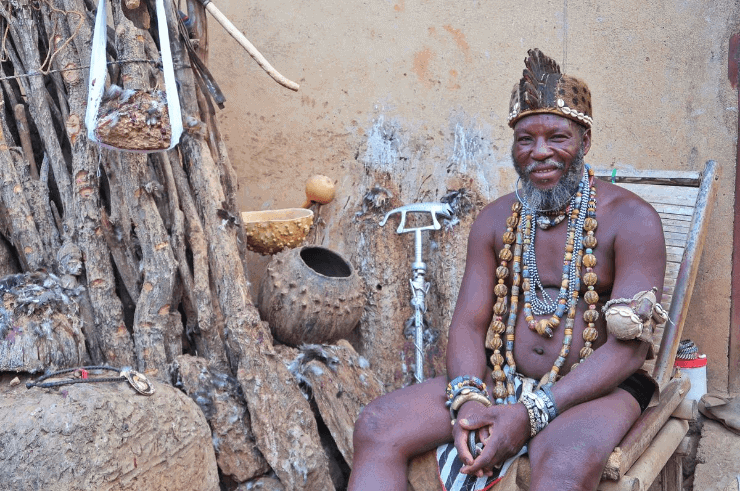
10. Voodoo is More Than a Religion, It’s a Belief System and a Way of Life
Now the bit you’ve all been waiting for… Voodoo.
I’d go as far as to say that without learning about Voodoo, you’re missing out on a lot of the most interesting and important aspects of Beninese culture.
We were very lucky, as our guide was a Voodoo Adept (practitioner), which meant that we got to experience the Voodoo religion in a very real, very authentic way. For the two weeks, we were with him, he let us into his world, so we got a behind-the-scenes view. And it was fascinating. He even took us to get a Fa reading with his priest.
The frustrating thing is, that the more I learn about Voodoo, the more I realise I don’t know about Voodoo. It’s one of the oldest religions in the world and incredibly complex.
The word ‘Voodoo’ means spirit in the local Fon language and it’s an animistic religion, meaning that practitioners believe objects, creatures and places all have a spiritual essence – they are all ‘alive’ and ‘connected’.
This belief makes a lot of sense to me. As a yoga teacher and energy worker – I also believe in that sense of ‘oneness’ with the universe. The difference though is that in the world of Voodoo, is that unlike karma , these spirits can turn (or be turned) against you if you’re not careful or you piss them (or someone else) off.
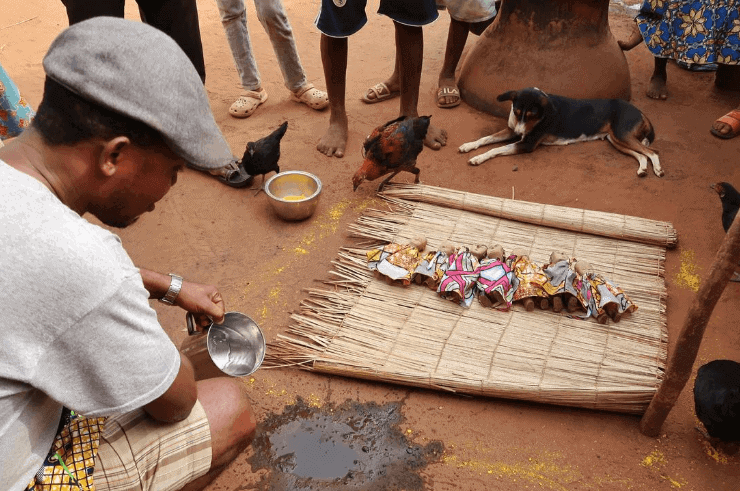
There are hundreds of different gods and deities, some more powerful than others, as well as priests, healers, witches, and sorcerers. There are also a number of other masked ‘figures’ or ‘spirits’ that you may meet on your travels, such as the Zangbetos (Night Watchmen) or the Egunguns (spirits, returned from the dead, who take over a human body so they can communicate the words of the ancestors – yep, really).
Our first encounter with the Zangbetos was when our guide told us that if we hear any strange noises in the night, not to go or look outside. Erm… excusez-moi?
Voodoo dolls are a thing, but they’re usually used to cure people of illnesses and stop pain, rather than to cause it. Twins are revered and twin doll ceremonies are an important part of the Beninese culture. If one twin dies, the other must carry a doll of his or her twin with them at all times.
There are many secrets within the Voodoo world, passed down from generation to generation, and I doubt there’s anyone who fully understands every aspect of Voodoo. But if there is, I’d like to meet them as I can assure you, they would have some stories to tell.
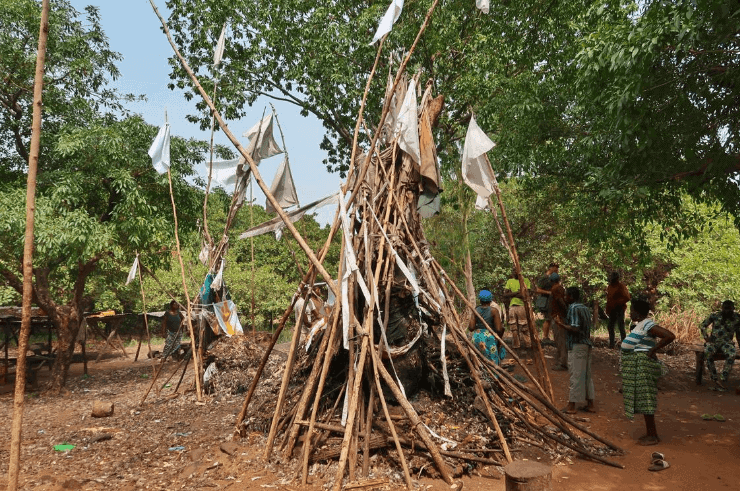
11. Be Prepared to See Some Animal Sacrifices
If you’re visiting any of the fetishes (shrines) you will likely see some animal sacrifices – whether you want to or not. These fetishes or shrines don’t look as you would imagine. In fact, you might easily pass one thinking it was a pile of rubbish. Look closer and you’ll see a mix of strange objects, feathers, and blood.
Some sacrifices are done for the tourists, but the majority is done for a specific reason, such as to bring good fortune or to ward off bad spirits.
Usually, the animals have their throats slit and then the blood is put onto the fetish whilst the priest says prayers and we witnessed a goat being sacrificed at the Dankoli Fetish above.
For an animal lover, this may be difficult to take. Whilst it may seem cruel, it’s a very important part of Beninese culture and the meat never goes to waste.
Saying that, our guide was very adamant that the Dankoli Fetish, once known as the most sacred and magical place in Benin had been ruined by commercialism.
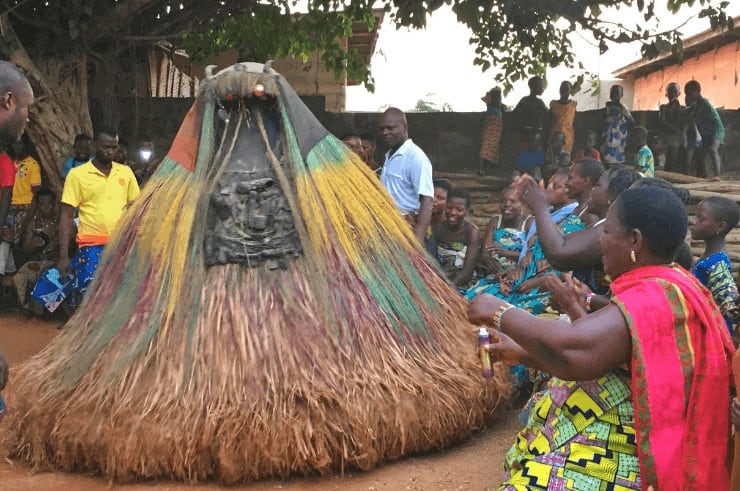
12. Suspend Your Disbelief and Be Open-Minded
If you haven’t realised already, Voodoo is very difficult for a Westerner to fully grasp.
You will sometimes see and hear things in Benin that you will not understand. You’ll hear stories that do not really make any sense. People you know well will tell you these stories with absolute conviction. It happened.
Just roll with it, take it all in, and suspend your disbelief. You’ll enjoy it more that way!
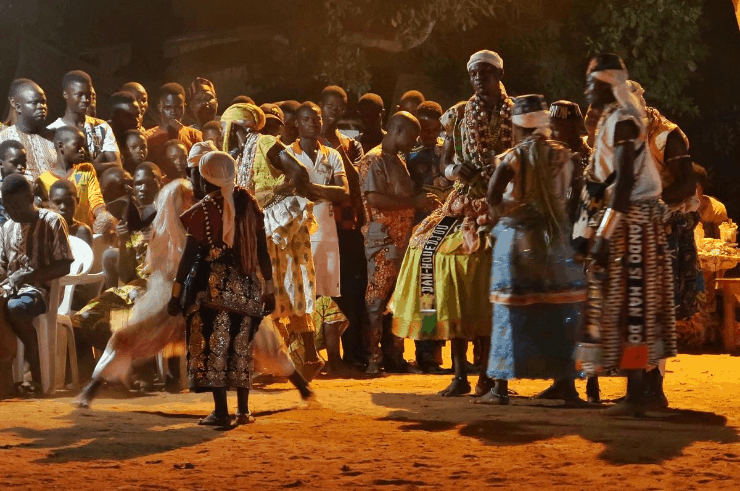
13. Try to Get to a Real Voodoo Ceremony
Whilst you’re in Benin, you’ll have the opportunity to experience or witness voodoo first hand, from visiting the fetish markets to attending a ceremony.
There are plenty of voodoo ceremonies put on for tourists, which are awesome, but there’s something incredibly special about attending a real voodoo ceremony. You can’t always plan it, but if you’re in town and you get invited – go! Attending a ceremony that wasn’t put on for us was one of the highlights of my trip.
We also visited a voodoo priest as an arranged activity through one of our guesthouses and we visited our guide’s local Voodoo priest for a Fa reading. The two experiences were VERY different.
The former was showy, intimidating, and I ended with chicken blood on my face (I will write about this, someday… maybe – I’m still off chicken).
The latter was very chilled and we started by meeting the family, offering gin to the spirits and the priest’s words moved me to tears. Which one did I prefer? I’m sure you can guess.
Getting authentic experiences whilst travelling in Africa can be difficult, but by being curious, open-minded, and accepting, you’re far more likely to experience these things.
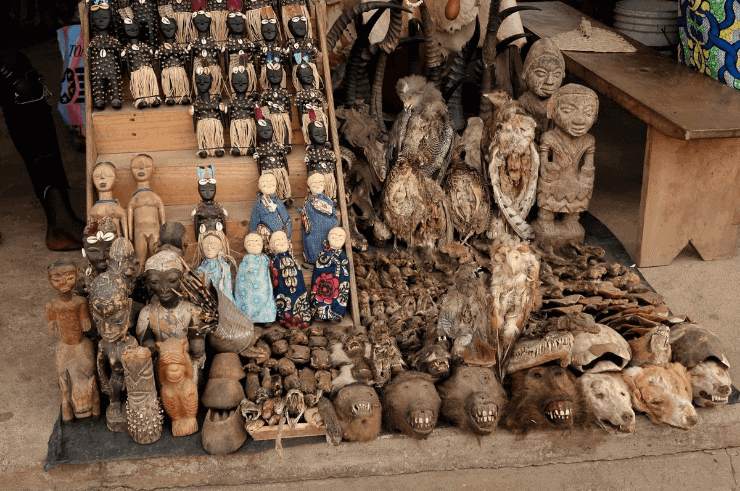
14. Very Superstitious, Writing’s on the Wall
The Beninese are very superstitious – it’s part of the culture. Our guide was no exception.
We heard stories of people going to fetish markets, walking on cursed powder, and having spells cast on them. We heard about places we shouldn’t go because of bad spirits.
Our guide was genuinely afraid of taking us to certain places in case bad things happened to us. This makes travelling with a Voodoo practitioner both a blessing and… dare I say it… a curse.
One thing I know for sure is that you do not want a Voodoo curse placed on you.
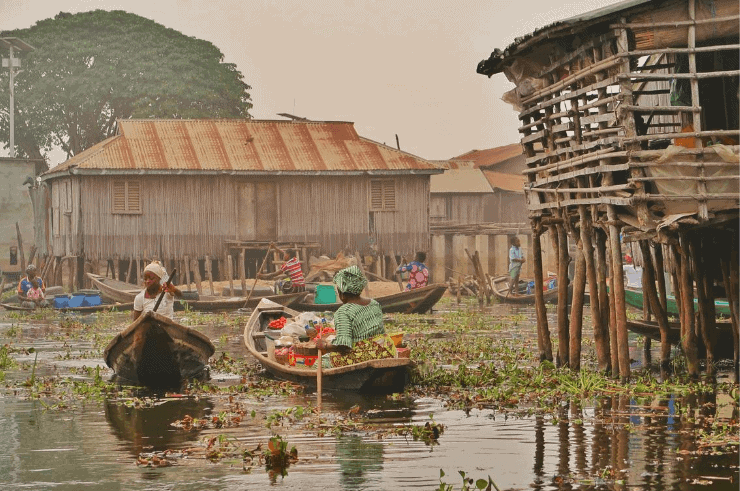
15. There’s a Lot More to Benin Than Voodoo
Whilst Voodoo plays a huge part in the culture of Benin, there is so much more to it than that. I need to write a full itinerary/things to do blog post for Benin, but there are plenty of other reasons to visit this incredible West African nation.
Benin is one of the best places to learn about the trans-Atlantic slave trade on the Route des Enclaves (The Slave Route) in Ouidah. Starting in town, your guide can explain the various different monuments along the route, ending at the Gate of No Return, the place on the beach where slaves were shipped off to the Americas, never to see their homeland again.
Up in the north of the country, you’ll find one of West Africa’s best safari destinations, Penjari National Park, as well as the Tata Somba villages and their interesting architecture.
Down in the south, you’ll find the royal palaces of Abomey where you can learn more about the powerful kingdom of the Fon people, who founded the Dahomey Empire. Abomey is also known for its strong voodoo culture, powerful magic sorcerers, and ceremonies.
And then down on the coast, there are the sandy beaches of Grand Popo (although if you’re looking for Caribbean or even Sierra Leoneon-type beaches, you may be disappointed), the cities of Cotonou and Porto Novo and the lakeside villages of Lake Aheme, as well as the Ganvie Stilt Village.
Roughly 40,000 people of the Tofinu tribe live in Ganvie, and it is one of the last surviving stilt villages dating back around 400 years. At that time, the Tofinu people built these villages to escape Dahomey slave hunters who were banned from venturing into the water by religious customs.
Overall, Benin is an incredible country that is unlike anywhere else in the world. If you get the chance, go visit – just try not to fall under her spell…
Read More About Benin & West Africa…

Please Note: Some of the links in this post are affiliate links, which will earn me a small commission at no extra cost to you. Affiliate sales help with the running costs of this site, so thank you for your support!
I love to travel all over the world, but it's Africa that holds a special place in my heart. My mission is to help people travel Africa in an authentic, safe, fun, adventurous and ethical way.
Similar Posts
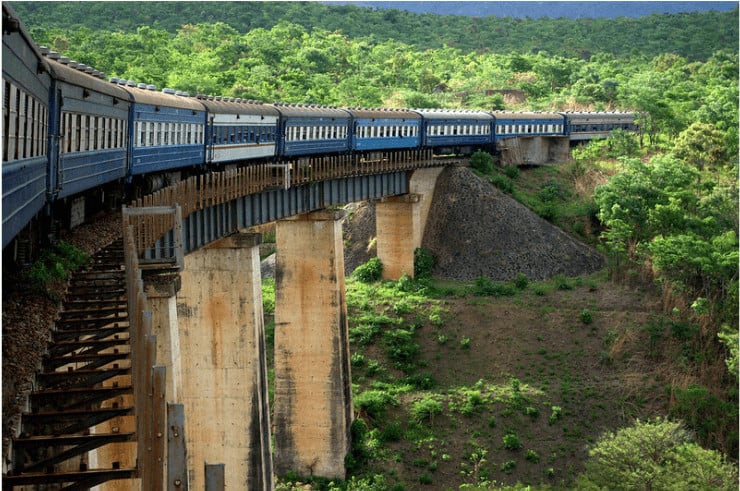
How to Get Around Tanzania By Local Transport
You may be wondering how to travel around Tanzania? Is there local transport? Is it easy to get around? Do…
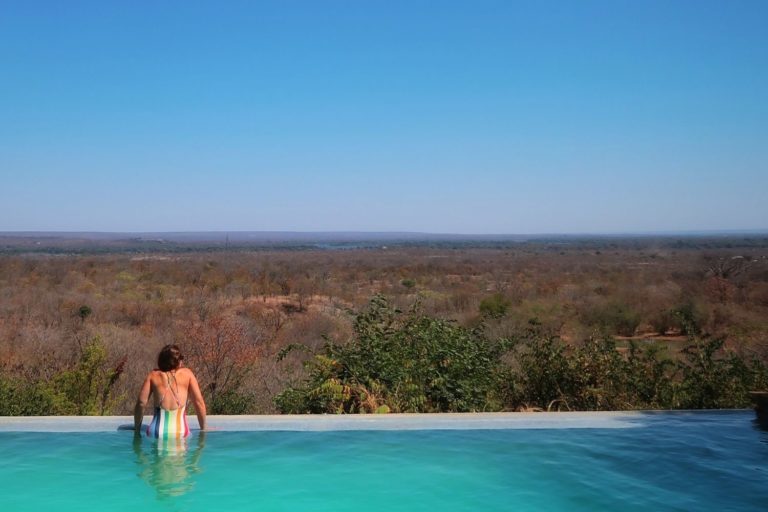
5 Reasons to Stay at the Stanley Safari Lodge in Livingstone, Zambia
A few weeks ago, I had the privilege of staying at the wonderful and luxurious Stanley Safari Lodge with Robin…
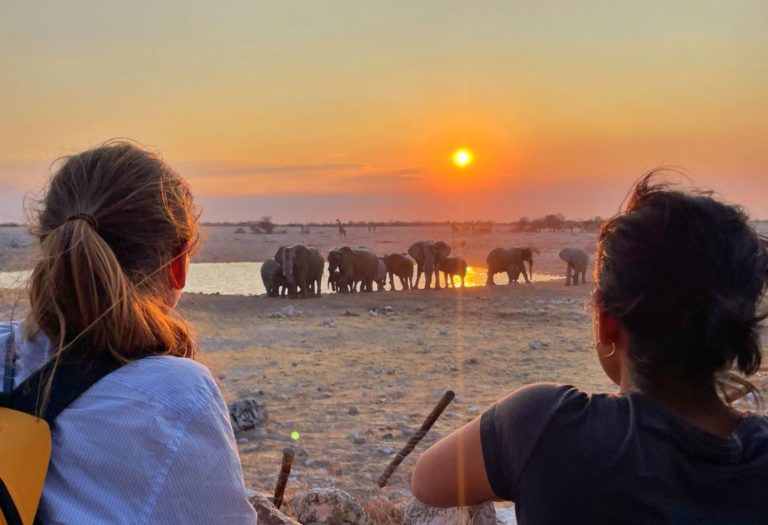
Photos to Inspire You to Visit Namibia
Ever wondered what Namibia looks like? Namibia is one of the most unusual and stunning countries that I’ve ever been…
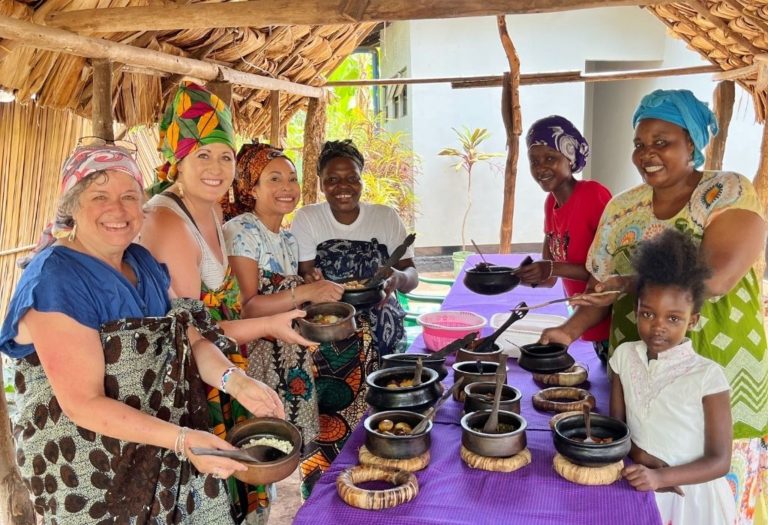
24 Fun Things To Do In Moshi, Tanzania
Moshi is a city that lies in the foothills of the mighty Mt. Kilimanjaro. So here are my suggestions on the best things to do in Moshi.
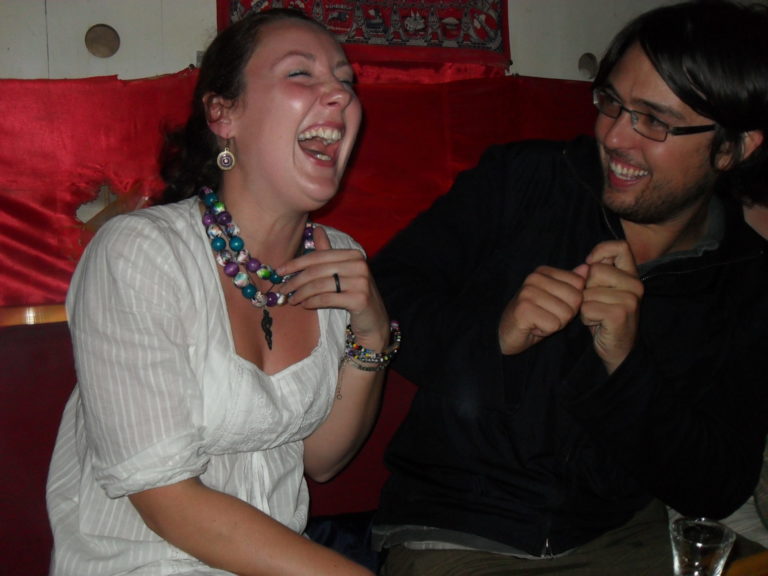
17 Travel Lessons for Everyday Happiness
This time of year always leaves me feeling a little bit reflective and maybe a little bit melancholy, even though…
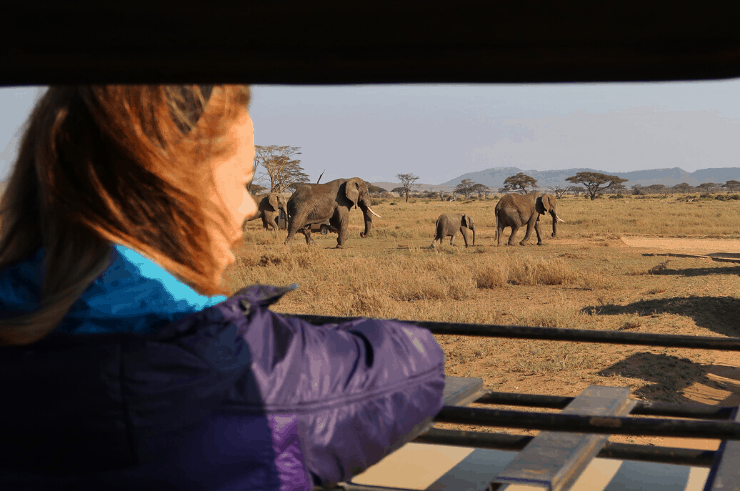
How Much Does it Cost to Travel in Tanzania? How to Budget for Your Trip
Whenever anyone asks me what my favourite African country is, I usually say Tanzania. Whilst I love pretty much every…
That’s look like quite a trip for you guys, thanks for sharing with us 🙂
Thank you for sharing this useful information about traveling to Benin. Great! blog.
The cheese you’re thinking of is called “wagasi” or “wagashi,” depending on what part of the country you’re in. It’s made by the Peulh people, which is probably why you heard it reference to as “Peulh cheese.” It’s delicious, and we always stock up when we go to visit — it freezes well. My in-laws are Beninese, and we visit often. It’s always great to see folks enjoying their trips there!
Thank you Theresa! I did see wagasi referenced and I assumed it might be the same cheese, but the menus said ‘Peulh’ – thanks so much for clarifying! ☺ï¸
Can I get more information on your guide while visiting Benin. I will like to visit this year or possibly early next year. Thanks.
Hi Lee, so sorry to hear that you are feeling like that!
I stopped my painkillers after about 2 weeks. But that point it wasn’t hurting me much anymore, but I was still being very careful not to strain myself. But my stomach muscles still felt tired/sore when standing for much longer… maybe a couple of months.
Everybody is different though and heals differently and there are a lot of factors to take into consideration.
If you are worried, I would give your doctor a call asap.
I hope you feel better soon! xxx
Hello can I get your tour guards number? I’m planning a visit there. My email.is [email protected] or any other useful contact in Benin.
I’m visiting Benin, Togo and Ghana in February. Do you know if a MTN sim card from Benin will roam well in Togo and Ghana?
Hi Keith, you’ll need to get different SIM cards for each country. An eSIM may be an option!
Leave a Reply Cancel reply
Your email address will not be published. Required fields are marked *
Privacy Overview

Travel and Tour. Experience the Culture

A Weekend Guide to Benin Republic – Everything you need to know
Disclaimer: This page contains affiliate links. If you end up booking a trip, I earn a commission at no extra cost to you!
Have you ever planned a trip with a group of people that didn’t happen? Probably.
In the last 2 years, I planned three trips to Benin Republic, none of which left the group chat.
So, in May of 2023, I joined a group trip to Benin and spent 4 days with 6 strangers. It was the best decision I made. We visited 2 cities, stayed in bucket list accommodations, and forged new friendships.
If you’re thinking about visiting Benin Republic, keep reading. This is a weekend guide to Benin Republic with information about activities to do to and more.
In this post
A weekend guide to B enin Republic – getting there
For me there are only two ways to get to Benin Republic from Nigeria and that’s by road or boat. I’m not including flying as an option because it’s ridiculously expensive so, here are the two ways broken down:
There are two land borders in Lagos – Idi-Iroko in Ogun State and Seme – Krake 30 minutes from Badagry. I took the Seme-Krake border because it was more accessible from my point of departure. So, keep this in mind when planning your trip.
To get to these borders, you can either go by public or private transport. Private transport is best in a group but could cost u pwards of N50,000 for a one-way trip .

However, if you’re on a budget, you can split the costs with your co-travellers – it’s also safer. I went with a group organised by Tripscove so transportation was very affordable.
On the other hand, if you’re departing from Lagos mainland, you can get a shared vehicle at Mile 12 to the Seme border for N20,000 and below.
Private vehicles, give you the luxury of being dropped off at the doorstep of your Benin Republic accommodation. Unlike public transport where you are dropped off at the border and have to find your way into Benin.
Public transport is more of a hassle but significantly cheaper if you’re travelling solo.
Also, transport companies like God is Good (GIG), Chisco, ABC Transport, and GUO frequently travel these routes, check they websites for prices and travel times.
The journey from Lagos mainland to the Seme border takes about 3-4 hours (sometimes longer) and another hour from the border to Cotonou mainly because of the bad roads and multiple police stops.
Tip: As a solo female traveller, I wouldn’t recommend going solo to Bénin by road especially if it’s your first time. There are over 20 police stops between Badagry and the Seme border and they are very suspicious of female travellers.
Full guide to travelling from Lagos to Benin Republic by road
If you’re looking for a bit of adventure, you can go to Benin Republic by boat. It’s a 3-4 hour boat ride, lifejackets are provided and there are navy and immigration checkpoints along the way.
You can get a boat going to Porto Novo from Liverpool Jetty in Apapa, CMS Jetty, and Maza Maza Jetty in Mile 2 and prices range from N4,000 to N7,000 one way.
Related travel guides:
- Ultimate guide to exploring Ghana
- UAE travel guide – what to see and do
- 10 day Kenya travel guide and itinerary
A weekend guide to Benin Republic – entry requirements
If you’re a Nigerian planning to travel to Benin Republic, there are a few entry requirements you need to be aware of:
- Nigerians need a valid international or ECOWAS passport to cross the Benin Republic land border. You can get an ECOWAS passport at any immigration office for N25,000 and you can get it in under 6 hours. You will also need to pay an extra N1,500 – N3,000 to have your passport stamped at both the Nigerian and Benin borders.
- If you’re going by boat, all you need is a valid ID.
- You will also need to present your COVID-19 and Yellow Fever vaccination cards to pass through immigration.
To get your Yellow Fever vaccination first register and pay N2,000 online and print the payment confirmation. Take the payment confirmation and a printed copy of your passport bio page to the nearest Port Health Services office where you’ll be administered the vaccine and given the vaccine card.
Please research before travelling because entry requirements are constantly changing.

LIKE THIS? PIN IT!
Safety in Benin Republic
I felt free and safe in Benin, even at night. The cities are well lit, the roads are free of potholes and there’s no traffic. People walk the streets freely at all times of the day and night without any fear which made me very comfortable.
Of course, you still need to take the necessary safety precautions especially if you are a solo female traveller. You should always be aware of your surroundings.
TIP: Always stay safe with Travel Insurance
I use SafetyWing whenever I travel because it is travel medical insurance created by nomads for nomads. You can buy a policy for the duration of your trip and end it when you want; it is also extremely flexible. Check out their website and get travel insurance for your next trip!
A weekend guide to Benin Republic – getting around
It’s very easy to get around in Benin. The ride-share app Gozem is widely used, safe, and affordable (costing anywhere from 1000 CFA upwards) w ith multiple vehicle options like motorcycles, and taxis.

For public transportation, t here are public taxis or buses for intercity trips and zémidjans (motorbikes) within a city.
Best time to visit Benin Republic
The best time to visit any country depends on what you want to see and do during your trip. Here is a little insight on the best times to visit Benin Republic based on different factors.
November to April is peak travel in Benin. This is the dry season and holidays like Christmas and Easter fall in these months so although the weather is favourable, this is when the country is the most crowded and prices are at their highest.
Months outside these are less crowded and cheaper but prepare for some rain.
Currency in Benin Republic
The West African CFA Franc is the local currency, and the exchange rate is N1,000 – CFA 724 . You’ll get the best rates in Cotonou (not at the Benin border). Transfers are worth more than cash so if you can, don’t change too much Naira in cash because you’ll be losing money.

*When I travelled in May 2023, the exchange rate was N1,000 – CFA 825 so everything I spent was at this rate.
Language in Benin Republic
French is the official language of Benin Republic. If you want to communicate with the locals, learn a few words and phrases and have your Google translate on standby.
French phrases to learn:
A weekend guide to benin republic -staying connected.
Even though there is free wifi in restaurants and public spaces like malls, I‘m an advocate for getting a local sim. It’s important to always remain connected in a foreign country, especially if you are solo.

I bought an MTN sim from a local vendor in Cotonou on my first day for N1,500 (1000 CFA) and 1.5 GB for N2,500 (2000 CFA) of data which lasted for 3 out of the 4 days I was in Benin.
A weekend guide to Benin Republic – where to stay
Accommodation hunting is one of my favourite parts of planning trips because travelling gives you the opportunity to experience different kinds of stays.
On this trip, we stayed in 3 different types of places, a boutique hotel, a beach resort and a lake house – each one better than the last.
In Benin Republic, you can find every type of accommodation for all budgets.
La Casa Cielo – Cotonou

This was our first stay, at a hotel in Cotonou – La Casa Cielo. We spent 1 night in this boutique hotel in the heart of Cotonou – the perfect introduction to Benin. It was right opposite the beach and had a stunning view of the coastline.
The decor of the hotel was pretty standard and modern which is something I often look for in my stays.

I stayed in a standard pool-view room which was $117 a night. The amount we paid definitely did not match the services we were promised. The room was pretty simple, but comfortable however, the bathroom was a bit odd. It was HUGE, about double the size of a regular bathroom with so much unused space. The Wi-Fi in the hotel was also quite weak.
For breakfast, there was a buffet with a large variety of options of continental and local foods.
Casa Del Papa Beach Resort – Ouidah

Are you even Nigerian if you travel to Benin and don’t stay in Casa Del Papa? This beach resort is literally the only place Nigerians come to when in Benin Republic and honestly I don’t blame them.
It’s easy to think Casa Del Papa is overrated, especially since it’s so popular but, this was my second time staying here and I loved it. The resort has 2 types of rooms – Lake and beach View rooms for $107 a night.

The resort is very well laid out, the beach view rooms have been built along the coast and are designed to look like mini houses which provide a lot of privacy and give the feeling of a private beachfront property.
The lake view rooms are on the opposite end of the street, with a view of the lake where kayaking is offered.

The breakfast here is the best out of the 3 places we stayed. The options are endless and the views of the beach are stunning.
With the pools, beach and kayaking, there’s never a dull moment in this resort which is fortunate because the Wi-Fi here is very bad.
Nonetheless, it’s the perfect place to unplug.
Natura Luxury Lodge – Ouidah

Spoiler alert, this was my favourite stay and the highlight of my entire trip.
Natura Luxury Lodge has been a bucket list stay of mine for 3 years and the reason I joined this group trip. We had this whole lodge to ourselves – 7 people, 3 rooms for 1 night (not nearly enough time) for $450 was absolute bliss.

This lodge sits right on the lake and each room has stunning panoramic views of the whole property, the sunrises and sunsets are unreal. The lodge is secluded (but still very well connected with Wi-Fi) so you’re left alone to unwind and reflect, I felt so at peace here.
There is a small dining table, a living room and a large farm table outside where we ate breakfast together while enjoying the view of the lake.
The fully stocked kitchen is a nice feature because you can either cook or pay the in-house chef to ma,e a few meals for you. He made us a delicious breakfast on our final morning for 3,000 CFA per person.

If you’re thinking about the shower situation, there is 1 shower that has an amazing view of the lake, and a bathtub which is one of the main attractions of this lodge.
The pool was one of my favourite parts of the property. Right beside it is a hammock where you can fall asleep to the sound of nature and a kayak has been made available to anyone who wants to spend their time exploring the lake.
There are about 3 properties here, and they are all within a gated compound so it’s very safe. Read this detailed review .
Tip: plan your stay here early because it books up months in advance.
Dolce Ouidah Lodge

We didn’t stay in this lodge, but we got a tour of it. It’s located on the same property as Natura Luxury Lodge but is hidden away, making it the ideal honeymoon location. Personally, the price tag of €1,000 a night is a deterrent because it only has 2 rooms and a loft, but the interior and panoramic lake views are very persuasive.
Here are a few photos:

A weekend guide to Benin Republic – where to eat & drink
We were only in Benin for 4 days, so we ate breakfast and some dinners at the hotels and lunch at 2 different restaurants – McOuffe Restaurant and Babs Dock in Cotonou; we also got dessert at Cornetto Italian Ice Cream (this is a must).

The average prices of meals at these restaurants started from 4,000 CFA; the meals were very flavourful, and the portions were massive. So, I highly recommend both places.
A weekend guide to Benin Republic: 4-day itinerary
Here’s a pre-planned 4-day Benin Republic itinerary (the exact one we used):
Read: Top 10 things to do in Benin Republic
Benin Republic Day 1: Lagos to Benin
Drive 6 hours from Lagos to Benin Republic through the Seme border – leave as early as 5 am so you can arrive in Cotonou by 11 am.
Change your money and buy a sim card and data as soon as you get into Cotonou, and since it’s still morning, grab some breakfast at McOuffe Restaurant and ice cream at the famous Cornetto Italian ice cream.

After lunch, check into your Cotonou hotel – La Casa Cielo, and spend the next 2 hours settling in. The day is still young, buy roadside ram suya then head to Cali Cali Beach Club, where you’ll watch the sunset.
Benin Republic Itinerary Day 2: Cotonou & Ouidah
You have an early start today! After having breakfast at the hotel, you’ll visit the Amazon statue, which is free to enter, then drive an hour from Cotonou to Ouidah to visit the Python Temple for N3,450 (2,500 CFA). I didn’t enter the temple for personal reasons, it’s important to note that the pythons are seen as gods by the people of Ouidah.

After a 30-minute visit to the python temple, walk for 5 minutes to the Zinsou Foundation Museum, where you’ll learn about the history of Ouidah for free. This area is very picturesque so don’t forget to take pictures.
Finally, check into your second stay of the trip, a beachfront room at Casa Del Papa Beach Resort, and spend the rest of your day enjoying the facilities like the pool, beach, and kayaking. Before going to bed, enjoy a candle-lit dinner at the resort’s restaurant.
Benin Republic Itinerary Day 3: Rest Day
Have breakfast at the buffet and enjoy the view of the sea from your room, then check out of Casa Del Papa and into Natura Luxury Lodge, a rustic 3-bedroom lake house in Ouidah.
Spend the rest of your day touring the lodge, kayaking in the lake, swimming in the pool, and taking pictures in the stunning tub.

In the evening, bond with your co-travellers by cooking a meal in the kitchen and eating it while sharing conversations.
Benin Republic Itinerary Day 4: Babs Dock & Lagos
Today is your last day, so get the in-house chef to cook breakfast for N4,000 (3,000 CFA) per person, then check out of the lake house at 11 am.
Drive back to Cotonou, but before you head to the border, take a 10-minute boat ride for N4,000 (3,000 CFA) to Babs dock and spend your lunch here.

At the entrance to Babs dock, there are a few stalls where you can buy souvenirs from 1,000 CFA upwards (remember to haggle).
At 3 pm, drive 4-5 hours back to Lagos and reminisce on the last 4 days.
A Weekend Guide to Benin Republic: Top Tips to Note Before You Go
- The best place to change your money is in the city (not at the border because the notes could be fake). Transferring money will get you a lot more than changing cash.
- Get a local SIM card on your first day so you are always connected to the internet. I used MTN, and it worked very well.
- Download the Gozem app to get around.
- May in Benin is the start of the rainy season, so pack some warm clothes.
- The electrical sockets in Benin are not the same as Nigerian plugs. They are European rounded two-pin plugs, so pack a universal adapter.
- Tipping is not mandatory, but it is appreciated.
- Learn some words and phrases in French and have Google Translate handy to communicate with the locals.
- For 4 days, you should have at least N30,000 in spending money for food & souvenirs
Final thoughts about Benin Republic
This was my second time in Benin Republic, but my first visit as an adult, and it did not disappoint. From the stunning beaches to visiting the Amazon statue, and staying in one of my bucket list accommodations, this trip exceeded my expectations.
It is the perfect weekend getaway, and although Benin and Nigeria share a border, the country’s vibe, people, and atmosphere are entirely different. It’s slow-paced and has a plethora of experiences to choose from.
I have barely explored what the country has to offer, and I can’t wait to return.
I hope this post helps you plan your trip to Benin Republic. Please leave any questions you may have in the comments below.
Don't keep this post to yourself:
You may also like.

Leave a Reply Cancel reply

No videos yet!
Click on "Watch later" to put videos here
Benin Travel Guide – Everything You Need to Know

Benin, a hidden gem in West Africa, offers a rich and diverse tapestry of cultural and natural wonders for travelers to explore. With its stunning landscapes, vibrant traditions, and historical significance, Benin is a unique destination that beckons adventurers and culture enthusiasts alike. From the bustling markets of Cotonou to the ancient city of Ouidah, where history and heritage converge, Benin invites you to discover its fascinating blend of African traditions, art, and spirituality. Whether you’re interested in exploring the mystical voodoo culture, visiting awe-inspiring wildlife reserves, or delving into the country’s colonial past, Benin promises an unforgettable journey filled with warmth and hospitality. Come and experience the captivating beauty and rich heritage of Benin, a true African treasure.
What’s the Best Time to Visit? 📅
The best time to visit Benin as a tourist is during the dry season, which typically extends from November to February. This period offers the most comfortable weather for travel, with lower humidity and fewer rain showers. Here’s a breakdown of the seasons in Benin:
- This is considered the peak tourist season due to pleasant weather conditions.
- Temperatures are moderate, and you can expect sunny days with little to no rainfall.
- It’s an ideal time for outdoor activities, cultural festivals, and wildlife safaris.
- The Harmattan wind from the Sahara Desert may bring dry, dusty air to Benin.
- While this can create hazy conditions, it doesn’t significantly impact travel plans.
- This season sees increasing temperatures and higher humidity levels.
- It can be quite hot, which might not be ideal for extensive outdoor exploration.
- The rainy season is characterized by heavy rainfall and high humidity.
- While the landscape becomes lush and green, road conditions can be challenging, and some areas may become inaccessible due to flooding.
- This period is not recommended for outdoor activities or wildlife safaris.
Ultimately, the best time to visit Benin depends on your preferences and the type of activities you plan to engage in. If you want to enjoy comfortable weather and explore the country without weather-related disruptions, the dry season from November to February is your best bet. However, if you’re interested in experiencing the lush, green landscapes of the rainy season or specific cultural events, you might consider visiting during other times of the year, taking into account potential inconveniences related to weather.
What’s the Best Way to Get Around? 🚌
Getting around Benin as a tourist can be an adventure in itself, and there are several transportation options available, each with its own pros and cons. Here are some of the best ways to get around Benin:
- Taxis : Taxis are a common and convenient way to travel within cities like Cotonou and Porto-Novo. Ensure that the taxi has a working meter or agree on a fare before starting your journey. Taxis are readily available, but it’s a good idea to use official, licensed taxis for safety and reliability.
- Zemidjans : These are motorcycle taxis that are ubiquitous in Benin. While they can be a quick and affordable way to get around in urban areas, be sure to negotiate the fare and wear a helmet for safety.
- Public Buses : Benin has a network of public buses that connect different cities and towns. While they are economical, they may not always be the most comfortable or reliable option. It’s important to be prepared for potentially crowded and slower journeys.
- Car Rentals : Renting a car gives you more flexibility to explore Benin, especially if you plan to visit more remote areas. However, road conditions can vary, and you should be prepared for sometimes challenging driving conditions.
- Private Drivers : Hiring a private driver for the day or for your entire trip can be a convenient and comfortable option. It allows you to have a local guide and navigate the sometimes chaotic traffic more easily.
- Mini-Buses and Shared Taxis : These are common for inter-city travel. They can be an affordable option, but they can get crowded, and departure times may not always be fixed.
- Domestic Flights : For longer distances within Benin, you can opt for domestic flights. These are operated by companies like Asky Airlines and offer a faster way to get from one city to another.
- Boats : If you plan to explore Benin’s coastal areas, you may need to use boats and ferries to reach certain destinations. This is a unique way to travel and can be quite scenic.
When using public transportation or taxis, always exercise caution, secure your belongings, and ensure you’re traveling with reputable operators. Additionally, it’s advisable to check travel advisories and safety information before visiting Benin and consult with locals or your accommodation for the most up-to-date transportation options and recommendations based on your specific itinerary.
What’s the Official Language?
The official language of Benin is French. French is widely spoken and used in government, education, and business in the country. However, there are also numerous indigenous languages spoken throughout Benin, including Fon, Yoruba, and many others.
Here are some useful French phrases and words for tourists traveling to Benin:
- Hello – Bonjour (bohn-zhoor)
- Goodbye – Au revoir (oh ruh-vwah)
- Please – S’il vous plaît (seel voo pleh)
- Thank you – Merci (mehr-see)
- Yes – Oui (wee)
- No – Non (noh)
- Excuse me / Sorry – Excusez-moi (ehk-skew-zay mwah)
- What is your name? – Comment tu t’appelles? (koh-mah(n) too tah-pell)
- My name is… – Je m’appelle… (zhuh mah-pehl)
- How much does this cost? – Combien ça coûte ? (kohm-byen sah koot?)
- Where is…? – Où est… ? (oo eh…?)
- I need help – J’ai besoin d’aide (zhay buh-ZWAHN dayd)
- Food – Nourriture (noo-ree-tyoor)
- Water – Eau (oh)
- Restroom / Toilet – Toilettes (twah-let)
- I don’t understand – Je ne comprends pas (zhuh nuh kohm-prah(n) pah)
- Can you help me? – Pouvez-vous m’aider ? (poo-veh voo meh-dey?)
- I’m lost – Je suis perdu (zhuh swee pehr-doo)
- Where is the nearest hospital? – Où est l’hôpital le plus proche ? (oo eh loh-pee-tahl luh pluh prohsh)
- Delicious – Délicieux (day-lee-syuh)
- Cheers! (when toasting) – Santé ! (sahn-tay)
- Good morning – Bonjour (used in the morning, bohn-zhoor)
- Good afternoon / Good evening – Bonsoir (used in the late afternoon/evening, bohn-swahr)
- Good night – Bonne nuit (used when saying goodnight, bon nwit)
Learning a few basic French phrases can be helpful and appreciated by the locals when you’re traveling in Benin. While many people in urban areas, especially those in the tourism industry, may speak some English, knowing a bit of French can enhance your experience and interactions in the country.
Where to Stay? 🏨
As a tourist in Benin, you have several accommodation options to choose from, depending on your budget, preferences, and the specific areas you plan to visit. Here are some common types of places to stay in Benin:
- Hotels : Benin has a range of hotels, from budget to luxury, located in major cities like Cotonou, Porto-Novo, and Parakou. These hotels offer comfortable accommodations, amenities, and often have restaurants, bars, and other facilities. Look for international hotel chains as well as locally-run boutique hotels.
- Guesthouses : Guesthouses are a more budget-friendly option and can provide a homely atmosphere. They are often family-run and offer a chance to interact with locals. Guesthouses can be found in various cities and towns.
- Eco-Lodges : If you’re interested in experiencing Benin’s natural beauty, consider staying in eco-lodges. They are often located near national parks, wildlife reserves, or along the coast, providing a unique and eco-friendly experience.
- Hostels : Some cities, especially Cotonou, offer hostel accommodation, which is a cost-effective choice for budget-conscious travelers. Hostels are popular among backpackers and often have dormitory-style rooms.
- Resorts : Benin has beach resorts along its coastline, offering a mix of relaxation and recreational activities. They are ideal for those looking for a beachfront experience.
- Cultural Centers : In places like Ouidah, you can find accommodations within cultural centers or museums that provide a unique cultural and historical experience.
- Airbnb and Vacation Rentals : In some urban areas, you may find vacation rentals through platforms like Airbnb, which can offer a more home-like environment and added privacy.
- Camping : If you’re adventurous and enjoy camping, there are campsites in certain national parks and areas near the coast.
When choosing where to stay in Benin, consider factors like your budget, the location of your planned activities, and the kind of experience you want to have. In popular tourist destinations like Cotonou and Ouidah, you’ll find a wider range of accommodation options. However, in more remote areas, choices may be limited, so it’s a good idea to book in advance, especially during the peak tourist season. Be sure to read reviews and check online booking platforms for the most up-to-date information and availability.
What to Eat? 🍽️
Benin offers a diverse and flavorful range of traditional dishes that are a must-try for tourists looking to explore the local cuisine. Here are some of the must-try foods in Benin:
- Fufu : Fufu is a staple food in Benin and is made from cassava, yam, or plantains. It’s a starchy side dish often served with soups, stews, or sauces.
- Pounded Yam and Egusi Soup : This is a popular and delicious combination. Pounded yam is served with a thick soup made from melon seeds (egusi), leafy vegetables, and various spices.
- Aloko : Aloko is a beloved street food in Benin. It consists of fried plantains seasoned with spices and sometimes served with a spicy pepper sauce.
- Jollof Rice : Jollof rice is a common dish in West Africa, and it’s prepared differently in each country. Benin’s version typically includes rice cooked with tomatoes, peppers, and various spices, often served with meat or fish.
- Grilled Fish : Benin’s coastal location means it’s an excellent place to enjoy fresh seafood. Grilled fish is a popular choice, and it’s typically seasoned with local spices for added flavor.
- Peanut or Groundnut Soup : This rich and creamy soup is made from peanuts or groundnuts and can be served with various types of meat, fish, or vegetables.
- Kuli-Kuli : Kuli-Kuli is a popular Beninese snack made from ground peanuts, spices, and sometimes a hint of ginger. It’s usually shaped into small, crunchy balls.
- Gari Foto : Gari is a granular, fermented cassava product. Gari Foto is a dish made by stir-frying gari with vegetables, spices, and often fish or meat.
- Akassa : Akassa is a traditional Beninese dish made from fermented maize or sorghum. It’s typically eaten with a sauce made from okra or other vegetables.
- Poulet Yassa : While originally from Senegal, Poulet Yassa is widely enjoyed in Benin. It’s a flavorful dish consisting of marinated grilled chicken served with onions, lemon, and spices.
- Agouti : For the more adventurous eater, you can try agouti, a type of bushmeat. It’s often prepared in stews or grilled and is considered a local delicacy.
- Fresh Fruit : Benin offers a variety of delicious tropical fruits such as pineapples, papayas, mangoes, and bananas. Don’t miss the opportunity to enjoy these fresh and juicy treats.
When trying local dishes in Benin, be open to exploring the diverse flavors and spices that make Beninese cuisine unique. It’s a wonderful way to immerse yourself in the culture and savor the authentic tastes of the country.
What to See? 🔍
Benin is a country rich in history, culture, and natural beauty, offering a variety of must-see places for tourists. Here are some of the top destinations and attractions in Benin:
- Ouidah : Known for its deep historical and cultural significance, Ouidah is a UNESCO World Heritage Site. Visit the Door of No Return, which symbolizes the departure of slaves during the transatlantic slave trade, and explore the Sacred Forest and the Zinsou Foundation for contemporary African art.
- Ganvie : Often called the “Venice of Africa,” Ganvie is a stilt village on Lake Nokoué. You can take a boat tour to explore the village, interact with locals, and learn about their unique way of life.
- Royal Palaces of Abomey : The Royal Palaces of Abomey, another UNESCO World Heritage Site, were once the seat of the Dahomey Kingdom. The site includes several palaces, temples, and courtyards with historical artifacts and displays.
- Cotonou : Benin’s largest city and economic hub, Cotonou is a lively place with bustling markets like Dantokpa Market, a vibrant nightlife scene, and beautiful beaches such as Fidjrosse Beach.
- Porto-Novo : The capital of Benin, Porto-Novo is known for its colonial architecture, museums, and the colorful and lively Grand Marché market. Don’t miss the Ethnographic Museum and the Royal Palace.
- Pendjari National Park : For wildlife enthusiasts, Pendjari National Park is a must-visit. It’s one of the best places in West Africa for safari tours and the chance to see a wide variety of animals, including elephants, lions, leopards, and more.
- W-Arly-Pendjari Complex : This complex is a transboundary protected area shared by Benin, Niger, and Burkina Faso, and it’s a UNESCO World Heritage Site. It’s home to diverse ecosystems, wildlife, and stunning landscapes.
- Lake Ahémé : This serene lake is surrounded by picturesque villages and lush vegetation. You can take boat trips, fish, and enjoy the peaceful ambiance.
- Taneka Village : Located in the northern part of Benin, Taneka Village is known for its traditional Tamberma architecture. The unique clay and straw houses are UNESCO-listed and offer a glimpse into the local culture.
- Grotto of Porga : This cave, also known as “Grotte de la Vierge,” features impressive rock formations and a hidden chapel. It’s a place of both natural beauty and spiritual significance.
- Watersports on the Coast : Benin’s coastline offers opportunities for swimming, surfing, and other water activities. You can visit places like Grand-Popo and Ouidah to enjoy the beautiful beaches.
- Somba Country : Explore the unique Somba architecture in the Atakora region. The distinctive, castle-like homes are a fascinating part of the local culture.
These are just a few of the many incredible places to visit in Benin. The country’s rich history, diverse landscapes, and welcoming people make it a fantastic destination for travelers interested in exploring both its cultural heritage and natural wonders.
What to Do? 📸
As a tourist in Benin, there are numerous must-do activities and experiences that will allow you to immerse yourself in the culture, history, and natural beauty of the country. Here are some of the top things to do:
- Visit the Door of No Return : Explore Ouidah’s history by visiting the symbolic Door of No Return, a powerful reminder of the transatlantic slave trade. The Ouidah Museum of History is also worth a visit.
- Attend a Voodoo Ceremony : Benin is the birthplace of Voodoo, and you can witness or participate in a Voodoo ceremony to gain insight into this unique and important aspect of the culture.
- Explore the Royal Palaces of Abomey : Discover the history of the Dahomey Kingdom at the Royal Palaces of Abomey, which house numerous artifacts and provide a glimpse into the kingdom’s past.
- Enjoy a Boat Tour in Ganvie : Experience the unique stilt village of Ganvie with a boat tour on Lake Nokoué. Interact with the locals and learn about their way of life.
- Shop at Dantokpa Market : Dantokpa Market in Cotonou is one of West Africa’s largest markets. It’s a vibrant place to shop for traditional crafts, fabrics, spices, and more.
- Learn about Traditional Crafts : Visit local artisans and craftsmen to learn about traditional skills like pottery, weaving, and bronze casting.
- Experience Beninese Cuisine : Sample the delicious local cuisine, including dishes like fufu, jollof rice, and grilled fish. Don’t forget to try Benin’s unique spices and flavors.
- Participate in a Festival : If your visit coincides with a local festival, join the celebrations to witness traditional dances, music, and rituals. The Zangbeto Festival in Ouidah is one such example.
- Go on a Wildlife Safari : Explore Pendjari National Park to observe diverse wildlife, including elephants, lions, cheetahs, and more, on a thrilling safari adventure.
- Visit the Ethnographic Museum in Porto-Novo : Learn about Benin’s cultural diversity and history at the Ethnographic Museum in the capital city.
- Relax on the Beach : Enjoy the serene beaches along Benin’s coastline, particularly in Grand-Popo, Cotonou, and Ouidah. Swim, sunbathe, or engage in water sports.
- Hike in the Atakora Mountains : Hiking in the Atakora Mountains offers a chance to explore the natural beauty and traditional villages of northern Benin.
- Learn Local Dance and Music : Take a dance or drumming class to experience Benin’s lively and rhythmic traditional music and dance styles.
- Visit the Somba Country : Explore the unique Tamberma architecture and gain insight into the culture of the Somba people in the Atakora region.
- Discover Historical Sites : Seek out lesser-known historical sites, such as the Fort of Ouidah and the Grotto of Porga, to deepen your understanding of Benin’s past.
- Attend a Soccer Match : Soccer (football) is a popular sport in Benin. If you’re a sports enthusiast, consider attending a local soccer match to enjoy the enthusiasm of Beninese fans.
Remember to respect local customs and traditions while exploring these activities, and engage with the local people to gain a deeper appreciation of Benin’s unique culture and heritage.
Culture and Safety 🦺
Traveling to Benin as a tourist can be a rewarding experience, but it’s important to be aware of the local culture and take precautions to ensure your safety. Here are some tips on culture and safety in Benin:
- Respect Local Customs and Traditions : Benin has a rich cultural heritage, with Voodoo playing a significant role in daily life. It’s essential to respect local customs and beliefs. If you attend a Voodoo ceremony, be respectful and ask for permission before taking photos.
- Dress Modestly : Benin is a conservative country, and it’s a good idea to dress modestly, especially when visiting rural areas or religious sites. This means covering your shoulders and knees.
- Greeting Etiquette : It’s customary to greet people with a handshake and a polite “Bonjour” (good morning) or “Bonsoir” (good evening) depending on the time of day. Be polite and use common courtesy.
- Gift-Giving : When visiting someone’s home, it’s polite to bring a small gift, such as fruit or a token of appreciation.
- Language : While French is the official language, learning a few basic local phrases in Fon or other indigenous languages can enhance your interactions with the locals.
- Health Precautions : Ensure you are up to date with vaccinations recommended for Benin, including yellow fever. Malaria is also a concern, so take preventive measures and consult a healthcare professional for advice.
- Travel Insurance : It’s crucial to have comprehensive travel insurance that covers medical emergencies, trip cancellations, and evacuations.
- Personal Safety : Benin is generally safe for tourists, but petty theft and pickpocketing can occur, especially in crowded areas. Keep your belongings secure and be cautious in busy markets and public transport.
- Scams : Be aware of scams, such as individuals posing as “guides” or offering unsolicited assistance. Always verify the legitimacy of tour operators and guides.
- Road Safety : Road conditions can vary, and traffic can be chaotic. If you plan to drive, exercise caution and consider hiring a local driver who is familiar with the roads.
- ATMs and Currency : Use ATMs inside banks or secure locations, and be cautious when handling cash in public. It’s advisable to carry small denominations of local currency for daily expenses.
- Emergency Contacts : Know the local emergency contact numbers, including the nearest embassy or consulate in case of emergencies.
- Water and Food : Drink bottled water and be cautious about street food. Ensure that cooked meals are served hot and from reputable vendors to avoid foodborne illnesses.
- Travel Advisory : Check for travel advisories from your government before your trip, as situations can change.
- Cultural Sensitivity : Respect local customs and traditions to avoid misunderstandings and conflicts.
By being respectful of the local culture, practicing common-sense safety measures, and staying informed, you can have a safe and enriching experience when traveling to Benin. Engaging with the local community, learning about their culture, and following these guidelines will contribute to a memorable and enjoyable trip.
In conclusion, a visit to Benin promises an enriching and unforgettable adventure. This captivating West African nation invites you to explore its diverse landscapes, immerse yourself in its unique cultural heritage, and engage with the warmth of its people. From the historic roots of Ouidah to the vibrant markets of Cotonou, and the mystique of voodoo traditions, Benin offers a kaleidoscope of experiences for travelers. Whether you seek history, nature, or cultural immersion, Benin is a hidden gem that will leave you with lasting memories and a deep appreciation for its beauty and authenticity. So, pack your bags and embark on a journey to this remarkable destination; Benin awaits your discovery.
You may also like

State of Palestine Travel Guide – Everything You Need to Know

South Sudan Travel Guide – Everything You Need to Know

Democratic Republic of the Congo Travel Guide – Everything You Need to Know
Travel destinations.
- Experiencing Australia 20
- Experiencing Cambodia 5
- Experiencing China 24
- Experiencing Cruise 6
- Experiencing France 5
- Experiencing Germany 3
- Experiencing Indonesia 10
- Experiencing Italy 11
- Experiencing Japan 10
- Experiencing Korea 7
- Experiencing Malaysia 6
- Experiencing Maldives 7
- Experiencing Myanmar 10
- Experiencing New Zealand 17
- Experiencing Singapore 15
- Experiencing Switzerland 4
- Experiencing Taiwan 14
- Experiencing Thailand 18
- Experiencing Vietnam 5

Benin Travel Guide: All You Need To Know Before Visiting
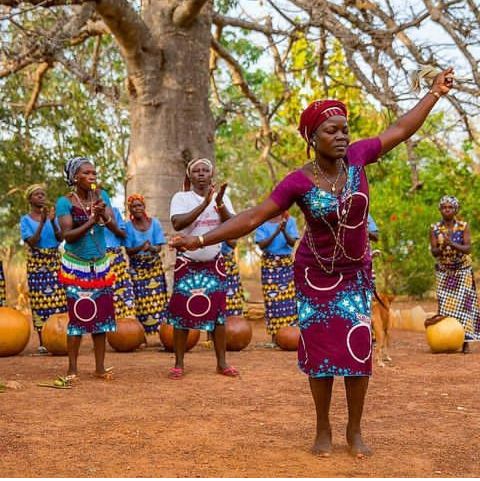
Welcome to Benin, a captivating country located in West Africa. Known for its intriguing history, diverse landscapes, and warm hospitality, Benin offers a unique travel experience that is sure to leave a lasting impression.
Whether you’re an adventure enthusiast, history buff, or cultural explorer, Benin has something for everyone. So, pack your bags, prepare your senses, and get ready to explore the hidden gems of Benin!
Overview of Benin
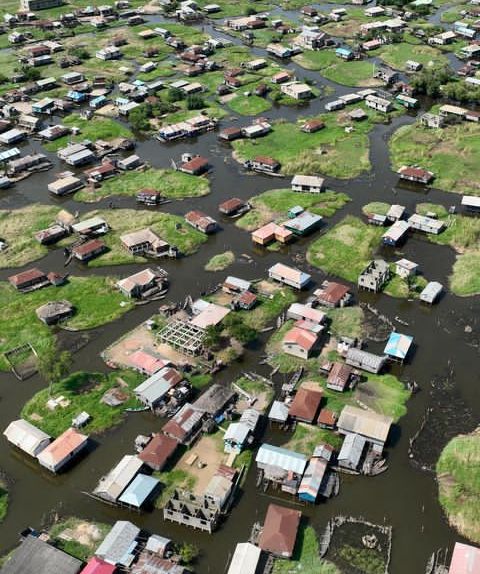
Benin is a country steeped in history and culture in the coastal region of West Africa. From its ancient kingdoms and colonial heritage to its vibrant markets and traditional ceremonies, Benin offers a captivating blend of past and present.
With a population of over 11 million people, Benin is home to a diverse mix of ethnic groups, each with its own traditions, languages, and customs. This diversity is reflected in the country’s art, music, dance, and cuisine, creating a truly unique cultural tapestry.
Best Time to Visit:
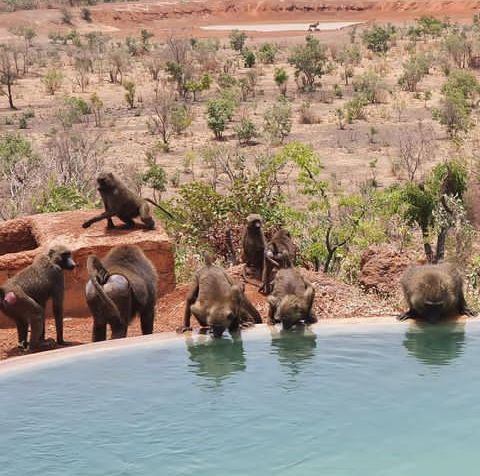
Benin experiences a tropical climate, characterized by two distinct seasons: the dry season and the rainy season. The best time to visit Benin is during the dry season, which runs from November to February.
During this time, the weather is mild, and rainfall is minimal, making it ideal for exploring the country’s outdoor attractions and cultural festivals.
However, if you’re interested in witnessing the traditional Voodoo ceremonies, the months of January and February are particularly significant.
Getting to Benin:
Benin is easily accessible by air, with the Cadjehoun Airport in Cotonou serving as the primary international gateway.
Several international airlines offer direct flights to Cotonou from major cities around the world. Alternatively, you can also enter Benin by road from neighboring countries such as Nigeria, Togo, and Burkina Faso.
Domestic flights and public transportation within Benin are readily available, allowing you to navigate the country with ease.
Visa Requirements:
Before traveling to Benin, it’s essential to check the visa requirements for your country of residence. In most cases, a visa is required to enter Benin.
You can obtain a tourist visa from the Beninese embassy or consulate in your home country. It’s advisable to apply for the visa well in advance of your trip to avoid any last-minute complications.
Additionally, ensure that your passport is valid for at least six months beyond your intended stay in Benin.
Language and Culture:
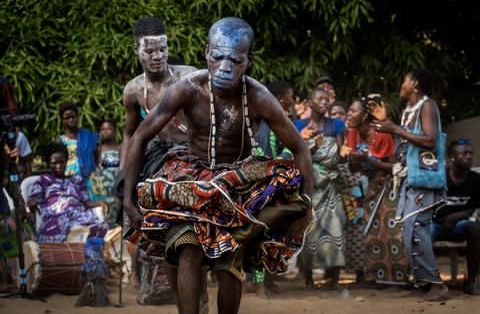
The official language of Benin is French, inherited from its colonial past. However, numerous indigenous languages are spoken throughout the country, reflecting its cultural diversity.
While English is not widely spoken, you can often find English-speaking guides and staff at major tourist sites and hotels.
Embracing the local culture is an integral part of your Benin travel experience, so make an effort to learn a few basic French phrases and engage with the friendly locals.
Currency and Exchange:
The official currency of Benin is the West African CFA franc (XOF). It’s advisable to exchange your currency for CFA francs upon arrival in Benin.
Major credit cards are accepted in some hotels and upscale establishments in larger cities like Cotonou and Porto-Novo.
However, it’s recommended to carry cash, especially when visiting more remote areas or local markets. ATMs are available in major cities but may be limited in rural regions.
Safety Tips:
Like any travel destination, it’s important to prioritize safety during your visit to Benin. While the country is generally considered safe, it’s recommended to take precautions to ensure a smooth and secure journey. Here are some safety tips to keep in mind:
- Stay informed about the current political and social situation in Benin.
- Be cautious of your belongings and avoid displaying signs of wealth.
Use reliable transportation options and be wary of unofficial taxis.
- Respect local customs, traditions, and religious practices.
- Stay hydrated and protect yourself from the sun.
- Follow any travel advisories issued by your home country.
Top Destinations in Benin
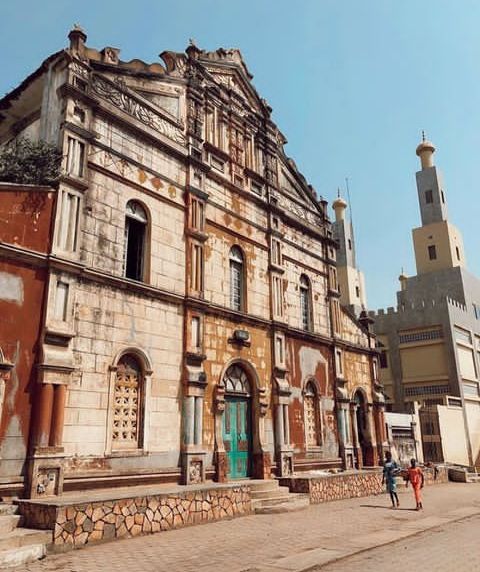
Benin is brimming with remarkable destinations that offer a glimpse into the country’s rich history, natural beauty, and cultural heritage. Here are some of the top destinations to include in your Benin travel itinerary:
Cotonou: The Capital
Cotonou, the vibrant capital of Benin, is a bustling city with a unique blend of modernity and tradition. Explore the vibrant Dantokpa Market, stroll along the scenic Boulevard de la Marina, and visit the awe-inspiring Notre Dame des Apôtres Cathedral.
Don’t miss the opportunity to indulge in delicious street food and experience the vibrant nightlife that Cotonou has to offer.
Porto-Novo: Historic Charm
As the official capital of Benin, Porto-Novo is a city steeped in history and charm. Discover the intricate beauty of the Royal Palace, visit the Ethnographic Museum, and explore the vibrant marketplaces. Immerse yourself in the local culture by attending a traditional ceremony or witnessing a mesmerizing dance performance.
Ouidah: Gateway to the Slave Route
Ouidah holds great historical significance as a major hub of the transatlantic slave trade. Visit the UNESCO World Heritage Site of the Ouidah Museum of History, explore the Route des Esclaves (Slave Route), and pay your respects at the Door of No Return.
Engage with the local community and learn about the traditions and rituals of Voodoo, an integral part of Ouidah’s cultural heritage.
Ganvie: The Venice of Africa
Experience the unique charm of Ganvie, often referred to as the Venice of Africa. This incredible village is built on stilts in the middle of Lake Nokoue.
Take a boat tour through the narrow waterways, visit the local markets, and interact with the friendly inhabitants. Gain insight into the daily lives of the Tofinu people and their traditional fishing practices.
Abomey: Royal Heritage
Step back in time and explore the historic city of Abomey, once the capital of the Dahomey Kingdom. Visit the Royal Palaces of Abomey, a UNESCO World Heritage Site, and marvel at the intricately designed mud-brick structures.
Discover the fascinating history of the kingdom through the exhibits and artifacts displayed in the palaces.
Natitingou: Land of the Somba People
Immerse yourself in the rich culture of the Somba people in Natitingou. This region is known for its traditional mud houses, which are a testament to the architectural ingenuity of the Somba people.
Explore the Tata Somba, fortress-like dwellings that showcase their unique way of life. Don’t miss the opportunity to witness traditional ceremonies and dances that celebrate the Somba traditions.
Pendjari National Park: Wildlife Haven
For nature enthusiasts and wildlife lovers, Pendjari National Park is a must-visit destination. Embark on a thrilling safari adventure and spot a wide variety of animal species, including elephants, lions, buffalos, and hippos.
The park is renowned for its conservation efforts and offers opportunities for guided hikes, bird watching, and camping amidst the picturesque landscapes.
Beaches and Coastal Delights
Benin’s coastline is dotted with stunning beaches that offer relaxation and tranquility. Grand Popo Beach, Fidjrosse Beach, and Ouidah Beach are popular choices for sunbathing, swimming, and enjoying water sports.
Indulge in fresh seafood delicacies at beachside restaurants , take leisurely walks along the shore, and witness breathtaking sunsets over the Atlantic Ocean.
Festivals and Celebrations
Benin is known for its vibrant festivals and celebrations, which provide a glimpse into the country’s cultural heritage.
The Voodoo Festival in Ouidah, held every January, is a fascinating event that showcases traditional ceremonies, music, dance, and colorful costumes.
Other notable festivals include the Gelede Festival, the Zangbeto Festival, and the Fête du Vodoun.
Beninese Cuisine: A Gastronomic Adventure
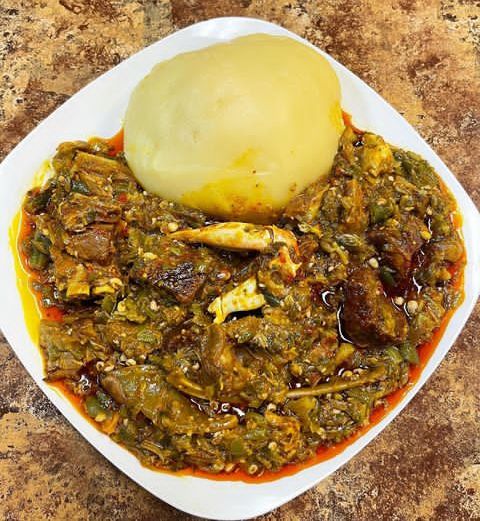
One of the highlights of visiting Benin is indulging in its diverse and flavorful cuisine . Beninese dishes are a reflection of the country’s cultural diversity and are prepared using fresh, locally sourced ingredients.
Don’t miss the opportunity to try dishes like “Pâte,” a staple made from corn or yam flour, and “Aloko,” fried plantains often served with spicy sauce.
Sample the delicious street food, such as “Akassa” (fermented corn dough) and “Gbofloto” (banana fritters). For the adventurous foodies, tasting grilled or roasted bushmeat is an option, but please ensure it’s sourced legally and responsibly.
Local Customs and Etiquette
When visiting Benin, it’s important to familiarize yourself with the local customs and etiquette to show respect for the culture and its people. Here are some essential tips:
- Greeting: A handshake is the customary way to greet someone. In more traditional settings, a slight bow may be accompanied by the handshake.
- Dress Code: Benin is a conservative country, so it’s advisable to dress modestly, especially when visiting religious or rural areas.
- Respect for Elders: Respect for elders is deeply ingrained in Beninese culture. Show deference and avoid addressing elders by their first names unless given permission to do so.
- Voodoo Practices: Voodoo is an integral part of Beninese culture. If you have the opportunity to witness a Voodoo ceremony, observe respectfully and ask for permission before taking photographs.
Shopping in Benin
Exploring the local markets is an essential part of the Benin travel experience. From colorful fabrics and intricate wood carvings to unique handicrafts and jewelry, you’ll find a wide range of souvenirs to take back home.
Cotonou’s Dantokpa Market, one of West Africa’s largest markets, is a treasure trove of traditional African goods. Bargaining is a common practice in Benin, so don’t hesitate to negotiate the price.
Souvenirs to Bring Home
When selecting souvenirs from Benin, consider items that reflect the country’s rich cultural heritage. Here are some popular choices:
- Batik fabrics and clothing
- Wooden masks and sculptures
- Brass and bronze figurines
- Handwoven baskets and bags
- Traditional musical instruments, such as the djembe drum
These souvenirs not only serve as reminders of your time in Benin but also support local artisans and contribute to the preservation of traditional craftsmanship.
Outdoor Activities and Adventures
Benin’s diverse landscapes offer plenty of opportunities for outdoor activities and adventures. From hiking in the Atakora Mountains to canoeing through the waterways of Ganvie, there’s something for every outdoor enthusiast.
Explore the lush forests, encounter exotic wildlife, and take in the breathtaking natural beauty of Benin’s national parks and reserves.
Transportation in Benin
Getting around Benin is relatively easy, thanks to the country’s well-connected transportation network. Here are the primary modes of transportation:
- Taxis: Taxis are a popular mode of transport within cities and towns. Ensure the taxi has a working meter or negotiate the fare in advance.
- Zemidjans: Zemidjans, or motorcycle taxis, are a common sight in Benin. They provide a convenient and affordable way to navigate through traffic and reach your destination quickly.
- Buses and Minibusses: Public buses and minibusses operate between major cities and towns. They are an economical option for traveling longer distances but can be crowded.
- Car Rental: If you prefer more flexibility and independence, you can rent a car from major cities. Remember to have a valid international driver’s license and familiarize yourself with the local traffic rules.
Accommodation Options
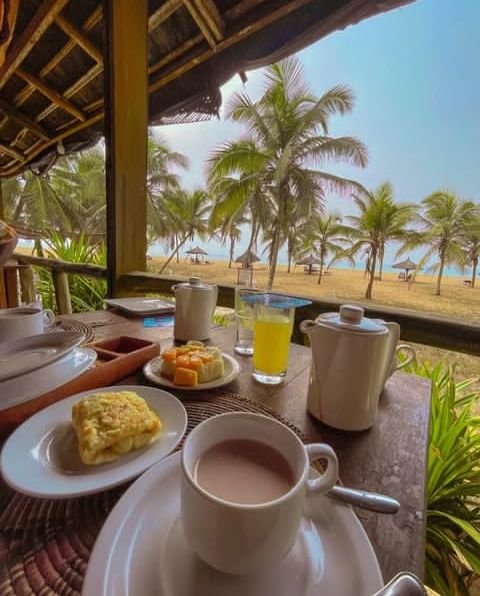
Benin offers a range of accommodation options to suit every budget and preference. From luxury hotels and resorts to guesthouses and budget-friendly lodgings, you’ll find a variety of choices.
In larger cities like Cotonou and Porto-Novo, you’ll find internationally recognized hotel chains offering modern amenities.
For a more immersive experience, consider staying in traditional eco-lodges and guesthouses, which provide an authentic and culturally immersive experience.
Camping facilities are also available in some national parks for those seeking a closer connection with nature.
Travel Tips and Dos and Don’ts
To ensure a smooth and enjoyable trip to Benin, here are some essential travel tips and dos and don’ts to keep in mind:
- Do carry a photocopy of your passport and important travel documents.
- Do dress modestly and respectfully, especially when visiting religious sites.
- Do ask for permission before taking photographs of people, particularly in rural areas.
- Do sample the local cuisine and try traditional dishes for an authentic culinary experience.
- Don’t drink tap water; opt for bottled water to stay hydrated.
- Don’t forget to apply sunscreen and use insect repellent to protect yourself from the sun and mosquitoes.
- Don’t litter; respect the environment and dispose of waste properly.
- Don’t engage in illegal activities or purchase items made from protected wildlife or artifacts.
By following these tips, you can ensure a memorable and responsible trip to Benin.
Thank you for reading this article.
Kindly follow our social media handles and let’s get interactive.
Related articles
Exploring Togo Lome: A Complete Guide to the Capital City
Algeria Travel Requirements: All You Need to Know
Botswana Travel Requirements (How To Apply For The Evisa)
Things To Know About Nigeria Culture
Nigeria: Location, History and Interesting Facts
Kenya Travel Requirements For International Travelers
Ghana Kumasi: Top Places And Best Things To Do
Hidden away in the green folds of Africa, Benin is a small country that few westerners have thought to make a holiday destination, but we guarantee you that once visited it will forever leave you enchanted. Stuart Butler , author of Benin: the Bradt Guide
Despite the extraordinary range of attractions, few westerners have thought to make Benin a holiday destination. But this West African nation offers so much to the adventurous traveller – the birthplace of the much-maligned and little-understood religion of Vodou (voodoo), it drips in ghosts and ghouls, wizards and monsters, giant talking haystacks, people who live in dolls houses and kings who can turn into trees on a whim.
And what makes this French-speaking country so special from a visitor’s perspective is that such characters are a visible part of day-to-day life and encounters with them will likely form the backbone of your Benin adventure.
But there is more than just storybook magic to this Benin. It is arguably the best wildlife destination in West Africa, with a huge array of birdlife and two of the finest parks this side of the continent where heart-in-the-mouth encounters with buffalo, elephant and lion are day-to-day events.
Need more? Well there’s a sad history of slavery that is visible in coastal forts and museums (many American visitors come here to trace their ancestral routes) and there’s a short, sharp strip of empty, palm-backed golden sand beaches, spicy, flavoursome food, loud and constant music and a warm and gregarious people drenched in day-glow colours.
To top it all off travelling here couldn’t be easier – the roads are good, distances small, transport efficient and hotels of a reasonable quality. It’s a very safe and politically stable place to travel, just a short and cheap flight from much of Europe.
Food and drink in Benin
For most Beninese, food is not something that you splash out lots of money on in order to have a divine culinary experience. Food is just something you need in order to survive and for that reason the average Beninese culinary experience is not something you will remember fondly for years to come. Having said that, the liberal use of spices and wide variety of ingredients means that Beninese food is considerably better than in many African countries.
In fact, Benin and neighbouring Togo are renowned throughout West Africa for having the best food in the region and the secret to Beninese cooking lies firmly in the sauce used, which is often fairly spicy.
Despite the fact that Beninese food has a good reputation in West Africa there are, like the cuisines of every nation, some decidedly unappealing delicacies such as okra (a green sludge that pops up with alarming frequency), giant snails which come without the garlic or in the easily downed bite-size nibbles of French escargots , and grasscutter (cane rat), a large rat-like rodent that in fact tastes much better than it sounds.
Away from such exotics you can expect most meals to consist of a starchy, filling staple draped in sauce and, if you pay a little more, a sprinkle of meat, though this is normally more fat and bone than succulent steak. Aside from agouti , bushmeat is very rarely eaten in Benin (unlike in some nearby countries where monkey and other ‘delicacies’ are found in many a meal).
Whatever else you do in Benin you can rest assured that you’ll be knocking back the drinks. In a hot and sticky climate such as this you should, as a minimum, drink at least three litres a day just to replace the fluids lost through sweating.
Starting with the ubiquitous symbols of globalisation, Coca-Cola and its cousins Fanta and Sprite are available everywhere you look. You can go to the smallest, poorest village with next to nothing to eat anywhere and be almost certain of finding a bottle of Coke. Where the US versions aren’t available their place is normally taken by one of the several local companies producing their own versions of these same drinks though they are normally much sweeter and not quite as refreshing.
It doesn’t take long for these sugary drinks to lose their appeal and, fortunately for such times, you can often find bottled pineapple or mango juice or, for something a bit different, Moka, an iced coffee-style drink that takes a little getting used to but is more refreshing than most soft drinks.
Real lifesavers are the Songhai centres that can be found in a few towns; they often sell beautiful homemade natural juices (and yoghurts). On the coast someone can always be found chopping the heads off coconuts to provide a delicious, cold and healthy drink. Possotomè is the big name in mineral water. It comes from the town of the same name on the banks of Lac Ahémè and, should you really get into it, you can even arrange to visit their bottling plant there!
Health and safety in Benin
Benin, like most parts of Africa, is home to several tropical diseases unfamiliar to people living in more temperate and sanitary climates. However, with adequate preparation, and a sensible attitude to malaria prevention, the chances of serious mishap are small.
To put this in perspective, your greatest concern after malaria should not be the combined exotica of venomous snakes, stampeding wildlife, gun-happy soldiers or the ebola virus, but something altogether more mundane: a road accident. Within Benin, a range of adequate (but well short of world-class) clinics, hospitals and pharmacies can be found around Cotonou and other major towns.
Facilities are far more limited and basic in rural areas. Doctors and pharmacists will generally only speak French, although at major hospitals in Cotonou a good English-speaking doctor can normally be found. Consultation and laboratory fees (in particular malaria tests) are inexpensive by international standards – so if in doubt, seek medical help.
Major hazards
People new to exotic travel often worry about tropical diseases, but it is accidents that are most likely to cart you off to hospital. Road accidents are very common in many parts of Benin, so be aware and do what you can to reduce risks: try to travel during daylight hours and refuse to be driven by a drunk.
Probably the biggest threat your to safety in Benin is while swimming in the sea, particularly during the wet season, when the water is rough and the currents strong. Many people drown each year and the so-called ‘lifeguards’ at Grand-Popo are nothing of the sort. Unless you are a very strong and experienced swimmer in rough waters then keep well away.
Female travellers
Benin is a very macho society and women travellers, especially those travelling alone, should expect some unwanted attention. In almost all cases this will be limited to men trying to start conversations with you, officials using their power to have more of your company than is really needed, and general whistling and cat-calls.
Sexual assault or rape against female travellers is very rare. Women should be careful if out in bars and clubs alone at night in the bigger towns, but the risk is really no greater and in fact normally less than you would face at home. However, things may change as tourism increases, and it’s certainly sensible to listen to local advice about any areas where violent (or petty) crime is rife.
Female hygiene items are only reliably available in Cotonou and possibly Parakou.
Travelling with a disability
Benin would be a very hard country for travellers with a disability to travel in. People will go out of their way to try and help you, but the simple fact of the matter is that there are no disabled facilities, pavements are non-existent, roads and paths rough, and elevators are only available in a few topend international chain hotels in Cotonou.
These same hotels are the only ones where you might find mobility-impaired rooms available. For further information, the UK’s gov.uk website provides general advice and practical information for travellers with disabilities preparing for overseas travel.
LGBTQ+ travellers
LGBTQ+ travellers should be very discreet. As with almost all sub-Saharan countries homosexuality is deeply – sometimes violently – frowned upon and most of sub-Saharan Africa simply does not believe that lesbianism exists.
On the positive side, it’s common for men to hold hands as a sign of friendship and for travellers (foreign or Beninese) of the same sex to share hotel rooms (but not beds), and so as long as there are no public displays of affection (other than hand holding), then few people would likely realise.
Travelling with children
Benin’s small size and generally reasonable roads and fairly comfortable hotels means that it’s one of the better West African countries for (very) adventurous family travel. However, it definitely suits older children (ten years plus) more than young children. Younger children are likely to find it too hot and humid and the towns are hardly child-friendly.
Travel and visas in Benin
For most people, three documents are required to enter Benin:
- a passport with at least six months’ validity left on it
- a valid visa
- a yellow-fever certificate
Standard tourist visas for Benin are easy to obtain for most Western nationalities although exact requirements vary from embassy to embassy. Visa rules and regulations seem to be in a state of flux at the moment and it’s important to check the information below with embassies and online in case it has changed. At the time of research visas were not available on arrival, and it was necessary to get a visa in advance either online or through the nearest Beninese embassy or consulate in your home country.
E-visa applications should be made through evisa.gouv.bj , and applications take 48 hours to process. You need to bring a printout of the visa with you to Benin. If, however, you still want to obtain a visa the old-fashioned way, then you will need to send or take your passport, a passport photo and a completed application form (available at the embassy) to your nearest embassy or consulate. Visa costs are normally the same as for the e-visa. Depending on the embassy or consulate, it might be possible to get the visa issued while you wait. In other cases, though, the embassy or consulate might just direct you to the e-visa website, so it’s wise to contact them in advance to check that they will issue you a visa (rather than direct you to the e-visa system).
Getting there and away
Those on an extended African overland adventure will arrive by land, through Togo, Burkina Faso, Niger or Nigeria, with the Togo route being the most commonly used. Togo and Nigeria both have multiple border-crossing points with Benin, virtually all of which can be used by tourists, though the most traffic is along the coastal routes which link Cotonou with Lagos and Lomé (all of which are open 24 hours).
Air travel is a more likely option for those either arriving in Benin on business or holidaying exclusively in Benin and its neighbouring countries. Cotonou is the only airport in the country for international flights. A growing number of airlines are serving Cotonou, but even so the city is not a big name in the airline world.
Getting around
Not only is Benin a small and narrow country in which almost all places of interest are a short and direct journey from each other, but also, compared with those of many African nations, its road system is also relatively good. All main roads are surfaced, and though there are pot-holes they’re not generally as large and common as in many a neighbouring country.
International agencies such as Hertz have offices in Cotonou, but car hire is generally very expensive; if you want to hire a vehicle that you drive yourself, you’ll need to use them. Otherwise local rental agencies and tour companies provide vehicles complete with driver, the cost of whose food and accommodation is generally (but not always) included in the price.
Taxis in Benin are the most common form of public transport and they run to almost every town and village in the country. Between five and seven passengers are expected to squeeze, sardine-like, into the car alongside the driver who covers a set route. Seat prices are often (but not always – it all depends on supply and demand) higher than in a bus but in real terms are still cheap.
For longer journeys a bus is almost always preferable to a share taxi. Buses generally leave (roughly) on time and maintain a one-person, one-seat policy, which makes them far more comfortable than share taxis which like to try and squeeze around 8½ people on to each seat! Many of the better companies have airconditioned buses. Try and make bookings the day before, though if you can’t, don’t worry too much as there are normally seats going spare. The two best-regarded bus companies are ATT and Confort Lines.
The normal way of getting around a town is on the back of one of the legions of zemidjans that buzz like flies around every town and village in the country. A zemidjan (or zemi as it’s normally referred to both in this book and in day-to-day speech) is a small motorbike on which the passenger sits precariously just behind the driver. If you have much luggage then they are near enough impossible to use – not that that will stop the driver from trying and, with or without luggage, they are for many tourists one of the worst aspects of Benin.
When to visit Benin
Benin has two very distinct seasons – the wet and the dry. These two seasons can be further sub-divided. The wet season corresponds to the northern hemisphere summer of May/June through to September, while the dry season fills the remaining months of the year. You might think that the best time to visit Benin is during the dry season and this would largely be true, but of course we’re talking about the weather so nothing is as simple as it seems.
The wet season for a start isn’t that wet – at least when compared with some of the other countries on the block. Sure, in the south at least, it rains most days and when it does so it’s impressively heavy, but this rain normally only lasts for an hour or so in the evening.
The good thing about the wet season is that it’s the coolest and greenest time of year and so for many people is actually quite pleasant. On the downside, though, the mosquitoes are out in force, some minor roads are impassable, the beaches are rough and not safe for swimming and the national parks are closed or very difficult to get about in.
In general, therefore, the best overall time to visit Benin is in the cool dry season running from October to December, with November being probably the best month as well as one of the quietest in terms of other tourists.
Apart from the weather factor, January can also be a good month to come, as this is when magic and Voodoo are at their most accessible thanks to the Voodoo Day celebrations on 10 January.
Sitting entirely in the northern hemisphere tropics, Benin has a wet tropical climate in the south dominated by a strong monsoon between late April and early October (though it can rain at any time) and high temperatures and humidity all year round.
The north is similar but its monsoonal rains are far weaker, humidity less and overall temperatures higher. In April and May the temperature frequently climbs to an overwhelming 45ºC and more! The rains here tend not to start until early June and are over by mid September; rainfall outside of the rainy season is far less likely in this region.
Things to see and do in Benin
With walls made of blood and palaces containing thrones balanced on human heads, the royal city of Abomey is the gory Buckingham Palace of Benin and after Timbuktu and Zanzibar is one of the most celebrated of old African towns.
Its former name, Dahomey, is a French corruption of the original Fon word for the city, Danhomé, which means ‘In the belly of Dan’, and it was a name that was once whispered in fearful awe by the citizens of the surrounding kingdoms as well as in the civilised drawing rooms of 19th-century Europe.
It was a name that had enough chill in it to send a shiver down the spines of anyone who had ever crossed its path. Its kings, descended from the son of a princess who slept with a panther, were protected by the only genuine Amazon army the world has ever known, and they lived a life of extreme brutality.
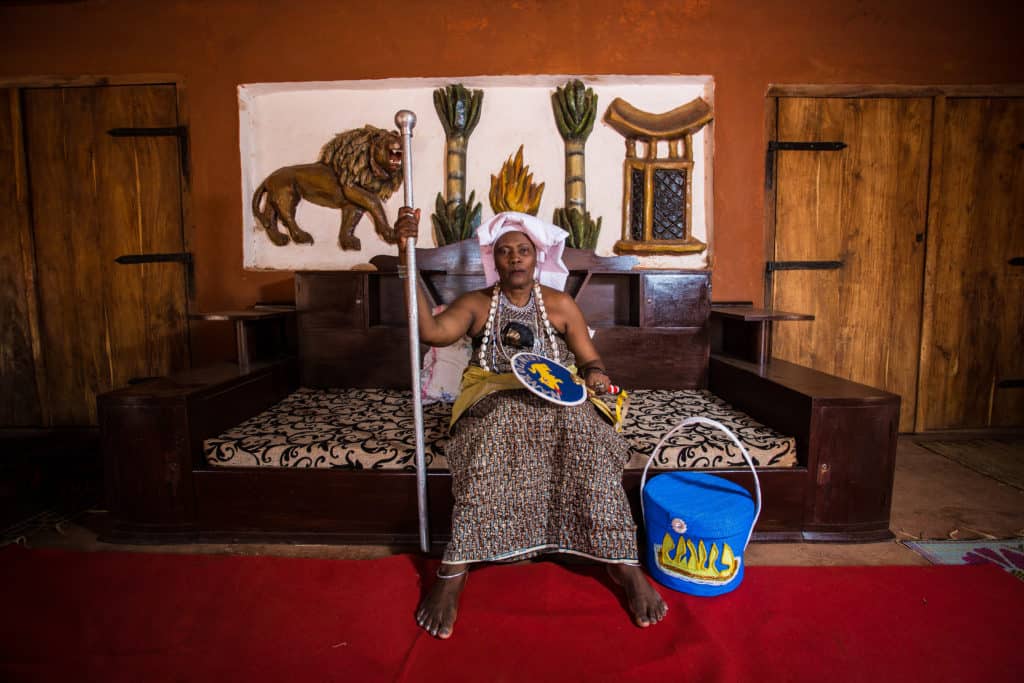
The walls of their city were festooned with the severed heads of enemies and former friends of whom they had grown tired. To relax they feasted on a harem of hundreds of virgin girls and for sport they fulfilled their coronation vows by expanding the size of the kingdom they had inherited through war. To fund it all, the many prisoners generated from this constant state of warfare were wrapped in chains and sold to the European slavers in Ouidah and other coastal towns.
For many years it was a city forbidden to foreigners and of those who were compelled to try to make it here, some in disguise and some on the invitation of the king, few returned to Europe to tell the tale.
It was a city that became so powerful that it gave even the French colonial machine a serious run for its money and it was a city of such doomed extravagance and wealth that inevitably it became no more than a name of legend and mystery and, like Timbuktu with its similar echoes of past grandeur, is to some extent a disappointment for the modern tourist. However, although the fear has faded and the old wealth and extravagance are now no more than an almost unimaginable dream, it still goes without saying that Abomey should be one of the first places you rush to in Benin.
Dassa-Zoumé
North of Bohicon Benin’s countryside loses much of its sheen of green and becomes noticeably drier with acacias and baobabs starting to replace the palms and bananas, and the population density thins dramatically. Of the few towns of note between Abomey and Parakou, Dassa-Zoumé, the town of 41 hills and normally known just as Dassa, is the largest and best organised for tourists. In fact, each August it becomes the biggest tourist centre in Benin as thousands of Catholic pilgrims descend on the grotto just outside of town where the Virgin Mary is said to have once appeared.
In addition to Christian spirits there are plenty of Voodoo spirits in the hills and, for tourists, there is walking or, a little further afield, wildlife spotting in the form of hippos. The best thing about Dassa-Zoumé, though, is the atmosphere; you start to feel the tempo downgrading from the often-hectic coastal lands into something altogether more relaxing.
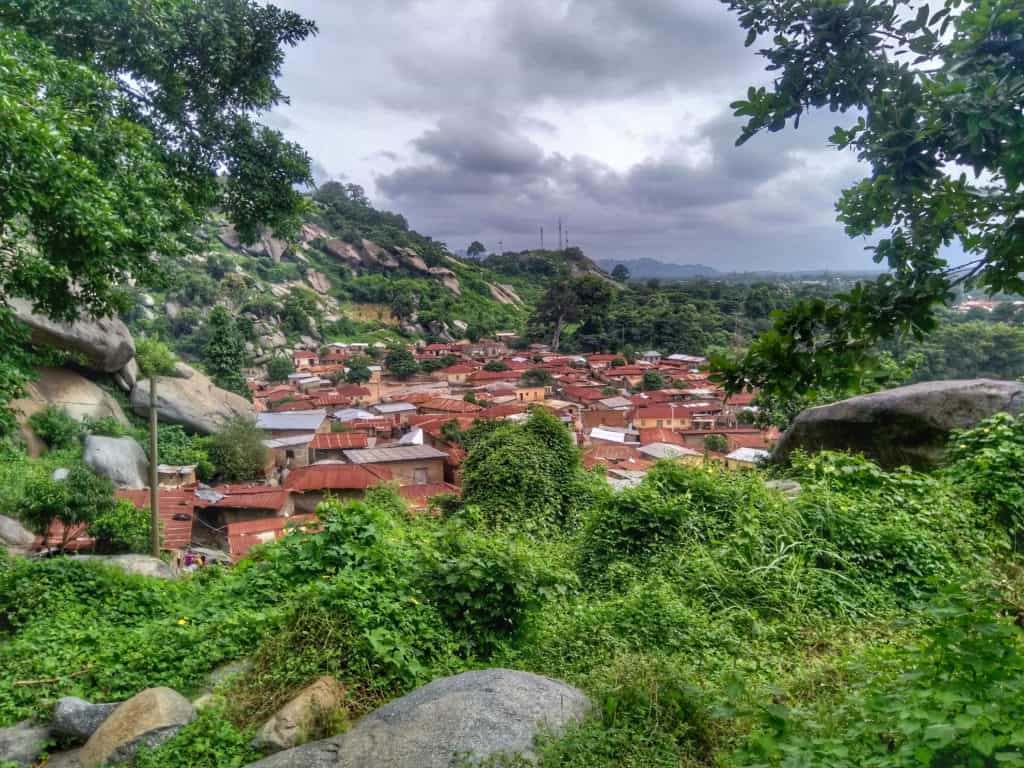
The town’s main attraction is the enormous basilica, a 10-minute walk south from the centre on the road to Bohicon. Built next to the grotto where, in 1954, a statue of the Virgin Mary is said to have miraculously appeared, the basilica was first opened in 2002 and, from behind, its architectural style appears to be loosely based around that of a multi-storey car park. Things don’t improve much inside. The great hall seems to contain as much religious feeling as a supermarket on a Saturday afternoon, but you’d be hard pushed to find a supermarket with such a memorable wall frieze – a giant crucifix bursting magnificently out of the clouds. The grotto, where the statue of the Virgin Mary appeared, is just beyond the basilica and is a little less tacky, though only marginally.
Behind the grotto a trail winds up into the hills past the 14 Stations of the Cross, each marked by a small statue. The pious are supposed to complete this by crawling on their hands and knees over the sharp granite rocks; today, though, most people are too busy taking selfies to do this. Services take place in the basilica every Sunday with the last one of the month being the busiest. During Christian religious holidays the basilica and grounds fill up with tens of thousands of pilgrims. The busiest time of all is during the three-day pilgrimage that culminates on 15 August. The faithful come from across West Africa and even Europe to attend. In 2002, Pope John-Paul II led Mass here during the pilgrimage.
Created with the aid of crocodiles, egrets and more than a little magic, the extraordinary aquatic stilt village of Ganvié has been called ‘the Venice of Africa’. This isn’t an entirely fair comparison, as you wouldn’t choose Ganvifor a romantic weekend, but it does get across the point that the village, sitting pretty on the 26,000ha Lac Nakoué, is one of a kind. Like in Venice, water and beauty are the overriding impressions, but unlike Venice, which feels like a manmade city in which water just happens to be all around, Ganvié seems to be nothing short of an organic creation – a town where nature went a little off the rails and the reeds and weeds just grew up into living houses, shops and a marketplace.
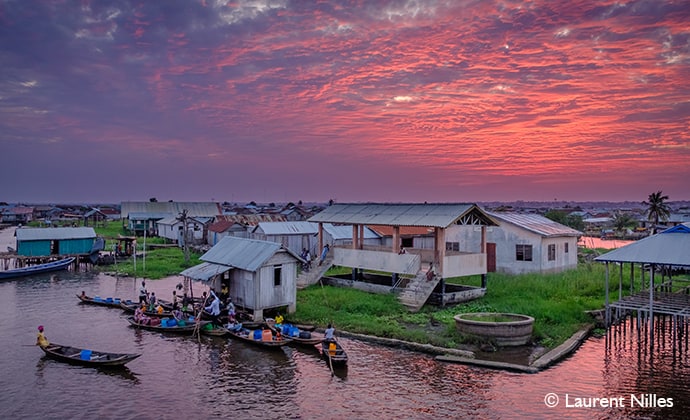
If Venice is dominated by water then Ganvié is positively drowning in the stuff and almost all of the houses are built not beside the water, but on it and above it. The locals eat on water, sleep on water and work and play on water. There can be few people so easy in the company of water as a Ganvié resident and, as a tourist attraction, it is second to none. This is a fact that has not gone unnoticed by Benin’s fledgling tourist industry and, alongside Abomey and Ouidah, Ganvié has become one of the highlights of Benin that you can be sure is on every visitor’s list of places to tick off. So, be prepared to rub shoulders with, well, maybe one other pirogue full of visitors. Yet, despite it being one of Benin’s, or maybe even West Africa’s, top attractions, you would be unfortunate if you found yourself sharing your visit here with more than half a dozen others.
If you arrive for the first time in Ouidah in the early morning or late afternoon, when the air is at its coolest, you will be struck immediately by the quality of the light. The deep colours of the houses radiate with a golden glow and the reds and purples of the people’s clothing seem to burn like flames. At a time such as this art and spirituality seem positively to ooze out of the very fabric of the town’s houses and religious buildings.
If, on the other hand, your first arrival in Ouidah is in the white heat of the middle of the afternoon, then your initial impressions will be very different. The energy of the town seems crushed, the noises of day-to-day life are strangely suppressed by the heat and the people are listless. Then it is not hard to see Ouidah as a town of pain and suffering.
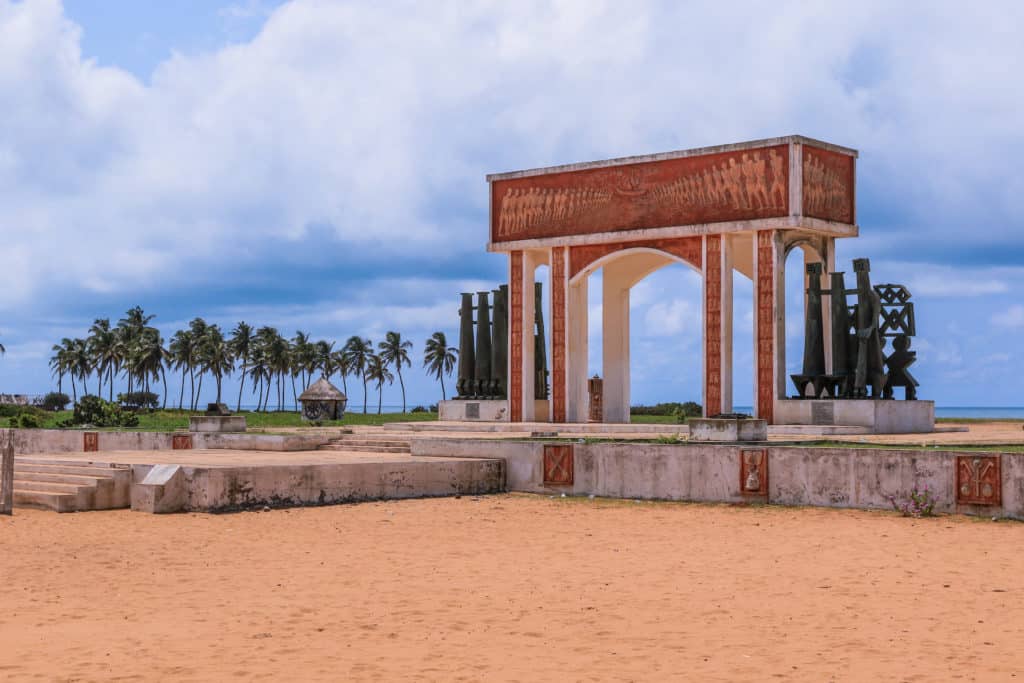
In fact, both of these first impressions are correct, for Ouidah is a town of extreme contrasts. It is one of the most infamous names in the Atlantic slave trade that dragged millions of beaten and broken Africans to the New World, but it is also the spiritual capital of the country with a thriving and lively Voodoo culture and, maybe because of the quality of the light, it is also something of a regional artistic centre. Whether your reasons for coming are a search for your roots, a search for magic, a search for art or just a search for the perfect spot to lie on the beach under a coconut tree, Ouidah will not disappoint.
For many people Ouidah is one of the main reasons for coming to Benin and the town learnt years ago how to look after these guests. This means that tourist facilities are better here than almost anywhere in the country. Despite an ever-increasing number of visitors, especially those from the diaspora returning to see the homeland of their ancestors, Ouidah never really feels overrun with tourists (except during the annual Voodoo festival). An almost compulsory read for every visitor is Bruce Chatwin’s brilliantly crafted semi-fictional novel, The Viceroy of Ouidah .
Parc National de la Pendjari
Lion, elephant and cheetah in West Africa? It’s commonly said that you go to East Africa for the wildlife and West Africa for the people. In many ways this is a fair comment, but in the Pendjari National Park this statement is turned on its head. On the scrubby plains of Pendjari it really is possible to see lion, elephant, cheetah and a host of other animals.
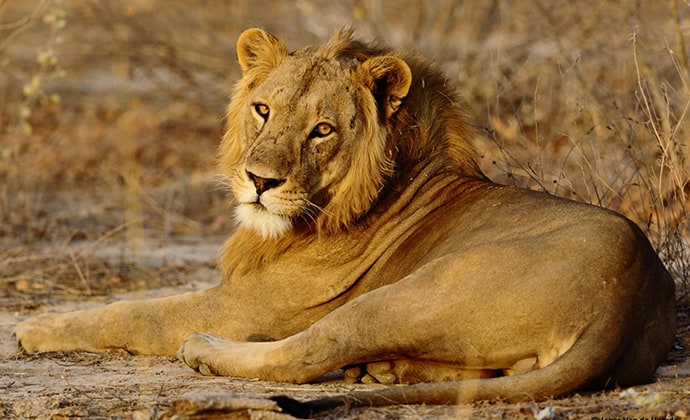
Created in 1961, added to UNESCO’s World Biosphere Reserves list in 1986 and made a UNESCO World Heritage Site in 2017, Pendjari is the largest remaining intact ecosystem in West Africa and a last refuge for a large number of West African animals. It is, quite simply, the greatest savannah national park in all of West and Central Africa and while it’s true that it cannot compete with Tanzania’s Serengeti National Park for the sheer number and variety of animals and scenic beauty, Pendjari is easily the equal of many other parks and reserves in eastern and southern Africa. And what’s more, thanks to recent international support and development (primarily through the acclaimed African Parks organisation), Pendjari is rapidly getting even better.
Almost every visitor will get to see elephant, buffalo, kob, waterbuck and hartebeest as well as a rainbow of different colourful birds. Anyone who spends more than a night or two here also has a very good chance of enjoying the thrill of staring wide-eyed at a lion. However, the cheetah take a bit more perseverance, as do leopards. We recommend spending two full days and a night inside the park to get the most out of it, better still three full days.
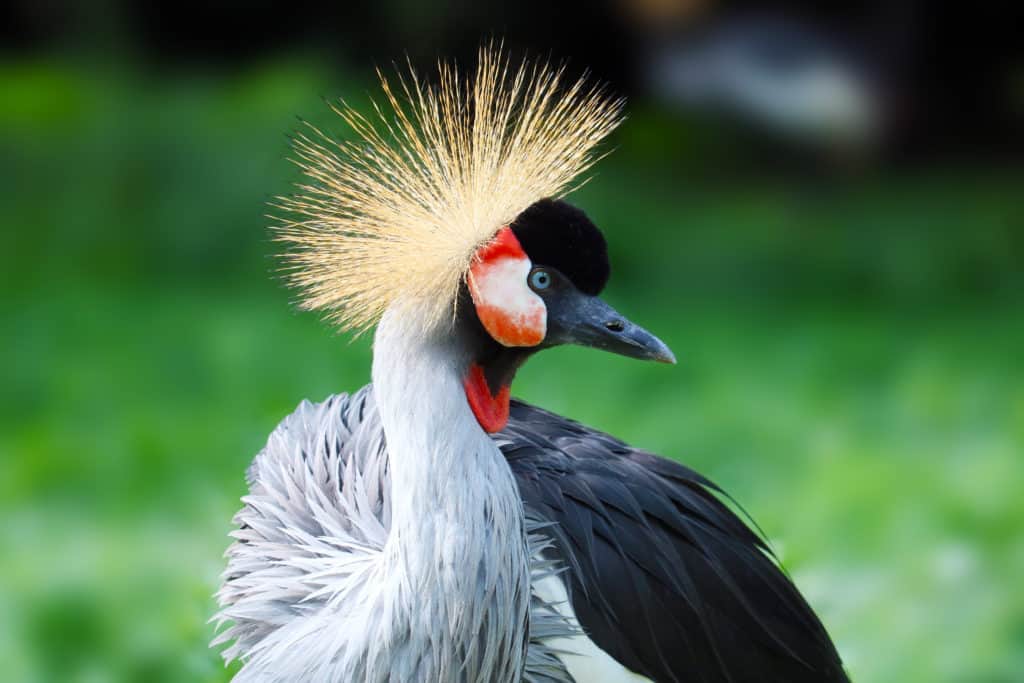
Pendjari is actually only one part of a much larger wilderness area that also incorporates Benin and Niger’s trans-boundary Parc National du W, and Burkina Faso’s Parc National d’Arli (it’s hoped that one day these will all merge into one huge trans-boundary park), but Pendjari is by far the easiest and most rewarding of all these parks to visit.
Porto-Novo is the political, if not commercial, capital of Benin. Yes, it’s hard to believe, because in comparison with Cotonou it seems like just a small and forgotten provincial town, but it’s true. In fact you have to feel a little bit sorry for Porto-Novo, because it really must struggle with feelings of insignificance. On the one side it’s got Cotonou, its younger, upstart neighbour 40 minutes to the west who’s gone and stolen all the facilities, all the jobs, all the entertainment and all the hopes; and an hour or so to the east, it’s chewed up, mashed about, digested and chucked back up by the immense belly of the city that is Lagos. But Porto-Novo isn’t overawed by its constantly growing cousins; in fact it just sits there coolly claiming to be the capital that, in all but paper, it is not. And it’s all the more endearing for it.
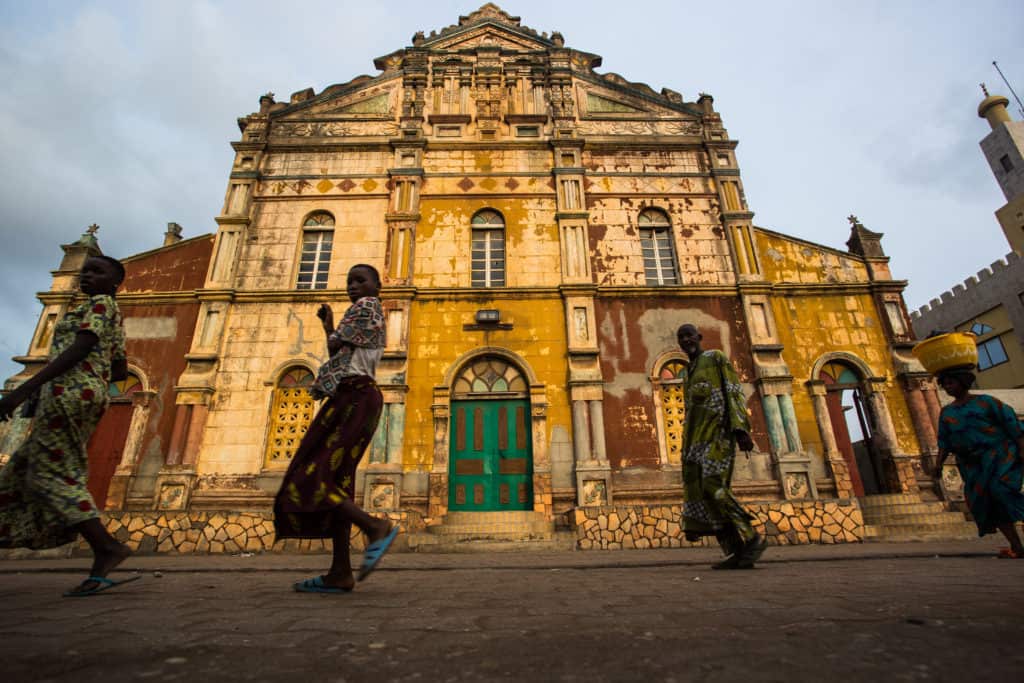
Porto-Novo is often overlooked in most visitors’ itineraries, which is a real shame because in many ways it’s actually the most interesting urban centre in the country as well as one of the most physically attractive.
Possotomè and Lac Ahémè
One small frustration of travelling around Benin (or almost any other African country for that matter) on public transport is the difficulty of seeing anything more than a fleeting glimpse of rural village life through a dirty bus window and not actually being able to stop and soak it in properly. This is somewhat ironic as most people don’t come to Africa to visit big, polluted cities; they want to spend time in the little villages. If you have your own transport then this is not a problem and Benin is littered with hundreds of villages you can stop off in, but if you are travelling around south Benin on public transport then Possotomè, home of the ubiquitous mineral water, might be the best chance you get to have a close look at the day-to-day events of a small village.
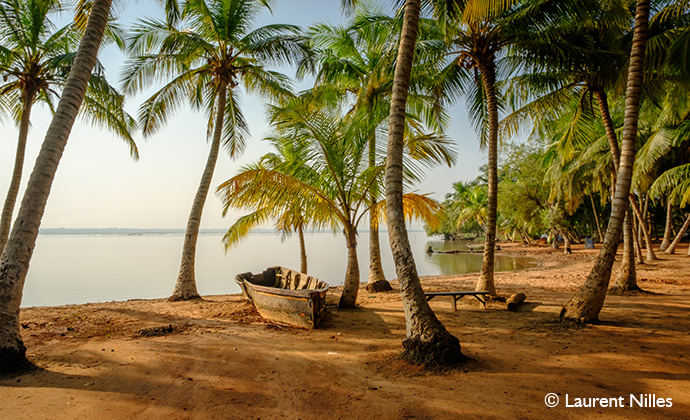
Set on a deliciously green hill just above Lac Ahémè, Possotomè is a wonderfully friendly little village that offers a number of interesting excursions out on the lake or to nearby night markets. It is highly recommended if you find Grand-Popo just not quite what you came to Africa for. There are no real facilities of any sort in the village, so come prepared.
Tanéka Koko
There are a number of villages scattered over the rocky and scrubby landscape around Djougou, but only one, Tanéka Koko, welcomes visitors. With mud-and-wattle houses and thatched roofs spirited away under the shade of big trees, the village appears from a distance to be just like any other in Africa. However, once inside you will realise that all of the buildings are actually far smaller than you originally thought – it’s hard to believe that anyone can actually fit inside the houses. It’s as if the entire village has shrunk in the wash.
Though their houses and villages might be very different from those of the more famous Somba to the north, the two groups retain a lot of cultural similarities as well as much of their traditional tribal lifestyle. However, today the modern world has started to catch up with the Tanéka villages and people and while the headman and the healers (of which there are several, each of whom specialises in a different illness) might spend their days sitting around the village smoking long bone pipes, wearing animal fur clothes (and, one gets the impression, waiting for passing tourists …), most of the remaining population wear T-shirts and trousers and live in larger, brick- and tin-roofed houses, located just down the hill from the original village.
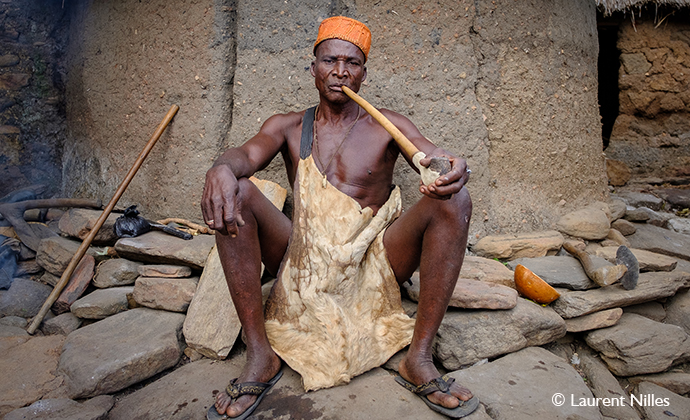
Many of the local young people also leave the Tanéka villages as soon as they can in search of brighter financial prospects in the big cities. Even so, the most important people in the community remain the headman and the healers and some old customs are still very much alive. On one of the days we visited we witnessed a male circumcision ceremony and other ceremonies and festivals are fairly common. These are often linked to important coming-of-age dates and harvests.
Tata Somba Villages
Southwest of Natitingou a minor road winds through the Atakora Mountains, whose heights reach only a very modest 658m. Nevertheless, in a country as flat as Benin this is pretty exciting stuff and the scenery, it cannot be denied, is very impressive. It is best appreciated at the very southern edge of the escarpment, at the viewing platform known by the tongue-twisting name of Koussakouangou.
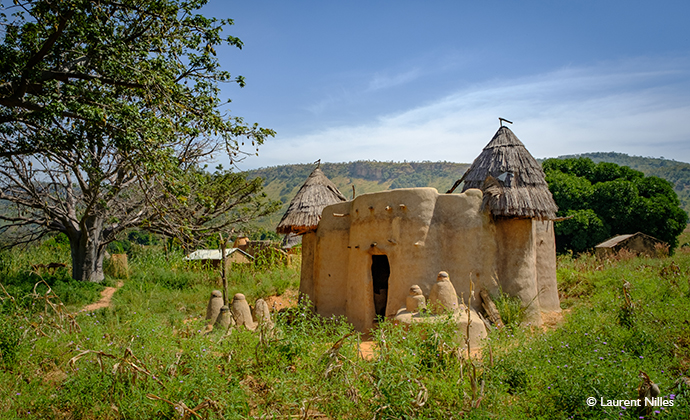
Try to get here for the early morning when the air is likely to be at its clearest and the views, right across the Somba country and off into nearby Togo, at their best. From here the road bends, corkscrew like, down off the plateau, depositing you finally at the village of Boukoumbé, which is the launching pad for the largest concentration of Tata Sombas, those truly unique fortified houses inhabited by a people who, until very recently, have kept their tribal traditions alive and pure.
Related books
For more information, check out our guide to Benin :
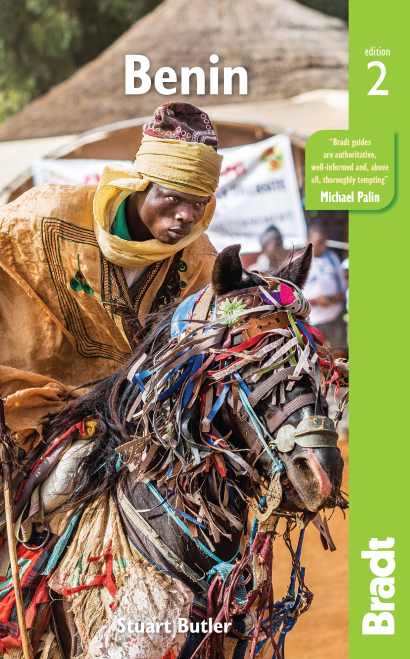
Related articles
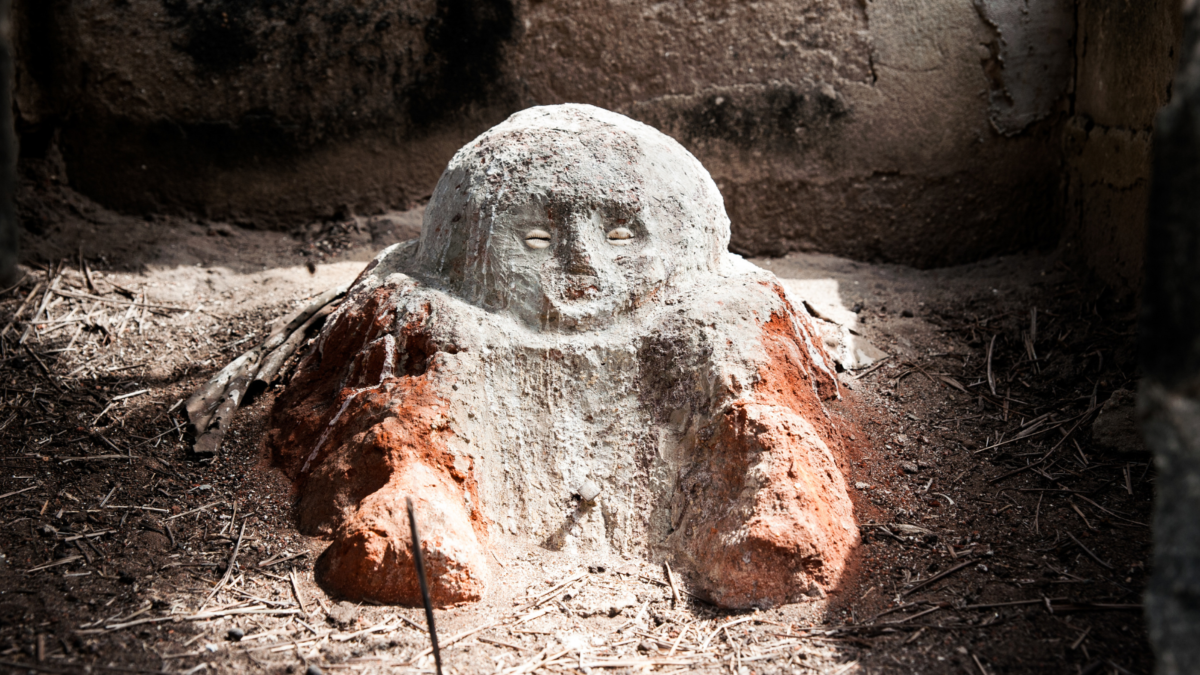
Voodoo in Benin: the Bradt guide to gods, ghosts and dead people
This animistic religion has over 50 million followers in West Africa.
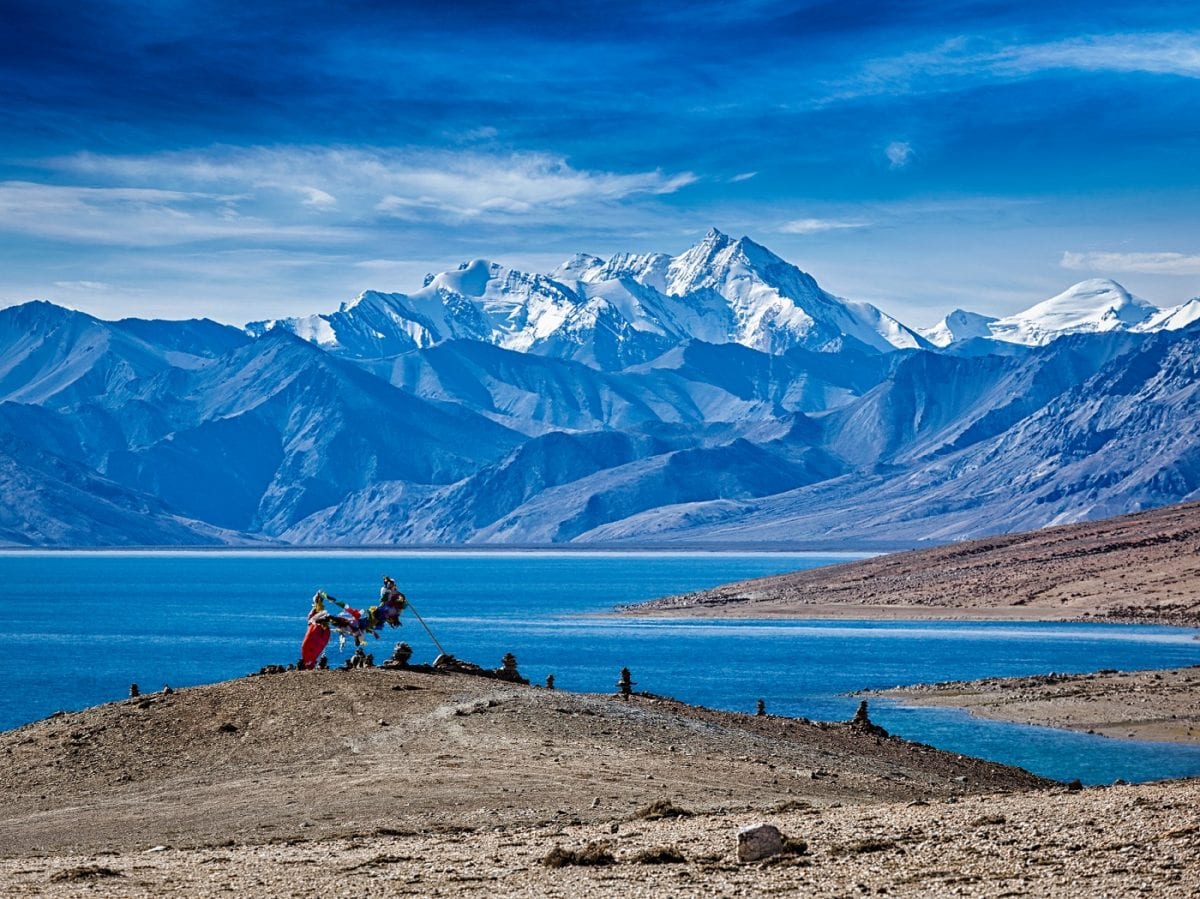
The most impressive lakes in the world
From boiling lakes to vast alpine bodies of water, these are our favourite lakes from around the world.
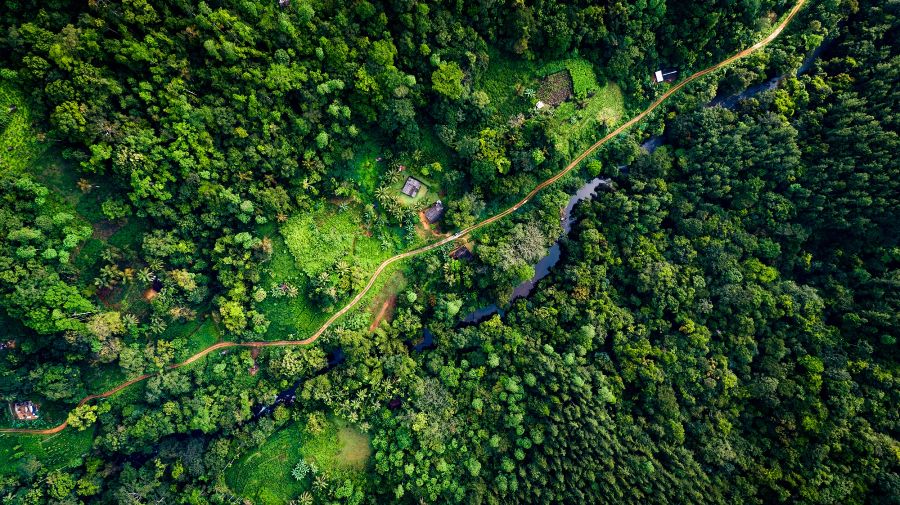
Seeing the wood for the trees: 11 of the world’s most spectacular forests
Covering even more of the world than our guidebooks, forests are ubiquitous but almost always different.

The climate of Benin and when to visit
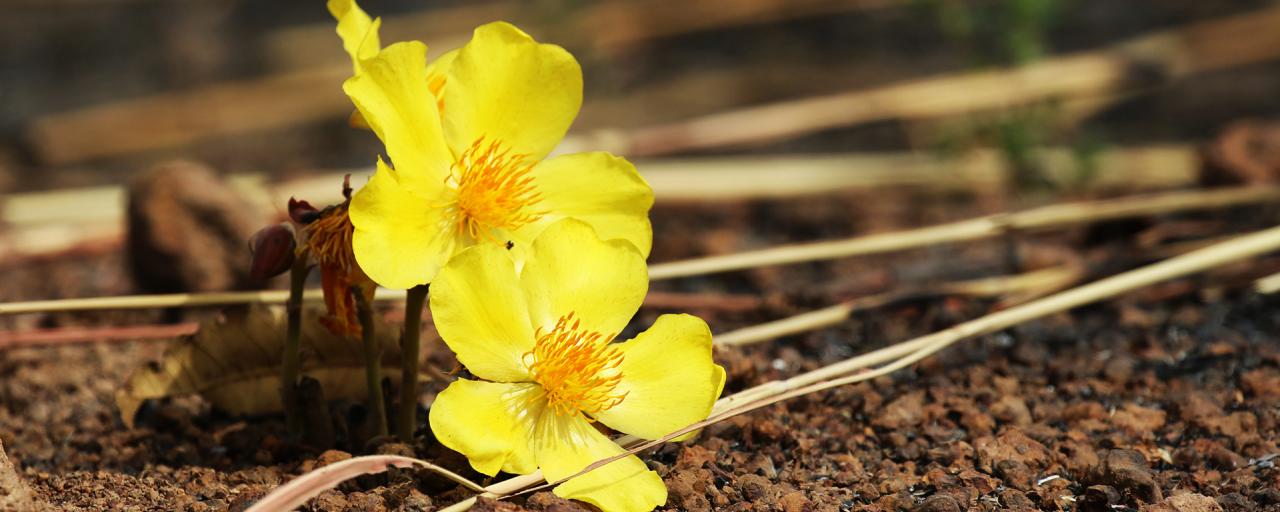
Benin is characterized by a tropical climate with two distinct seasons, a rainy season and a dry season.
The rainy season runs from April to early November but sees a break during August that divides the rainy season into two; the most rainy and sultry months are May and June on the coast and July and September in the center-North of the country.
In Benin the climate is warm and humid throughout the year, but during the winter, from November to January, the air is dry and it does not rain; this is the best time to go and visit this country.
Winter is hot sometimes torrid especially in the North, while the coast is less hot but much humid and this causes the highest perceived temperature however you can find cool in the waters of the Atlantic Ocean; Benin's ocean waters are warm, hotter in the winter, however they are never cold during the year.
In Cotonou, the country's economic capital on the coast, the average annual temperature is around 31 ° C, the lowest around 24 ° C.
In winter, in the months from November to February, a wind from the Sahara Desert, the harmattan, is constantly blowing from North-East; this wind, which carries dust and sand with it, reaches the coasts of West Africa and, as it moves away from the Sahara, it loses its power.
In the days when the harmattan blows stronger, the sky is filled with clouds of dust and creates a hugely pink haze, especially in the early hours of the day.
The harmattan causes a sharp drop in humidity and relative tropical heat, that makes the air warmer during daylight hours and, above all, gives cooler evenings and nights.
Thanks to the benefits of harmattan, Western Africans have nicknamed this wind "the doctor", but the airlines do not think the same way because low visibility on windy days causes delays and cancellations of flights.
For those who go to Benin to admire its wild and remote nature, the best period depends on what you want to see.
If you are interested in sighting animals, especially mammals in national parks and in nature reserves, the best time is during the dry season in the months from November to February; in fact, during this period, vegetation is scarce due to the absence of rain, and the animals gather in the vicinity of the few perennial water sources.
While for birdwatchers the best time is during the rainy season as the birds find more sources of food in the natural parks; and from March to April there are also several migratory species that fly here from other parts of Africa and also some paleartic species that stand in these areas before embarking on their journey to the North.
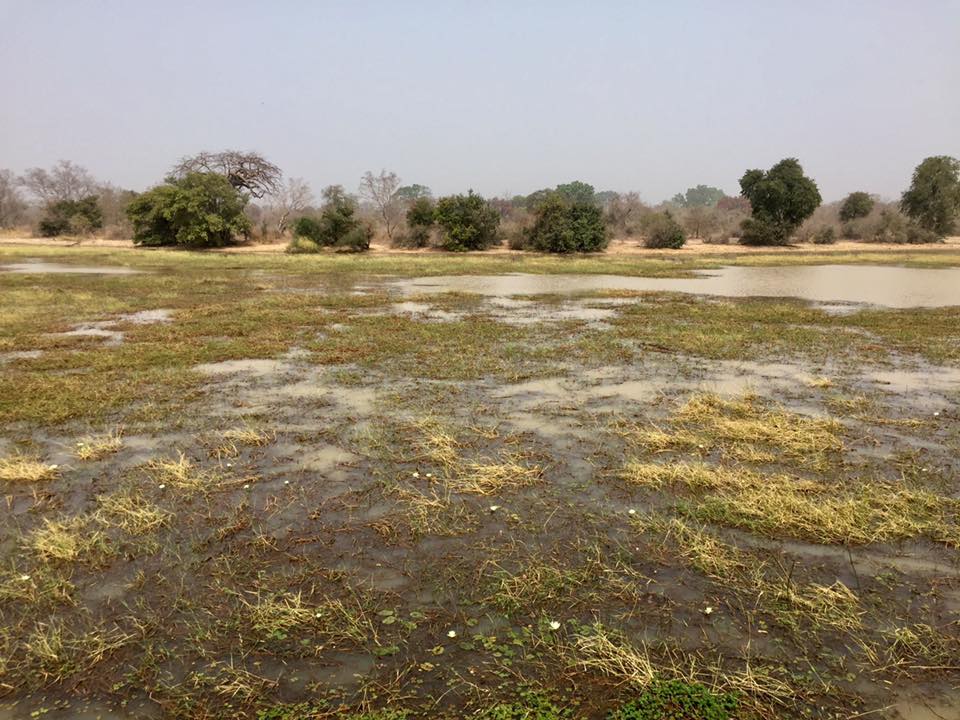
Wild flower in Pendjari National Park - Photo Credits: Romina Facchi
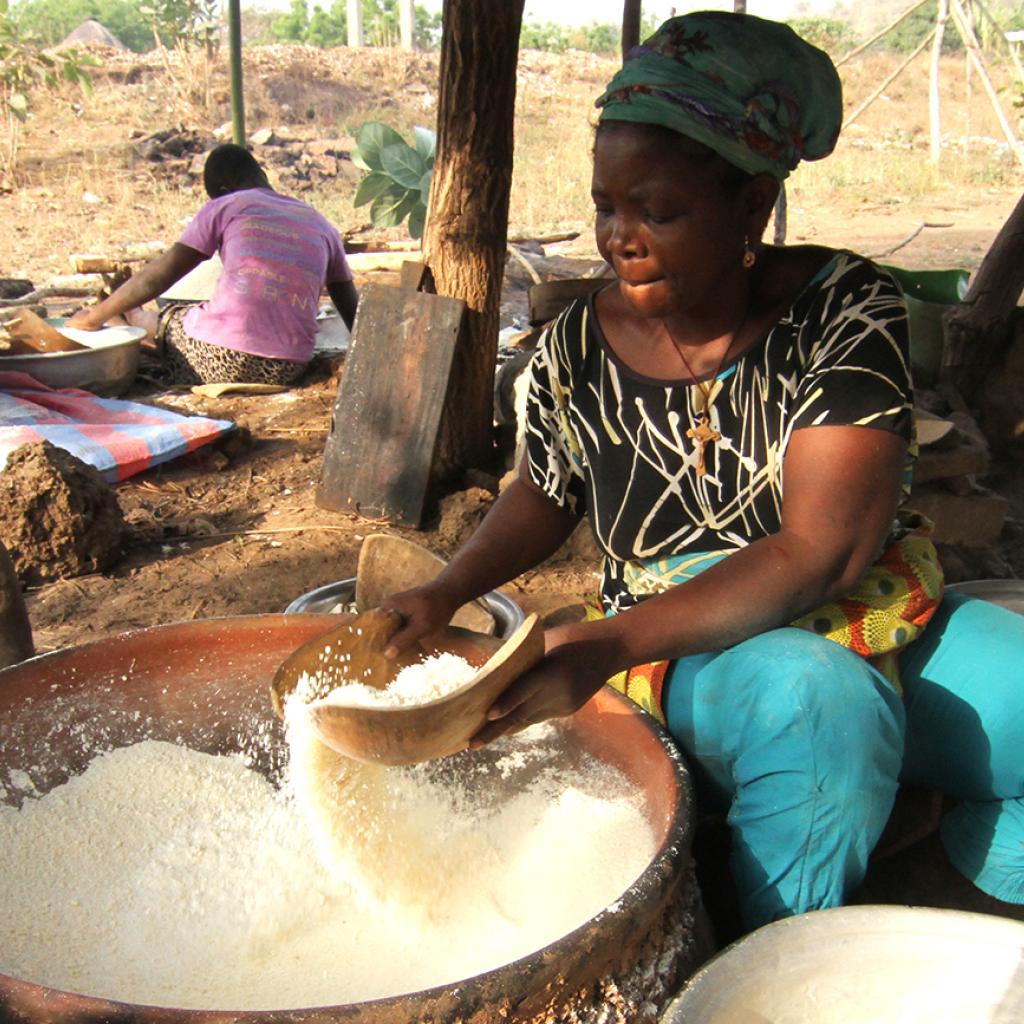
Benin: Adja people - Photo Credits: Romina Facchi
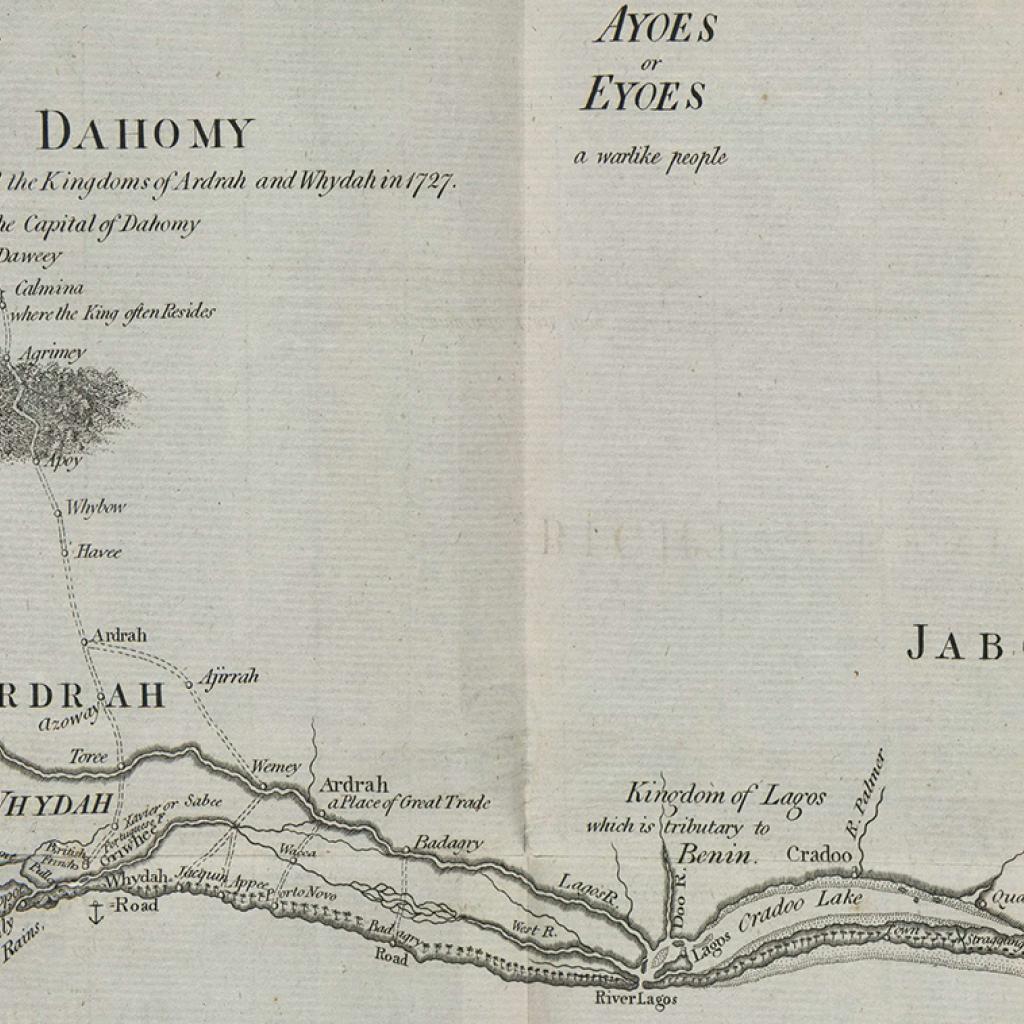
Map of slave coast
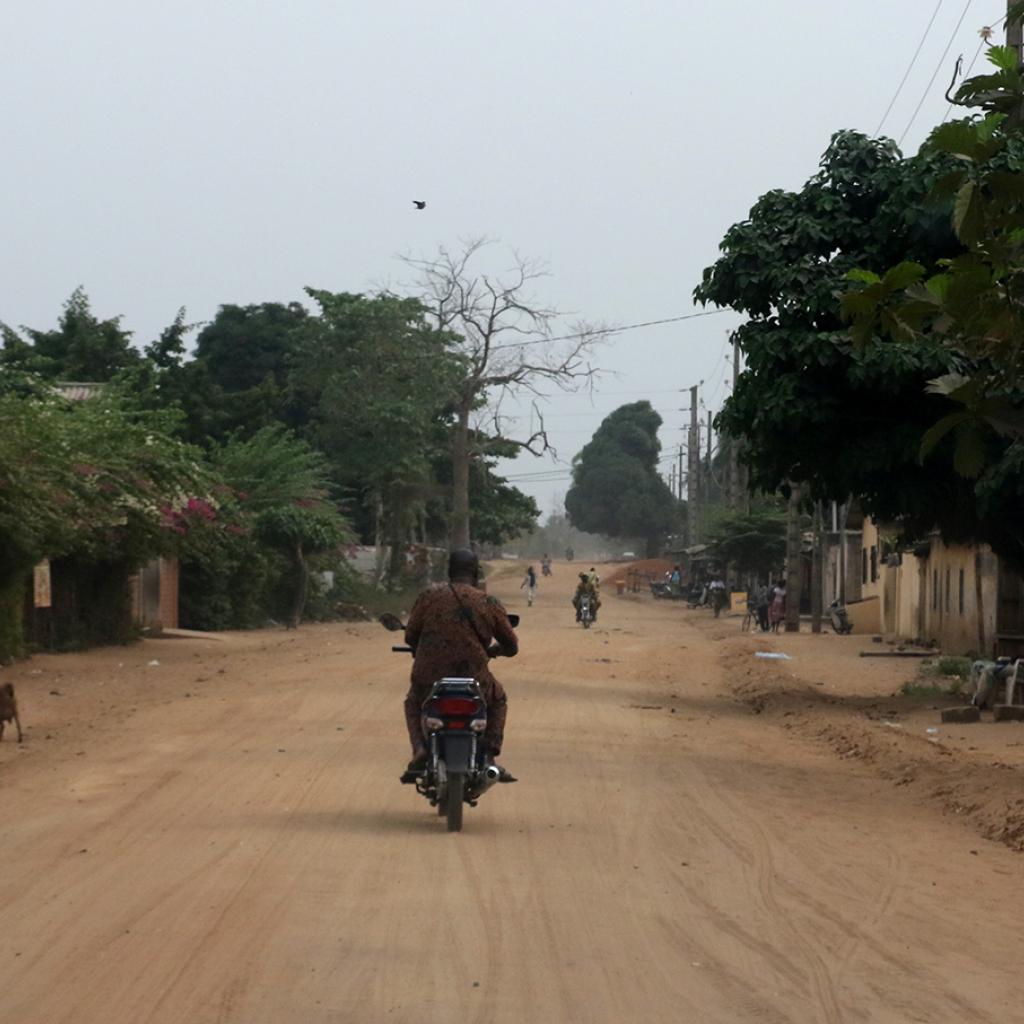
Ouidah - Photo Credits: Romina Facchi
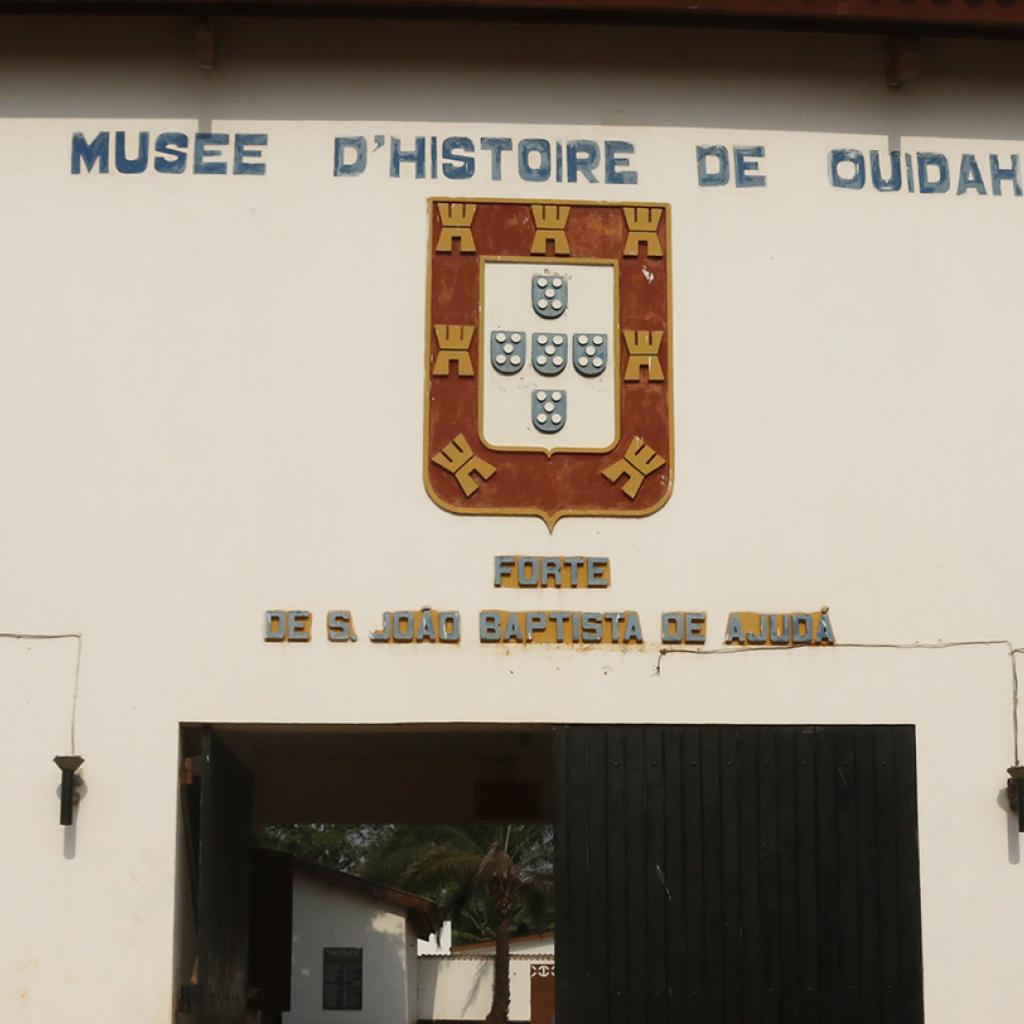
Ouidah fort -Photo Credits: Romina Facchi
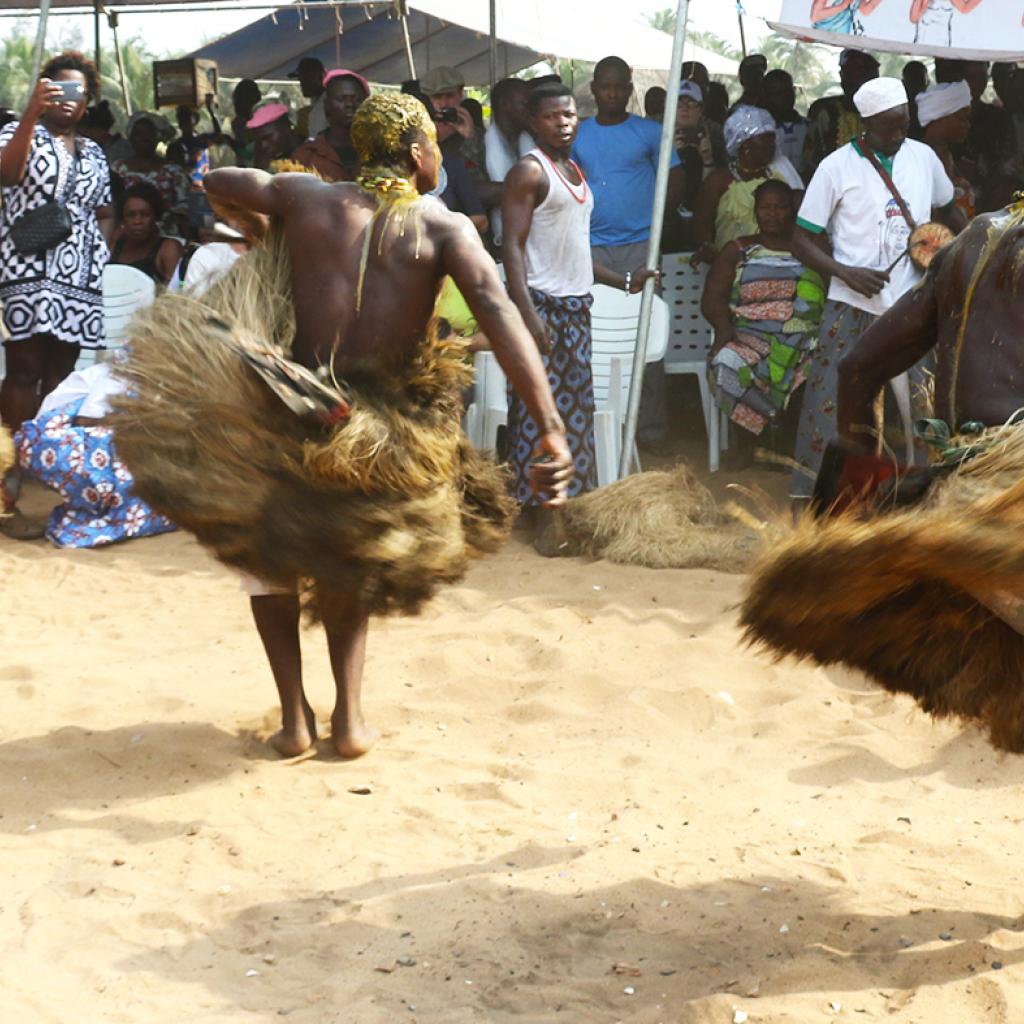
Ouidah: Voodoo festival - Photo Credits: Romina Facchi
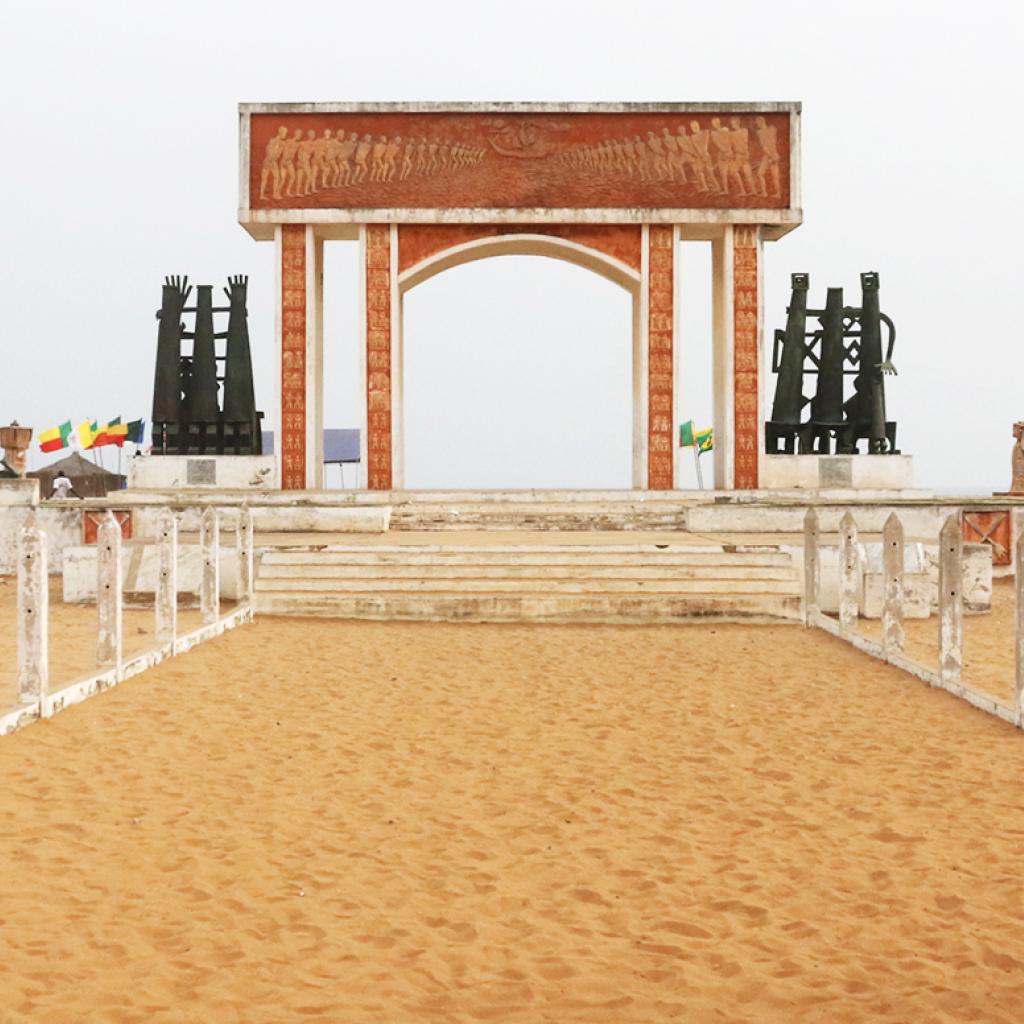
Benin: Ouidah - Photo Credits: Romina Facchi



Benin - Best time to visit

Redirect note.

Best Time to Visit Benin

Climate Overview

Beach Vacation in February

Best Time to Visit Benin: Overview
Climate chart benin.
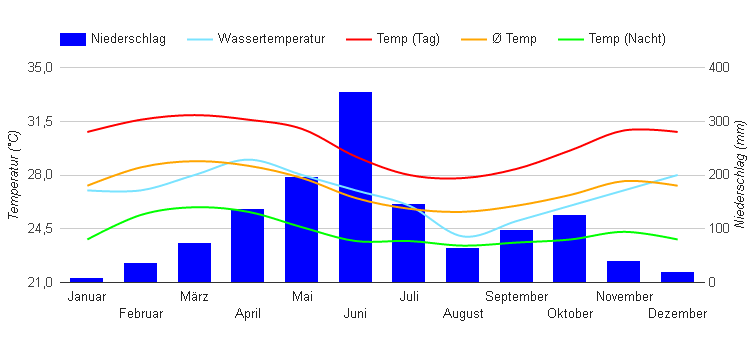
Source of Data: German Weather Service (Offenbach) and Wikipedia
Climate Table Benin
Temperatures, precipitation, sunshine in cotonou (benin), current weather and forecast.
Best Time to Travel for the Regions
Cotonou: January , July , August , September , October , November , and December
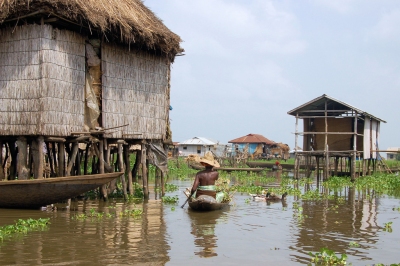
Distances to Benin
Where’s benin, continent: africa, share your experience and win.
Destinations in the Vicinity …
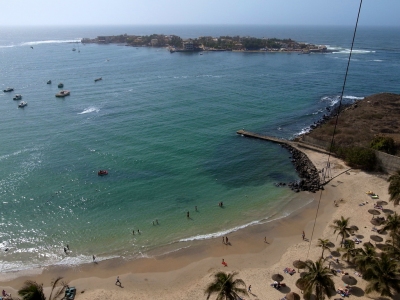
- Imprint / Privacy
- Image Sources

Best time to visit Benin
Our verdict
The best time to visit Benin is September-October
The warmest month of the year in Porto-Novo, one of the most popular travel destinations in Benin, is January, where the average maximum temperature gets to around 34℃ (93℉). Temperatures can reach as high as 36℃ (97℉) on the hottest days in summer. In the winter, temperatures can get down to 23℃ (73℉) around August-time. In other areas of Benin, temperatures might differ so be sure to compare other destinations below.
If you want to get the most out of your time visiting Benin, or you’re just afraid of the dark, the days in December are usually the longest between sunrise and sunset. To stay dry, avoid travelling to Benin in July – It’s the wettest month of the year.
Quick links: Fast facts / Seasons / Average temperatures / FAQs / Map
Warmest month
Least rainfall, most daylight, check your travel options, need a place to stay.
*Support us by clicking the links above and making a booking with our partners. It's completely free for you, and it helps us make this site even more awesome! We'll <3 you for it.
ADVERTISEMENT
Benin seasons
Before you plan your trip, it’s important to know when the seasons are as they may be different to yours depending on where you’re travelling from. Benin is in the Northern hemisphere, so the seasons fall on:
Best time to visit the top destinations in Benin
We’ve put together a breakdown of the average minimum and maximum temperatures by month, as well as the best times to visit for each. To learn more about these destinations including detailed climate breakdowns and much more, click or tap the city/destination name below.
Which continent is Benin in?
What are the best places to visit in benin.
Check out these guides for the top must-see destinations in Benin:
- Best time to visit Porto-Novo
When should I visit Benin for the warmest weather?
When does it rain the least in benin.
Explore Benin
Trending destinations
- Guadalajara, Mexico
- Ensenada, Mexico
- Las Palmas, Gran Canaria
- Aberdeen, Scotland
- Sao Paulo, Brazil
- Marseille, France
- Brighton, UK
- Pattaya, Thailand
- Punta Arenas, Chile
- Gold Coast, Australia
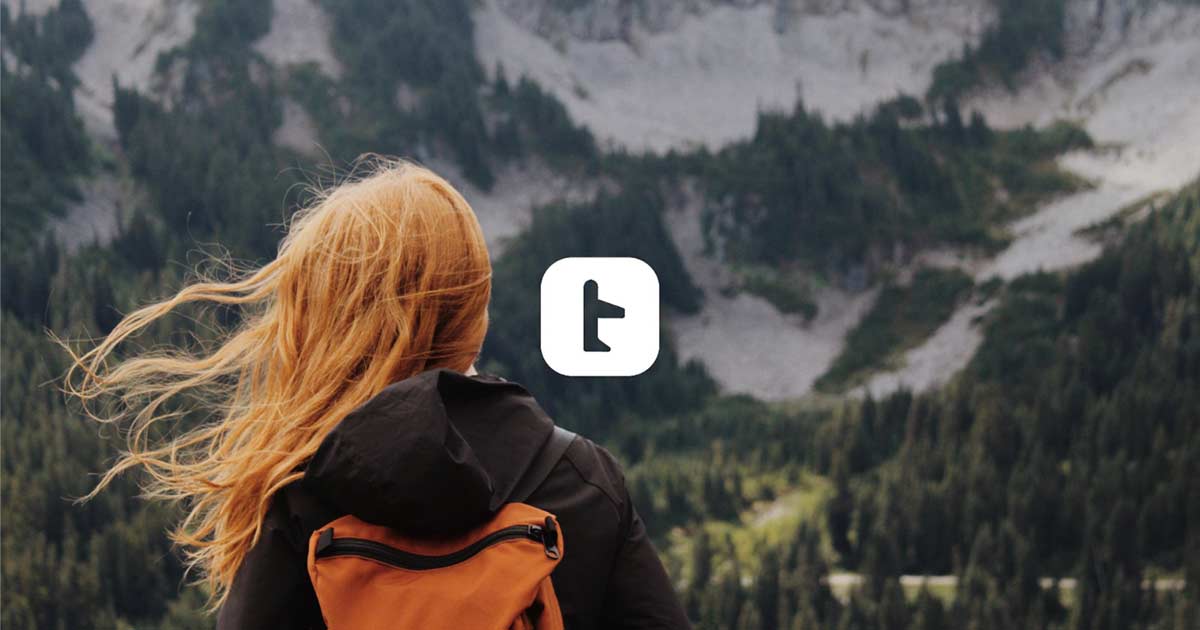
Need a hotel in Benin?
Find hotels and stays for any budget in Benin with our partners, Booking.com !
The Best Time to Visit Benin City, Nigeria for Weather, Safety, & Tourism
The best times to visit Benin City for ideal weather are
November 26th to April 1st
based on average temperature and humidity from NOAA (the National Oceanic and Atmospheric Administration). Read below for more weather and travel details.
Benin City Travel Guide
Temperature.
- Perceived Temperature
- Rain and snow
- Humidity and wind
- The busiest and least popular months
- Overall travel experience by time of year
Other Benin City Travel Info
Weather in benin city.
Average temperatures in Benin City vary little. Considering humidity, temperatures feel hot all year with a fair chance of precipitation about half of the year. The area is less temperate than some — in the 17th percentile for pleasant weather — compared to tourist destinations worldwide. Weeks with ideal weather are listed above . If you’re looking for the very warmest time to visit Benin City, the hottest months are February, March, and then December. See average monthly temperatures below. The warmest time of year is generally late November to early December where highs are regularly around 98.1°F (36.7°C) with temperatures rarely dropping below 82°F (27.8°C) at night.
Benin City Temperatures (Fahrenheit)
Benin city temperatures (celsius), “feels-like” temperatures.
The way we experience weather isn’t all about temperature. Higher temperatures affect us much more at higher humidity, and colder temperatures feel piercing with high winds. Our perceived temperatures factor in humidity and wind chill to better represent how hot or cold the day feels to a person.
Benin City Perceived Temperature (F)
Benin city perceived temperature (c), average benin city temperatures by month.
Daily highs (averaged for the month) usually give the best indication of the weather. A significantly lower mean and low generally just means it gets colder at night.
Show Fahrenheit
Show celsius, precipitation (rain or snow).
If dry weather is what you’re after, the months with the lowest chance of significant precipitation in Benin City are January, December, and then March. Note that we define “significant precipitation” as .1 inches or more in this section. The lowest chance of rain or snow occurs around early January. For example, on the week of January 1st there are no days of precipitation on average. By contrast, it’s most likely to rain or snow in late April with an average of 4 days of significant precipitation the week of April 23rd.
Chance of Precipitation
The graph below shows the % chance of rainy and snowy days in Benin City.
Snow on the Ground
The graph below shows the average snow on the ground in Benin City (in).
Average Rain and Snow by Month
Show inches, show centimeters, humidity and wind.
Benin City has some extremely humid months, with other comfortably humid months. The least humid month is January (58.7% relative humidity), and the most humid month is August (87.9%).
Wind in Benin City is usually extremely calm . The windiest month is April, followed by March and July. April’s average wind speed of around 2 knots (2.3 MPH or 3.6 KPH) is considered “light air.” Maximum sustained winds (the highest speed for the day lasting more than a few moments) are at their highest in early April where average top sustained speeds reach 7.3 knots, which is considered a gentle breeze.
Relative Humidity (%)
The graph below shows the average % humidity by month in Benin City.
The graph below shows wind speed (max and average) in knots.
Average Wind Speeds
Show wind speeds.
All wind speeds are in knots. 1 knot = 1.15 MPH or 1.85 KPH.
Show Relative Humidity by Month
Is it safe to travel to benin city.
Our best data indicates this area is somewhat unsafe, especially in some areas. As of Dec 04, 2023 there are strong travel warnings and regional advisories for Nigeria; avoid non-essential travel and all travel to some areas. Check this page for any recent changes or regions to avoid: Travel Advice and Advisories . This advisory was last updated on Nov 28, 2023.
The Busiest and Least Crowded Months
The busiest month for tourism in Benin City, Nigeria is December, followed by April and March. Prices for hotels and flights will be most expensive during these months, though you can save if you purchase well in advance. Tourists are unlikely to visit Benin City in January. Those willing to visit at these times will likely find it the least expensive month.
Estimated Tourism by Month
Most popular months to visit, overall benin city travel experience by season, spring (march through may).
Humidity and temperatures combine to make this season feel warm. Highs range from 93.5°F (34.2°C) and 87.6°F (30.9°C) with colder temperatures in the later months. Rain is somewhat common with 1 to 8 days of significant precipitation per month. Spring is the busiest for tourism, which makes it a good time for those looking for things to do.
Summer (June through August)
The middle-year months have very comfortable weather with high temperatures that are comfortable. These months see the most precipitation with 6 to 8 days of precipitation per month. June – August is fairly slow season for tourism in Benin City, so lodging and other accommodations may cost slightly less.
Fall (September through November)
Fall daily highs range from 92.7°F (33.7°C) and 82.7°F (28.2°C), which will feel very nice given the humidity and wind. It rains or snows a significant amount: 6 to 7 days per month. Tourism is the slowest during these months due to the weather, so hotels may be affordably priced.
Winter (December through February)
Weather is perfect this time of year in Benin City to be enjoyable for warm weather travelers. The average high during this season is between 98.1°F (36.7°C) and 90°F (32.2°C). On average, it rains or snows a very small amount: 0 to 1 times per month. These times of year are the second busiest with tourists.
Best Times to Travel › Nigeria › Benin City, Nigeria
Similar Destinations
- Warri, Nigeria
- Ovwian, Nigeria
- Owo, Nigeria
- Akure, Nigeria
- Asaba, Nigeria
- Ondo, Nigeria
- Ise, Nigeria
- Onitsha, Nigeria
- Ikare, Nigeria
- Obosi, Nigeria
Popular Destinations
- Riyadh, Saudi Arabia
- Sihanoukville, Cambodia
- Kaohsiung, Taiwan
Update April 12, 2024
Information for u.s. citizens in the middle east.
- Travel Advisories |
- Contact Us |
- MyTravelGov |
Find U.S. Embassies & Consulates
Travel.state.gov, congressional liaison, special issuance agency, u.s. passports, international travel, intercountry adoption, international parental child abduction, records and authentications, popular links, travel advisories, mytravelgov, stay connected, legal resources, legal information, info for u.s. law enforcement, replace or certify documents.
Before You Go
Learn About Your Destination
While Abroad
Emergencies
Share this page:
Travel Advisory July 31, 2023
Benin - level 2: exercise increased caution.
Reissued with obsolete COVID-19 page links removed.
Exercise increased caution in Benin due to crime, kidnapping, terrorism, and maritime crime. Some areas have increased risk. Read the entire Travel Advisory.
Do Not Travel to:
The northern regions of Benin, including:
- The cities of Kandi and Tanguieta
- North from Kandi and Tanguieta to the Niger / Burkina Faso border
- Pendjari and W National Parks, Zones Cynegetique De La Pendjari, De Latakora, and De Djona, and the adjacent hunting zones
- RNIE 7 between Banikora and Segbana
- RN10 between Nikki and Segbana
Violent crime, such as armed robbery and assault, is common in Benin. There is a risk of maritime crime, including violent attacks and kidnapping at sea, in the Gulf of Guinea.
Terrorists continue plotting attacks in Benin. Terrorists may attack with little or no warning, and could target shop, markets, hotels, places of worship, restaurants, bars, schools, government installations, transportation hubs, and other places where crowds gather.
Read the country information page for additional information on travel to Benin.
If you decide to travel to Benin:
- Do not physically resist any robbery attempt.
- Use caution when walking or driving at night.
- Keep a low profile.
- Enroll in the Smart Traveler Enrollment Program (STEP) to receive Alerts and make it easier to locate you in an emergency.
- Follow the Department of State on Facebook and Twitter .
- Review the Country Security Report for Benin.
- Obtain comprehensive travel medical insurance that includes medical evacuation prior to travel.
- Prepare a contingency plan for emergency situations. Review the Traveler’s Checklist .
- Visit the CDC page for the latest Travel Health Information related to your travel.
Northern Benin – Level 4: Do Not Travel
Extremist groups have carried out attacks in areas of southern Burkina Faso, southern Niger and northern Benin (including near Park Pendjari, Park W, and adjacent hunting zones). Attacks may occur with little or no warning. Western tourists have been kidnapped in Park Pendjari, in northern Benin.
Extremist groups have also operated in the vicinity of Kandi and Tanguieta and in the northeastern border region between Benin and Nigeria, specifically in the border region north of Nikki. Attacks may occur with little or no warning. Foreign nationals and residents are at risk of kidnapping in this region.
The U.S. government has limited ability to provide emergency services to U.S. citizens in Benin’s northern border areas. U.S. government employees are prohibited from personal travel and must obtain special authorization for official travel to the regions described above.
Visit our website for Travel to High-Risk Areas .
Embassy Messages
View Alerts and Messages Archive
Quick Facts
Must be valid at time of entry
Yellow fever vaccine on WHO Yellow Card required
Must declare over 5 million West African Franc (CFA)
Must declare over 5 million CFA
Embassies and Consulates
U.s. embassy cotonou.
Marina Avenue 01 BP 2012 Cotonou, Benin Telephone: +(229) 21-30-75-00 Emergency after-hours telephone: +(229) 21-30-75-00 Fax: +(229) 21-30-66-82 Email: [email protected] (for American Citizen Services)
Destination Description
Learn about the U.S. relationship to countries around the world.
Entry, Exit and Visa Requirements
Travelers to Benin must present a valid passport and visa to enter the country. Visas are not available upon entry at the airport or at any land or sea arrival point.
Benin offers an eVisa for tourism, business, and transit travelers. An application for an eVisa can be made online between 7 and 90 days before you travel. The eVisa is generally valid for 30 or 90 days. However, U.S. citizens can extend the validity to 36 months without additional costs by presenting a valid eVisa and a U.S. passport to the nearest Beninese embassy or consular office. While in the United States, requests for this extension can be made at the Embassy of Benin, located at:
2124 Kalorama Road NW Washington, DC 20008 Telephone: 202-232-6656
Visit the website of the Embassy of Benin for contact information and for details on the most current visa and entry requirements.
As of 2019, visitors to Benin must receive a yellow fever vaccine and must present a World Health Organization Yellow Card ( Carte Jaune ) at entry to document that the vaccine was administered. Visit the World Health Organization for more information on the Yellow Card and the Centers for Disease Control and Prevention for more information about obtaining a yellow fever vaccine.
The U.S. Department of State is unaware of any HIV/AIDS entry restrictions for visitors to or foreign residents of Benin.
Find information on dual nationality , prevention of international child abduction , and customs regulations on our websites.
Safety and Security
Terrorism: Terrorist groups and those inspired by such organizations are intent on attacking U.S. citizens abroad. Terrorists are increasingly using less sophisticated methods of attack – including knives, firearms, and vehicles – to more effectively target crowds. Frequently, their aim is unprotected and focused on vulnerable targets, such as:
- High-profile public events (sporting contests, political rallies, demonstrations, holiday events, celebratory gatherings, etc.)
- Hotels, clubs, and restaurants frequented by tourists
- Places of worship
- Shopping malls and markets
- Public transportation systems (including subways, buses, trains, and scheduled commercial flights)
Extremist groups have carried out attacks in areas of Burkina Faso adjacent to Benin’s northern border, near Park Pendjari, Park W, and adjacent hunting zones. Attacks may occur with little or no warning. Western tourists have been kidnapped in Park Pendjari in northern Benin. U.S. government employees are restricted from personal travel to Park Pendjari, Park W, other areas within 50 km of Benin’s northern border with Burkina Faso, and areas north of the RNIE 7 route from Banikoara to the Nigerian border (not including the cities of Kandi and Segbana). The U.S. Department of State recommends tourists reconsider travel to these areas.
For more information, see our terrorism page.
Crime: Street crime is a significant problem in urban areas. Robbery and muggings occur on major thoroughfares and in neighborhoods, including those where expatriates and diplomatic staff live, where popular bars and restaurants are located, and on the beaches near hotels frequented by international visitors. Most reported incidents involve the use of force, by armed persons, with minor injury to the victim. There have been reports of individuals impersonating police officers.
Travelers should avoid the Dantokpa Market between the hours of dusk and dawn.
Demonstrations occur occasionally. They may take place in response to political or economic issues, on politically significant holidays, and during international events.
- Even demonstrations intended to be peaceful can turn confrontational and possibly become violent.
- Avoid areas around protests and demonstrations.
- Check local media for updates and traffic advisories.
International Financial Scams: See the Department of State and the FBI pages for information.
Internet romance and financial scams are prevalent in Benin. Scams are often initiated through Internet postings/profiles or by unsolicited emails and letters. Scammers almost always pose as U.S. citizens who have no one else to turn to for help. Common scams include:
- Romance/Online dating
- Money transfers
- Contracts with promises of large commissions
- Grandparent/Relative targeting
- Work permits/job offers
Victims of Crime: U.S. citizen victims of sexual assault are encouraged to contact the U.S. Embassy for assistance. Report crimes to the local police at +(229) 21-30-30-25 or +(229) 21-30-20-11, and contact the U.S. Embassy at +(229) 21-30-75-00. Remember that local authorities are responsible for investigating and prosecuting crime.
See our webpage on help for U.S. victims of crime overseas .
Those who witness or are victimized by police fraud and/or corruption can call the “Green Line” of the Beninese Police at 166 to report what they have experienced.
The U.S. Embassy can:
- Help you find appropriate medical care.
- Assist you in reporting a crime to the police.
- Contact relatives or friends with your written consent.
- Provide general information regarding the victim’s role during the local investigation and following its conclusion.
- Provide a list of local attorneys.
- Provide our information on victim’s compensation programs in the United States.
- Provide an emergency loan for repatriation to the United States and/or limited medical support in cases of destitution.
- Help you find accommodation and arrange flights home.
- Replace a stolen or lost passport.
Domestic Violence: U.S. citizen victims of domestic violence are encouraged to contact the U.S. Embassy for assistance.
Tourism : The tourism industry is unevenly regulated, and safety inspections for equipment and facilities do not commonly occur. Hazardous areas/activities are not always identified with appropriate signage, and staff may not be trained or certified either by the host government or by recognized authorities in the field. In the event of an injury, appropriate medical treatment is limited. First responders are generally unable to access areas outside of major cities and to provide urgent medical treatment. Depending on the nature of an injury or illness, appropriate medical treatment may not be available in Benin. U.S. citizens are strongly encouraged to purchase medical evacuation insurance .
Beach Safety : Swimming conditions along Benin’s coastline are dangerous due to strong tides, waves, and rip currents, and several people drown each year. Some private beaches offer increased protection, such as sea walls. Always learn about the water conditions at any beach before attempting to swim.
Maritime Security : Piracy and armed robbery in the Gulf of Guinea continue to trend upwards. Pirates/armed groups operating in the region typically carry out attacks on vessels using automatic weapons. Attacks, kidnappings for ransom, and robbery of crew, passengers, and ship’s property continue to be common occurrences.
Local Laws & Special Circumstances
Criminal Penalties: You are subject to local laws. If you violate local laws, even unknowingly, you may be expelled, arrested, or imprisoned. Individuals establishing a business or practicing a profession that requires additional permits or licensing should seek information from the competent local authorities prior to practicing or operating a business.
U.S. citizens have been arrested and imprisoned for failing to pay debts.
Furthermore, some laws are also prosecutable in the United States, regardless of local law. For examples, see our website on crimes against minors abroad and the Department of Justice’s website .
Arrest Notification: If you are arrested or detained, ask police or prison officials to notify the U.S. Embassy immediately. See our webpage for further information.
Faith-Based Travelers: See the following webpages for details:
- Faith-Based Travel Information
- International Religious Freedom Report – see country reports
- Human Rights Report – see country reports
- Best Practices for Volunteering Abroad
LGBTQI+ Travelers: There are no legal restrictions on same-sex sexual relations; however, LGBTQI+ lifestyle and rights are not widely accepted and confined to urban centers. LGBTQI+ travelers may face discrimination in both private and public forms. The organization of private LGBTQI+ events in Benin has no legal restrictions. However, public events of any nature require prior governmental approval.
See our LGBTQI+ Travel Information page and section 6 of our Human Rights report for further details.
Travelers Who Require Accessibility Assistance : Most buildings, businesses, government offices, and medical facilities do not provide special features accommodation for persons with mobility issues. Public transportation catering to those with mobility issues is almost non-existent. Many roads are unpaved and lack usable sidewalks.
Students: See our Students Abroad page and FBI travel tips .
Women Travelers: See our travel tips for Women Travelers .
For emergency services in Benin, dial 116 .
Ambulance services are:
- Not widely available, and training and availability of emergency responders may be below U.S. standards.
- Not equipped with state-of-the-art medical equipment.
- Not staffed with trained paramedics and often have little or no medical equipment.
- Injured or seriously ill travelers may prefer to take a taxi or private vehicle to the nearest major hospital rather than wait for an ambulance.
We do not pay medical bills. Be aware that U.S. Medicare/Medicaid does not apply overseas. Most hospitals and doctors overseas do not accept U.S. health insurance.
Medical Insurance: Make sure your health insurance plan provides coverage overseas. Most care providers overseas only accept cash payments. See our webpage for more information on overseas insurance. Visit the U.S. Centers for Disease Control and Prevention for more information on types of insurance you should consider before you travel overseas.
We strongly recommend supplemental insurance to cover medical evacuation.
Always carry your prescription medication in original packaging, along with your doctor’s prescription. Check with the Ministry of the Interior of the Government of Benin .
Vaccinations: Be up-to-date on all vaccinations recommended by the U.S. Centers for Disease Control and Prevention.
Further health information:
- World Health Organization
- U.S. Centers for Disease Control and Prevention (CDC)
Air Quality: Visit AirNow Department of State for information on air quality at U.S. Embassies and Consulates.
The U.S. Embassy maintains a list of doctors and hospitals . We do not endorse or recommend any specific medical provider or clinic.
Health Facilities in General :
- Adequate health facilities are not available throughout the country, and health care may be below U.S. standards.
- Public medical clinics lack basic resources and supplies.
- Hospitals and doctors often require payment “up front” prior to service or admission.
- Most hospitals and medical professionals require cash payment.
- Private hospitals usually require advance payment or proof of adequate insurance before admitting a patient.
- Travelers should make efforts to obtain complete information on billing, pricing, and proposed medical procedures before agreeing to any medical care.
- Medical staff may speak little or no English.
- Patients bear all costs for transfer to or between hospitals.
- Psychological and psychiatric services are limited, even in the larger cities, with hospital-based care only available through government institutions.
Pharmaceuticals :
- Exercise caution when purchasing medication overseas. Pharmaceuticals, both over the counter and requiring prescription in the United States, are often readily available for purchase with few controls. Counterfeit medication is common, and may prove to be ineffective, the wrong strength, or contain dangerous ingredients. Medication should be purchased in consultation with a medical professional and from reputable establishments.
- U.S. Customs and Border Protection and the Food and Drug Administration are responsible for rules governing the transport of medication back to the United States. Medication purchased abroad must meet their requirements to be legally brought back into the United States. Medication should be for personal use and must be approved for usage in the United States. Please visit the U.S. Customs and Border Protection and the Food and Drug Administration websites for more information.
Water Quality: In many areas, tap water is not potable. Bottled water and beverages are generally safe, although you should be aware that many restaurants and hotels serve tap water unless bottled water is specifically requested. Be aware that ice for drinks may be made using tap water.
Adventure Travel: Visit the U.S. Centers for Disease Control and Prevention website for more information about Adventure Travel .
General Health: The following diseases and illnesses are prevalent:
- Yellow Fever
- Chikungunya
- Lassa Fever
- Diarrheal illnesses are very common. You should follow food safety precautions.
- Use the U.S. Centers for Disease Control and Prevention recommended mosquito repellents, and sleep under insecticide-impregnated mosquito nets. Chemoprophylaxis is recommended for all travelers even for short stays.
- Visit the U.S. Centers for Disease Control and Prevention website for more information about Resources for Travelers regarding specific issues in Benin.
Air Quality
- Infants, children, and teens;
- People over 65 years of age;
- People with lung disease such as asthma and chronic obstructive pulmonary disease (COPD), which includes chronic bronchitis and emphysema;
- People with heart disease or diabetes.
- People who work or are active outdoors.
Travel and Transportation
Road Conditions and Safety: Motorbikes and motorcycles are extremely prevalent on the roads in Benin and will unexpectedly appear or switch lanes. Traffic signals are rare and may not be operational or followed. Pedestrians, non-motorized carts, broken-down vehicles, and debris are often present in even the busiest of roads.
Roads in Benin are generally in poor condition. During the rainy season (from mid-June to mid-September), dirt roads become impassable. Four-wheel drive vehicles with full spare tires and emergency equipment are recommended.
Gasoline smuggled from Nigeria is widely available in glass bottles and jugs at informal roadside stands throughout Cotonou and much of the country. This gasoline is of unreliable quality, as it often contains water or other contaminants that can damage or disable your vehicle. Drivers should purchase fuel only from official service stations. There are periodic gas shortages, especially in the north of the country where there are fewer service stations.
The U.S. Embassy prohibits travel by diplomatic personnel outside of metropolitan areas after dusk and urges all U.S. citizens to avoid night driving due to road safety and crime concerns.
Traffic Laws: Traffic moves on the right. In traffic circles, vehicles inside the circle must yield to those entering. Many drivers do not follow traffic laws.
When stopped by the police, you must have all of your vehicle’s documentation available to present to the authorities.
Public Transportation: Cotonou has a limited public transportation system. Many Beninese people rely on bicycles, mopeds, and motorbikes for hire (known as “zemidjans”). Travelers using zemidjans, particularly at night, are much more vulnerable to being mugged, assaulted, or robbed. Buses and private taxis offer service in the interior. U.S. Embassy personnel are required to wear safety helmets when on a motorcycle and are prohibited from using zemidjans.
See our Road Safety page for more information.
Aviation Safety Oversight: As there is no direct commercial air service to the United States by carriers registered in Benin, the U.S. Federal Aviation Administration (FAA) has not assessed the government of Benin’s Civil Aviation Authority for compliance with International Civil Aviation Organization (ICAO) aviation safety standards. Further information may be found on the FAA’s safety assessment page .
Maritime Travel: Mariners planning travel to Benin should also check for U.S. maritime advisories and alerts . Information may also be posted to the U.S. Coast Guard homeport website , and the NGA broadcast warnings .
For additional travel information
- Enroll in the Smart Traveler Enrollment Program (STEP) to receive security messages and make it easier to locate you in an emergency.
- Call us in Washington, D.C. at 1-888-407-4747 (toll-free in the United States and Canada) or 1-202-501-4444 (from all other countries) from 8:00 a.m. to 8:00 p.m., Eastern Standard Time, Monday through Friday (except U.S. federal holidays).
- See the State Department’s travel website for the Worldwide Caution and Travel Advisories .
- Follow us on Twitter and Facebook .
- See traveling safely abroad for useful travel tips.
Review information about International Parental Child Abduction in Benin . For additional IPCA-related information, please see the International Child Abduction Prevention and Return Act ( ICAPRA ) report.
Travel Advisory Levels
Assistance for u.s. citizens, learn about your destination, enroll in step.

Subscribe to get up-to-date safety and security information and help us reach you in an emergency abroad.
Recommended Web Browsers: Microsoft Edge or Google Chrome.
Check passport expiration dates carefully for all travelers! Children’s passports are issued for 5 years, adult passports for 10 years.
Afghanistan
Antigua and Barbuda
Bonaire, Sint Eustatius, and Saba
Bosnia and Herzegovina
British Virgin Islands
Burkina Faso
Burma (Myanmar)
Cayman Islands
Central African Republic
Cote d Ivoire
Curaçao
Czech Republic
Democratic Republic of the Congo
Dominican Republic
El Salvador
Equatorial Guinea
Eswatini (Swaziland)
Falkland Islands
France (includes Monaco)
French Guiana
French Polynesia
French West Indies
Guadeloupe, Martinique, Saint Martin, and Saint Barthélemy (French West Indies)
Guinea-Bissau
Isle of Man
Israel, The West Bank and Gaza
Liechtenstein
Marshall Islands
Netherlands
New Caledonia
New Zealand
North Korea (Democratic People's Republic of Korea)
Papua New Guinea
Philippines
Republic of North Macedonia
Republic of the Congo
Saint Kitts and Nevis
Saint Lucia
Saint Vincent and the Grenadines
Sao Tome and Principe
Saudi Arabia
Sierra Leone
Sint Maarten
Solomon Islands
South Africa
South Korea
South Sudan
Switzerland
The Bahamas
Timor-Leste
Trinidad and Tobago
Turkmenistan
Turks and Caicos Islands
United Arab Emirates
United Kingdom
Vatican City (Holy See)
External Link
You are about to leave travel.state.gov for an external website that is not maintained by the U.S. Department of State.
Links to external websites are provided as a convenience and should not be construed as an endorsement by the U.S. Department of State of the views or products contained therein. If you wish to remain on travel.state.gov, click the "cancel" message.
You are about to visit:
Best time to visit Benin
Last updated on May 17, 2023
What are the hottest months to visit Benin in?
What are the coolest months to visit benin in, what months have the most rainfall to visit benin in, what months have the least rainfall to visit benin in, what are the most humid months to visit benin in, what are the least humid months to visit benin in, what months have the most wind in benin, what months have the least wind in benin, which months have the most cloud cover in benin, which months have the least cloud cover in benin, temperature by months in benin, rain precipitation by months in benin, humidity by months in benin, wind speed by months in benin, cloud coverage by months in benin, you picked the perfect time to visit benin, check the staying options there.
- Destinations
- Switzerland
- 9 Luxury Hotels with Water Slides & Aqua Parks
- How Much Does it Cost To Fly First Class Around the World?
- Best Luxury Travel Luggage | Top Designer Bags for Travelers
- Hotel Reviews
- The Dorchester
- Soho Grand Hotel
- Hotel Castille
Beyond Babeesh
My ultimate benin travel guide and itinerary: budget backpacking in benin, the secret’s out…traveling around benin is awesome, backpacking in benin: a one week itinerary, things to do in cotonou: (be sure to check out my post about things to do in cotonou for more photos and details), benin itinerary day 2: ganvié day trip: the venice of africa, benin travel guide day 3: abomey: history of the dahomey kingdom, benin itinerary day 4-5: ouidah : voodoo, history of slavery, art, and architecture, traveling in benin for longer than a week here’s a benin travel guide for a longer stay, backpacking in benin: a two to three week benin itinerary, benin travel itinerarydays 1-2: cotonou, ganvié (see above), day 3: porto novo: leafy streets and colonial architecture, benin itinerary days 4-5: abomey (see above) and head north, how to go on a budget safari in benin: pendjari national park, benin itinerary days 10-12: go back to natitingou, the gateway to the traditional tatas, benin itinerary days 12-14: return south to ouidah, grand popo (see above) and either go back to cotonou to fly out or continue on to togo., how to get to the border with togo:.
I decided to write this travel guide to Benin because, well, there isn’t a lot of information available online about traveling to Benin. Even further, there isn’t a lot of information available online in English about backpacking in Benin.
Also, in addition to this itinerary and Benin Travel Guide,consider checking out my post Benin: Know Before You Go for information on costs, visas, and travel tips. Women traveling alone may also find Solo Female Travel in Benin helpful to read as well!
I backpacked around Benin alone and really loved it. There are lots of things to see and do for any type of tourist in Benin. It was pleasantly easy to travel around the country!
Beaches, history, architecture, music, nature…Benin has it all! I’ve included all these cool things in my Benin travel guide!
I traveled around Benin on a budget, staying in the cheapest guesthouses ( auberges ) and hostels and traveling by public transportation.
This travel guide and itinerary for Benin will work for people who also may have already planned their own private transportation or people who want to take public transportation around Benin.
I write about one week and two week itineraries Benin, the small, historically rich gem in West Africa!
If you have something to add or something has changed in this Benin travel guide please let me know and I’ll change it! I really appreciate it!
Note that some of the links in this Benin travel guide are affiliate links. If you found this post helpful consider booking something via a link here- it’s at no extra cost to you! Thanks!

If you have limited time, money, or both, you can still see a lot of wonderful things in Benin during one week. Here is my suggested Benin itinerary for one week! Though I do love jam packed vacations…
If you want to relax a bit more while backpacking in Benin, I would recommend (GASP!!!) skipping Abomey and doing Ouidah as a half day trip while you are on your way from Cotonou to Grand Popo. Then you can chill at the beach if you are looking for more of a relaxed vacation.
Otherwise, this Benin itinerary is fine for a busy week or a more relaxed 8-10 days. Thankfully distances aren’t too long …it’s not like traveling in Southern or Eastern Africa!
I traveled to Togo overland from Benin and so this one week itinerary will be perfect for those of you who want to do the same! Or if you are traveling to Benin from Togo then you can tackle this guide to Benin backwards!
Benin Itinerary Day 1: Arrive and visit Cotonou, Benin’s largest city and port of entry

Located along the coast, Cotonou is the largest city in Benin. It is also where the international airport is located.
It’s not the capital, though! Porto Novo is the capital.
From here, backpackers in Benin can get to anywhere in the country. You can also easily travel to Nigeria, Togo, Niger, ad Burkina Faso from here…though getting visas to all those places may be less easy…
There are a few nice things to see and do in Cotonou, but I admit it isn’t the most exciting city.
I found it more interesting than Togo’s capital Lomé, but you can pretty much see the tourist sights of Cotonou in a day or two.
Cotonou Travel Guide: Visit The Cathedral (Notre Dame des Apotres) in Cotonou is very unique and worth a visit. It is the seat of the Catholic Church in Benin and the pope even visited there! It isn’t too far from the famous Dankopta Market where you can literally wander for hours, people watching and absorbing the atmosphere. The Dankopta Market is also home to an interesting voodoo market, though it is difficult to find. I ended up visiting one in Ouidah.
I read online that people will help you find things in the big market if you give them a little tip, but even after asking around nobody could direct me to the voodoo fetish market. Maybe I was just unlucky. It is apparently in the northern part of Dankopta Market. Go north of the main market building along the shore and keep going (you will pass the empty bottle area). Good luck and prepare to pay for taking photos.
Actually, after asking around for that one really nice man thought he knew exactly what I wanted. He found me a moto and sent me on my way to the Artisanal Center/ Craft Market, which made me laugh because it seems like everyone assumes a white girl wandering around is trying to find the craft market.
The Artisan Market in Cotonou is the perfect place to find souvenirs and trinkets. There are lots of carved, wooden statues and necklaces. The vendors are extremely persistent, though very kind. To tell you the truth I find these sorts of places to feel like tourist traps, but sometimes you can find some gems. The Fondation Zinsou may offer more unique pieces of art if that is what you are looking for.
Lastly, I enjoyed taking walks and wandering around Cocotiers, a nice neighborhood not far from the airport. It was a beautiful neighborhood and not so far from the beach!
If you want more beaches and seafood, don’t miss Route des Pêches, which stretches along the coastline between Cotonou and the west towards Ouidah. There are plenty of fishing villages to explore and of course lots of fresh seafood!
Where to stay in Cotonou, Benin:
After traveling through Benin, Togo, and Burkina Faso, I realized that accommodation can be a little pricey in the region.
Consider booking ahead to be sure you can get the best rates since the budget options do not always have lots of beds available. I will list some popular options in this Benin travel guide.
Also know that the cheapest option may not always be the most secure, or it may be really far outside of the city center. If you just look for the cheapest option on Booking.com like I do, I really recommend double checking the location and reviews!
Guesthouse Cocotiers- This place is where I stayed. It is right by the airport and they offer one of the cheapest dorm options in the region! They also offer private rooms. This is also the place to go if you want to meet other travelers. You meet a lot of interesting people here! One thing I really loved about this place was the staff. They were wonderful and sincerely wanted to help you out. The man at the front desk would always tell me what prices to expect when I took shared taxis or motos around. The staff cooked their own meals in the shared kitchen so I learned all about regional cooking. They even invited me to join them one evening and it was one of the most enjoyable dinners I had during my trip! You’ll meet authentically wonderful people here.
Check out Guesthouse Cocotiers on Booking.com or on Hostelworld .
La Guesthouse Cotonou- This place is the other backpacker hangout in Cotonou. I did not go there personally but it supposedly has affordable rooms and is a great place to meet people. You can read more here on Tripadvisor, but you can’t book it online through a booking site.
Hotel Saint Jean- This is less of a backpacker place but is still clean and affordable and closer to the center of town. Note that accommodation in the region can get really really expensive so I recommend booking in advance if you are traveling to Benin on a budget! You can check out Hotel Saint Jean on Booking.com !

Ganvié is a really special floating village not so far from Cotonou on Lake Nokoué. It is apparently one of the larger floating villages on the continent. It is also known as the Venice of Africa! Visiting there was one of my highlights of traveling in Benin. I would say it is a must in any Benin itinerary!
I felt skeptical before visiting Ganvié because I had read some negative things about tourism in the area online. In the end I decided to go and I was really happy that I did, even if I did run into some problems along the way. I felt compelled to write a more in depth post about Ganvié. You can check it out here if you’re curious.
Otherwise, here’s a mini Ganvié travel guide:
How to get to Ganvié: Take a moto (or a Zem as they call it) to the Étoile Rouge (Red Star monument in the middle of town that is the departure point for plenty of bush taxis that will take you around the region). It should be less than 500 CFA to go there from any point in town.
From the Étoile Rouge, take a shared taxi (taxi brousse) to Calavi for 500 CFA. From there you just walk down the street for about 5 minutes until you get to the launching point for the boats to Ganvié.
How much it costs to visit Ganvié:
To visit Ganvié, you can pay either for a motorboat or a canoe ( pirogue in French). The motorboat tour costs 10,500 CFA and the canoe costs 8000. You also need to pay for a guide/ government fee which turns out to be 4500 CFA. You will also be expected to tip your guide.
It is much more cost effective to go in a group than to go alone.
Keep in mind:
You are visiting a village where people work and live. The people there don’t like being photographed unless you ask. Many will expect some sort of payment.
The tour was interesting in French, though if you do not speak French you may get less out of the tour.
Don’t forget sunscreen! I ended up buying a big straw hat to protect me!
Women traveling alone: try to get an older guide. Unfortunately one theme of my Western Africa trip is that the young guides all seemed to think we were on a date and kept on trying to touch me.
For more details check out my Ganvié post!
Hotels in Ganvié, Benin:
I visited Ganvié as a day trip from Cotonou. It is about a half hour away.
If you are interested there seem to be two hotels in the village.
Hotel Germain has their own boats and they do all their own tours. Therefore you do not need to book a tour at the desk when you arrive to the launching point at Calavi. The only other tourists I saw in Ganvié were affiliated with this hotel. To tell you the truth I wished I had stayed there too by the end of my day trip, especially since I had a bit of a negative experience. You can read more about it or book it here .
Chez Raphael is the other hotel. It is very basic and affiliated with the people giving the tours that independent travelers book. It did look cool, though, but I didn’t bring my things with me. Plus it would have required me to hang out with my guide all evening and he was already giving me the creeps. This place would be awesome if you had some travel buddies. They have a little restaurant, too.

This former capital of the Kingdom of Dahomey is one of the largest tourist attractions in Benin and also is a UNESCO World Heritage site! It is a definite must see in any Benin itinerary! Lots of the original palaces were destroyed when the French invaded in 1892 and the last king burned them as he escaped, but there are still a few standing that are worth seeing if you have the time. There is also an extensive craft market and the Musée Historique d’Abomey was fine.
There are no pictures allowed inside and you pretty much need a guide if you really want to learn about the history of the place. To tell you the truth, the architecture didn’t blow me away. It wasn’t like Tiebele or Bani in Burkina Faso, or even the Tatas in Togo, but the draw of Abomey is the history. But I admit that one day is enough.
Though it really isn’t possible to see in a day trip from Cotonou since sometimes the public transport may not be reliable.
The tour takes an hour or two.
Cost of visiting Abomey
Entrance to the palaces is 2,000 CFA.
Entrance to the museum is 2,500 CFA.
How to get to Abomey
If you are going to Abomey from Cotonou, a bush taxi to Abomey should cost between 2,500 and 3,000 CFA. The drive should take two to three hours but always prepare for it taking longer. You can find the bush taxis to Abomey at the Stade d’Amitié or along Ave Van Vollenhoven near the Gare Jonquet.
But you can pretty much catch any bush taxi going in that direction and they will let you off at least at the town called Bohicon and then you can just find another shared taxi to Abomey! A shared taxi between Abomey and Bohicon should cost 500 CFA. A Zem/moto should cost 1200-1500 CFA. The ride takes around 15 minutes.
You can also technically take a train to Abomey! The trains weren’t running when I was there but that would be my first choice since I love trains! Double check to see if they are running to avoid disappointment. The train runs to Parakou which is farther north. You need to get off in Bohicon and then get a bush taxi to Abomey. It will take longer than a bush taxi.
See also: my tips for taking trains in Africa
Once you are in Abomey you can walk to the museum from the taxi stand. Don’t let the moto drivers rip you off! Though you may have to take one to your hotel. I recommend marking your hotel on google maps before arriving so you can see how far you need to walk!

Places to stay in Abomey
Auberge d’Abomey is the backpacker favorite and their food was pretty good. It was nothing special but clean and just off the main roundabout.
Chez Monique is supposedly a little higher end but simple nonetheless. Someone told me that there are some pretty miserable animals that they keep there and that sort of turned me off to it.
Residence Marie Josee is apparently another nice place in Abomey. I can’t vouch for it personally but apparently people like it and it’s a solid choice.
Also, if you can’t find a place to stay in Abomey, consider looking in neighboring Bohicon. It is just 15 minutes away and they offer some places that can be booked in advance online if you like to do that. For example, the Hotel Canadienne is priced at just 10 euros per night.

Note that you could easily spend two more relaxed days in Ouidah, or you could see a lot in one day as well. If you’re in a rush you can even see the highlights as a stop in between Cotonou and Grand Popo. If you go to the little tourist office in the center of town you can leave your luggage there if you need.
I really liked visiting Ouidah. If I could, I would put it in my top two or three things I did while traveling in Benin. I would say it is a must do in any Benin travel guide and Benin backpacking itinerary!
I think I liked it because of the sheer variety of things to do there. You can learn about the history of the slave trade (Ouidah was once the second most prominent city that provided slaves during the slave trade), or you can learn all about the history of Voodoo in Benin. You can visit typical Beninese markets and see a mixture of colonial and traditional architecture.
Things to see and do in Ouidah, Benin
It seems like tourists generally hire a guide on a Zim/Zem moto to take them around and explain the sights of Ouidah. I did that and I was happy to not have to walk in the suffocating heat. I even saw two other tourists with their driver all on one moto!
When you arrive in town, plenty of young moto drivers will swarm around you and offer tours. I ended up wandering into a little tourism office in the center of town (if you head southeast on Rue Olivier de Montaguerre and turn right on Rue F Colombani you will see it). The man who owns in, Hervé, is a total sweetheart and I really enjoyed spending the day with him. He practices voodoo and is happy to explain the religion and answer questions! Even though he charged a little more than the young Zem drivers on the street were asking (I think I paid 15,000 for the entire day but that included admission and fees for the Temple of Pythons and all other little charges), I was really happy with everything.
But sorry for babbling, here are some things to see and do in Ouida…
The Temple of the Pythons is a voodoo temple where a ton of pythons just hang out. The snakes are sacred and you can learn all about the voodoo traditions and realize that the west’s perception of voodooism is sort of, well, racist. You have to pay an extra fee if you want to take photos.
The Musée de la Fondation Zinsou is a cool art museum in an impressive old colonial home. Like seemingly all museums in the region, a guide will take you around and explain every piece to you. They have a lot of amazing contemporary works by artists from West and Central Africa. You can also enjoy some nice views of Ouidah from the second floor windows.
The Route des Esclaves (the Slave route) follows a slave’s journey from being sold in the market in front of the colonial official’s house to the Door of No Return which is a beautiful monument on the beach that honors and remembers these slaves. Along the way there are many stops where there are statues that symbolize the various ways the slaves suffered before even leaving the continent. It is a sobering experience. One practicality is that if you want to walk the route be sure to take sunscreen and note that the path to the ocean would take a solid chunk of time to do on foot. If you hire a Zem just for the Slave Route apparently it should cost somewhere between 4,000 and 6,000 CFA.
The Sacred Forest of Kpasse is dotted with bronze statues, the Portuguese Fort is a history museum, and the Catholic Basilica is painted baby blue and is just across the street from the Temple of the Pythons. There’s a nice little restaurant next to it called Amicale. The colonial architecture in the center of town and in the outskirts is pretty interesting, and don’t forget to notice the Brazilian Quarter with its brightly colored houses.
The Market near the basilica and temple is less chaotic than in Cotonou and was enjoyable. They have a lot of herbs and objects used in voodoo rituals. If you want to see the animal parts used in the rituals, you need to exit the market building and go down the road on the right (if you are facing the market entrance). You have to pay if you want to take a photo, but they’re open to haggling.
Traditional salt collecting happens just outside of town in the marshes near the ocean. You can see the women working while on your way to the Door of No Return. You can go to these villages and learn about how they collect the salt.
How to get to Ouidah
How to travel to Ouidah from Cotonou: You can pretty much take any bush taxi going on the main highway towards Togo. I got one from the Etoile Rouge no problem. It takes about an hour and cost soomething like 1,500 CFA. You can also get them from the Gare de Jonquet.
How to travel to Ouidah from Grand Popo or from Togo: Just go along the main highway that leads to Cotonou and grab a bush taxi from there.
How to travel to Ouidah from the north (for example how to get to Ouidah from Bohicon or Abomey): Take any Bush Taxi heading south on RNIE2 towards Cotonou. You can either change at Cotonou or change bush taxis at Allada to go directly to Ouidah.
Also NOTE that these bush taxis don’t often go into Ouidah. Instead, they drop you off at the highway turnoff for Ouidah. I was waging a personal war against aggressive Zem drivers and stubbornly decided to walk this route myself. It was a bad idea and took something like 45 minutes just to walk into town. Better to take a Zem.
Where to stay in Ouidah
Note that a lot of the hotels for Ouidah that you will see on online booking sites are located by the beach. This means that you can’t really walk into town from them and would need to take a Zem/moto. This also means that you can’t really walk to them when you arrive by bush taxi. But I mean who doesn’t like a hotel by the beach! Just be aware that some hotels will be sometimes 10 km from the center of Ouidah.
Also, as with most beachfront hotels in West Africa, you can’t really swim in the ocean unless you really want to drown. There are some places where it is fine, but the currents are really strong. But you can’t visit Benin without visiting the beach! It’s a must do for any Benin travel itinerary.
Hotel de la Diaspora (Jardin Bresilien) – This is the most popular budget hotel near Ouidah. It definitely had a family beach resort vibe to it. It is located on the beach and you are sure to meet other travelers here.
Casa del Papa – This is the higher end (though not the most expensive) beachfront hotel. It is around 80 Euros a night, but I would totally splurge if I had a travel buddy to split the room with!
Le Jardin Secret – This is NOT a beach hotel and is located right in the center of Ouidah. It’s like a little oasis and the restaurant is worth a visit even if you aren’t staying in the hotel. It is slightly cheaper than Hotel de la Dispora, and you won’t have to pay for Zems to and from the beach.
Benin itinerary Day 6-7: Grand Popo: Beautiful Beach Heaven

I loved Grand Popo. If you go during the off season, you will get the magnificent beach all to yourself. The beach is very clean- you won’t be avoiding glass and cigarette butts while walking on it. Hang out in a hammock listening to the ocean breeze. Stuff your face with enormous, freshly caught prawns. Go for a walk and see the fishermen fold their impressive nets next to their wooden boats at the end of a long day.
Grand Popo doesn’t feel commercialized like other beach hot spots on the continent. If you are seeking peaceful solitude after your adventurous backpacking trip to Benin then this is your place.
But then again it may turn into a complete zoo during the high season…so take my poetic musingsin this Benin travel guide and Benin Itinerary with a grain of salt. I was just in heaven to be at a beach and not be chased around by aggressive vendors or children demanding candy (tourists, can you please stop giving random children candy? pleeease?).
Lastly, you can’t really swim in the ocean at Grand Popo. There are no water sports or activities like snorkeling, and that is probably what keeps this place so quiet. I mean, it isn’t forbidden to swim and plenty of locals do it, but the ocean does not look welcoming! Even if you are a strong swimmer, there’s at least one big rusted out shipwreck (apparently the work of Nigerian pirates in the 80s) not far from the shore that looks sharp and unwelcoming among the waves…I hope you had a tetanus shot!
Things to do in and around Grand Popo
Other than being lazy next to one of Benin’s best beaches , there are some activities that more energetic people can do in the area. You could take a pirogue (canoe) trip up the river for about 2 hours (should cost between 5000 and 7000 CFA) , or take a motor boat all the way to where the river meets the ocean , called the Bouche du Roy. The motor boat becomes pricey very quickly (they were quoting something like 55,000 CFA for a day trip), and so if you are traveling alone you may have to find some friends to split the cost. There’s also the Villa Karo cultural center that’s worth a visit.
Nearby, there is Lac Ahémè, where you can see more women collecting salt or learn about other traditional fishing and farming methods of Benin . You generally need a guide to do some of these activities, but every hotel will have a relationship with a trustworthy guide. You can generally book these things a night in advance when you arrive.
How to get to Grand Popo
Any bush taxi going in between Cotonou and the Togolese border will be able to drop you off at Grand Popo. If you are outside of Cotonou, you can just flag down any bush taxi passing by on the national highway. In Cotonou, you can find these cars at the Etoile Rouge, Stade de l’Amitié, or Gare Jonquet.
Note that the hotels are spread out along the beach. I would check on Google Maps to see how far your hotel may be from the highway. You may need to take a Zem to travel those last final kilometers to arrive at your hotel!
Grand Popo is literally a simple turnoff from the highway and the streets are pretty sparse. If you aren’t vigilant your bush taxi could just pass it by!
The drive should take 2 hours from Cotonou, and 45 minutes from Ouidah. Grand Popo is only 20 km east of the craziness of the border with Togo. It is a great final stop in Benin before heading to Togo, or a great first stop in Benin if you are coming from Togo.
I hope you really consider adding Grand Popo to your Benin travel Itinerary!
Where to stay in Grand Popo:
Coco Beach Chez Mathias- I stayed here and it had a very chill, rasta vibe. You get your own bungalow on the beach and there were plenty of hammocks. It was simple but exactly what I was looking for. Also the giant prawn curry I had there was the best meal I ate in Benin! A good, budget option.
Auberge de Grand Popo and Awale Plage are both a little more expensive but they offer swimming pools for those of you who had your heart set on swimming somewhere during a beach trip. Both have excellent restaurants as well so you can’t go wrong.
Lion Bar- The main rasta hangout in Grand Popo. This place lets you camp for those of you who are on a shoestring budget. Definitely the backpacker hangout.

Porto Novo is the capital of Benin, and it is a stark contrast from the craziness of Cotonou. It is also just around 45 minutes away! This used to be the center of the Gun people’s kingdom, and it was renamed after Porto, Portugal when the Portuguese made it into a slave trading center.
For those of you who want to spend less time on the road, you can swap Abomey for Porto Novo in the one week Benin itinerary.
Things to see and do in and around Porto Novo:
There is a totally wacky, awesome Grand Mosque in Porto Novo that you cannot miss. No Benin travel guide would be complete without mentioning this mosque! It was built in 1912 by the Brazilian community in Benin and it was based off of the baroque style of colonial churches in Brazil. That’s right. So the Christian church style went from Portugal, to Brazil, and then to Benin where it was used to build a Muslim place of worship. Pretty crazy(and sad because of, well, colonialism and slavery…)! The Musée Honmé is the former palace of King Toffa and a peek into the end of that traditional royalty with a focus on a special musical instrument, which was really cool.
The Musée Ethnographique de Porto Novo will introduce you to the tribal customs and traditions of the region. It also is in a cool old colonial building. The Centre Songhai is a research and teaching center for sustainable farming. They give one hour tours if you are interested in that. You can also stay there since it has an auberge. The Musée de Silva celebrates the Afro Brazilian community and also is known for showing films outside! Check to see what they have going on!
Just outside of Porto Novo (maybe 8km) there is a cool market that is held every 4th day in Adjarra. The market is known for the local drum makers and you can find a ton of awesome musical instruments! Apparently you can buy from over 50 different kinds of Tam Tams, so this would be a drummer’s dream! You can find bus taxis going to Adjarra from the Gare Routiere near the bridge or take a moto.
Also, there are apparently much less touristy Stilt Villages (like Benin’s famous Ganvié) that you can visit from Porto Novo. Apparently Aguégué is a nice village to visit around 10km from town. I did not go personally so I can’t vouch for it, but I asked about prices and apparently you can find someone to row you there in a pirogue (takes around 4 hours) from the bridge. Or you can plan ahead with Iroko tours or through the Hotel Beaurivage that should cost between 6,000 and 8,000 CFA per person in a canoe or slightly more for a group in a motor boat.
Porto Novo is great and I hope you really consider additing it to your Benin itinerary.
How to get to Porto Novo/ How to get to other destinations in Benin and Nigeria from Porto Novo
To get to Porto Novo from Cotonou, you can find bush taxis at the Gare Jonquet or the Gare du Dantokpa. It takes around 45 minutes and should cost around 700 CFA. You could probably find a bush taxi at the Etoile Rouge if you just ask around.
To get to Cotonou from Porto Novo you can find a bush taxi in front of the Ouando Mosque or at the Carrefour Catchi.
To get to Natitingou buses also leave from near the Ouando Mosque.
The Gare Routiere is close to the bridge not so far from Musée da Silva. You will also be able to find transport to Cotonou and to Nigeria from there. Note that bush taxis to Nigeria will most likely stop at the border and you will need to find transport after crossing the border. I usually make a friend on the bus who walks with me through the process and helps me not to be ripped off too much!
Where to stay in Porto Novo
Since Porto Novo is just 45 minutes from Cotonou, you can see a lot as a day trip. Just remember that the sun sets at around 6pm so you will have to get an early start! But it is a good thing that Benin is so small! You won’t spend all your time traveling in Benin cooped up in a bus.
Résidences Ouadada is a much beloved hotel that doubles as a cultural center in Porto Novo. It’s a good deal if you’re sharing a room!
Beaurivage is a little nicer and slightly more expensive. The plus is that you can organize tours to the local stilt/floating villages here!
Le Centre Songhai is a cool option for people on a tighter budget. It’s 3 km north of town and, like stated above, it is a research and teaching center for sustainable farming. You are bound to meet some interesting people there!
Musée da Silva also has a run down auberge.

Days 6-9 (or longer): Check out a national park and go on a safari in Benin!
There are two National Parks that are home to big cats, elephants, and plenty of other herbivores in the far north of Benin. They are Pendjari National Park, which is known to be one of the best national parks in West Africa, and the more isolated Parc National du “W” du Niger.
Although personally I feel like the best safaris are to be had in Southern and Eastern Africa, the sheer remoteness of these parks makes them attractive destinations in any Benin itinerary. You won’t see elephants in a density that you may see in Zambia , but seeing a wild elephant in any context is special.
Just note that visiting the parks may be difficult/impossible in the rainy season so be sure to plan ahead and know about the road conditions. But going in the rainy season means there will be fewer tourists, even if that also means there will be fewer animals.
Also, for this Benin travel guide, it is totally possible to do a budget safari in Benin to Pendjari National park. Costs start to go up if you want to go to the Parc National du “W”.
This park is more straightforward to visit for a Benin travel itinerary. If you can get to Natitingou you can book a 4×4 and park guide from there. This is probably the easiest and most comfortable option. Hotel Tata Samba is on the main road in Natitingou and a place where you can easily organize a trip. Auberge le Vieux Cavalier is a cheaper option where you can also book 4x4s. Expect to pay around 65,000 CFA/day for a 4×4 car with a driver/ guide. You will also have to pay for the Pendjari National Park entrance fee of 10,000 CFA per person, a 3,000 CFA car entrance fee, and a possible 5,000 more for a guide.
How do you travel to Natitingou from Cotonou? Try the ATT bus near the Etoile Rouge in Cotonou. You can also find plenty of bush taxis heading that direction, though you may need to change a few times.
So you can also go on a budget safari in Benin for even cheaper, you just have to take public transportation to Tanguieta and book your 4×4 and park guide there.
Park guides are given an A, B, or C ranking, and so be sure to get someone with an A to ensure a good experience. Official guides will have an official identity card for the park with the rating on it that you can ask to see.
To find said guide you can pretty much ask any driver and soon you will be at someone’s doorstep or corner store.
Tanguieta is the last town before the park gate. There are plenty of places to stay there, such as Le Baobab or the slightly seedier APP Bar-Dancing. It will be slightly cheaper to book your budget safari in Benin from there since you don’t have to spend time driving in your private car from Natitingou.
Also be sure to stock up on supplies in Tanguieta. Expect European prices for simple meals in the park, so for your budget safari I recommend stocking up on peanut butter and snacks before entering Pendjari National Park.
With all budget safaris, camping outside the park is the cheapest option since you don’t need to pay fees every day. But the downside with staying outside the park is that you may miss the early morning game drive, which is the best time to go!
But if you do stay in the park, for the purpose of this Benin travel guide, here are the popular places to stay:
The park gates close at 18:00 so remember that if you are staying in the park you have to plan to arrive before dark.
Pendjari Lodge: Your more classic lodge option. Not quite a budget safari place but you pay for the nice ambiance! Check out their website for more info and prices (About 100 Euros a night depending on the season).
Hotel Pendjari : A slightly cheaper and still popular option within the park.

A safari in the Parc National du “W” du Niger: a little less budget friendly, a lot more isolated.
This park in the north of Benin is much more isolated. It is named for the “W” shape of the Niger river. Apparently the park is more developed in the Burkina Faso and Niger sides (the park is a trans frontier park).
Note that the “W” will have the French pronunciation of “doblé veh”.
Expect to pay a minimum of 17,000 CFA per day just for park entry fees and taxes. This includes the fee for each person’s entry, a mandatory guide fee, and the car fee. You must enter the park with a 4×4 vehicle and you will not be allowed to enter on foot.
You can take public transportation up to the town Kandi and possibly try to book a 4×4 there (if you do not have your own). Note that the park fees do not cover the fee of hiring your own car and driver and gas.
You can try to organize things at the Auberge de Kandi where you can also apparently book accommodation within the Parc National du “W” du Niger in advance.
The easiest entry will be to then go to Banikoara from Kandi. There is simple, inexpensive accommodation in Banikoara. From there you go to Kérémou to enter the park.
Full disclosure: I did not go to this park and am acting based on information other travelers gave me. After traveling all around the region I knew that it would end up being a huge expense to do it alone. The park entry fees are fine, it’s just hiring a 4×4 and driver as a solo traveler in Benin would have been out of my price range
Lastly, double check if it is safe to travel in this isolated area of Benin when you are in the country. I know that this National Park is sometimes considered “off limits for tourists” in neighboring Niger, but this doesn’t always apply to the Benin side of the park.
Tatas are traditional, fortress-like houses built by the Somba (also known as Batammariba or Tammari) people of northwestern Benin and northern Togo. You can see the tatas in both Benin and Togo, but the Benin side is much nicer to visit.
This is probably one of the coolest things to do in this Benin travel guide!
If you happen to be taking a bush taxi between Djougou and Natitingou , you are bound to see the Tatas dotting the countryside, but the highest concentration of tatas is between Natitingou and Boukoumbé .
(Also, as listed above in the Pendjari National Park section, Hotel Tata Samba and Auberge le Vieux Cavalier are good hotel choices for Natitingou.)
Boukoumbé is near the Togolese border. Some people like to see the tatas in both countries, but know that if you cross into Togo you have to pay the entrance fee to see their tatas and (sorry not sorry) it seems like a ton of thugs run the tata tourism over in Togo.
Also! This is important, if you cross into Togo from Boukoumbé or vice versa, you MUST get your passport stamped in Natitingou as they do not have the stamping facilities at the border.
You can easily get to Boukoumbé from Natitingou to see the tatas on market days. Apparently it is always the day before Natitingou’s market day. But on an off day you can take a momo/ Zem there. That will require some haggling but will cost you between 5,000 and 10,000 CFA depending on how good you are!
Visits to the villages and tatas in the region can be organized from hotels near Boukoumbé. You can also just ask around and possibly find a driver for the day.
Some local hotels and auberges near boukoumbé include:.
Otammari Lodge : Stay in a hotel that is a tata! It’s a rustic eco lodge that is right on the road to Boukoumbé. This place is also known as La Perlede de l’Atakora
Tata Koubetti Victor: You stay in a local Tata that has turned into a hotel and restaurant/bar. They also offer excursions in the region and you can see their offerings and full price list at their website here !

I wanted to write about entering Togo in this Benin travel guide.
If you cross from the less popular border in the north near Boukoumbé, remember that you will need to do your border formalities at the police station in Natitingou!
The Togo-Benin border in the south that connects Cotonou with Lomé is a pretty straightforward border. The bush taxis that come from both Lomé and Cotonou do not cross the border. You need to get out and walk. Don’t listen to the moto drivers saying they need to drive you farther because it is a very easy walk.
If you are crossing the Benin-Togo border from the Benin side, you get your exit stamp from the office to the left before you cross.
When you enter Togo, you have the option to buy a visa. They also check your yellow fever certificate. They actually give out the vaccinations at the border for the equivalent of 10 euros or something…ughhhh why did I pay 60 euros in France for the same thing?!
Once you exit Benin and arrive in Togo, keep walking straight. They do a sort of customs check which involved a hoard of men making fun of me and trying to get me to give them peanuts. If your Benin itinerary includes a jaunt into Togo, don’t forget to get a multiple entry visa to Benin.

I hope that this guide to Benin will help you plan a wonderful trip!
Related posts:.
- My experience traveling to West Africa with the Visa Touristique Entente
- Benin: Know Before You Go- Visas, My Travel Tips, and Advice
- Solo Female Travel in Benin: Is it Safe to Travel to Benin Alone?
8 of the Absolute Best Things to do in Cotonou, Benin
Related posts.
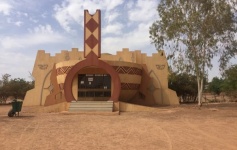
7 of the Absolute Best things to do in Ouagadougou, Burkina Faso
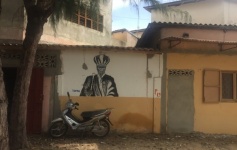
7 of the Absolute Best Things to do in Lomé, Togo
I found this blog useful as it covers the vital information on the Benin Visit. Good to read such a well written blog post.
- Pingback: Benin: Know Before You Go- Visas, My Travel Tips, and Advice
- Pingback: 7 of the Absolute Best Things to do in Lomé, Togo
- Pingback: 8 of the Absolute Best Things to do in Cotonou, Benin
Save my name, email, and website in this browser for the next time I comment.
When's The Best Time To Visit Venice
Book your individual trip , stress-free with local travel experts
- roughguides.com
- best-time-to-visit-venice
Plan your tailor-made trip with a local expert
Book securely with money-back guarantee
Travel stress-free with local assistance and 24/7 support
written by Olga Sitnitsa
updated 11.04.2024
Venice ’s tourist season is very nearly an all-year affair . Peak season is from Easter to early October when hotel rooms are virtually impossible to come by at short notice; if possible, try to avoid July and August , when the crowds are at their fullest, the climate can be oppressive, and many restaurants and bars take their annual break. The other two popular spells are Carnevale (leading up to Lent) and the weeks on each side of Christmas; again, hotels tend to be heavily booked, especially for Carnevale
Key takeaways
- When's the best time to visit Venice?
What are the travel season(s) in Venice
What are the best months to visit venice, when is rainy season in venice, visit the carnival of venice, tips for travelling to venice, tailor-made travel itineraries for italy, created by local experts.

8 days / from 2622 USD
Experience the hit TV show 'The White Lotus' in Sicily
Stay in beautiful Taormina with gorgeous views of Mount Etna and discover Sicily, including famous filming locations. Go on exclusive wine tastings, discover the Greek theater in Taormina with a private guide, visit other Sicilian towns and enjoy the crystal clear water on this week-long trip.

8 days / from 3258 USD
Enchanting Italian Lakes
Experience the picturesque lakes of Northern Italy, including Lake Garda, Como, Lugano and Maggiore; explore the charming Borromean Islands – former favourites of Ernest Hemingway – and stroll the romantic streets of Verona and Milan. All of this, and much more, with this self-drive trip!

16 days / from 3258 USD
From Venice to Florence: A Grand Tour of Northern Italy
From the atmospheric canals of Venice and the picturesque coastline of Cinque Terre, to the trendy designer boutiques of Milan and the Renaissance-infused streets of Florence, Northern Italy has plenty to offer. Experience it all with this comprehensive trip.
- Spring ( March to May) and autumn (September to November ) are the most favourable periods to visit Venice, when temperatures are mild and crowds are smaller, allowing you to explore its canals and architecture more closely.
- Acqua alta , or flood season, occurs from October to January , presenting a unique aspect of Venice with its flooded streets and squares, offering a different perspective on the city's charm.
- The Venice Carnival , a world-famous event, usually takes place in February , transforming the city into a colourful scene of masquerades, elaborate costumes and cultural festivities.
- Venice is hot and crowded in the summer ( June to August ), but there are opportunities to enjoy lively festivals, al fresco dining along the canals and spectacular sunsets over the lagoon.
When's the best time to visit Venice?
For the ideal combination of comparative peace and pleasant climate, the two or three weeks immediately preceding Easter are perhaps the best time of year. Climatically, the months at the end of the high season are erratic: some November and December days are so clear that the Dolomites seem to start on the edge of the mainland, but others bring torrential rain or fog so dense you can’t see across the Canal Grande.
However, the desertion of the streets in winter is magical, and the sight of the Piazza under floodwater is unforgettable. This acqua alta, as Venice’s seasonal flooding is called, is common between October and March, and you should anticipate a few inconvenient days in the course of a winter visit.
Here are some highlights:
- Spring : Ideal weather and Venice Biennale.
- Summer : Vibrant festivals and outdoor dining.
- Autumn : Serene beauty and the Venice Film Festival.
- Winter : Carnival of Venice and unique acqua alta scenes.

Grand Canal, Venice, Italy © Apple Kullathida/Shutterstock
In Venice, the tourist seasons are characterised as follows:
High Season
From June to August, from late December to early January (Christmas and New Year's Eve), and a fortnight at Easter. Venice is at its busiest during this period, with warm summer weather attracting tourists to its canals and events such as Easter creating a festive atmosphere. Expect crowded attractions, higher accommodation prices and a lively city pulse.
Shoulder Season
Occurs in April, May, September and October. These months are characterised by milder weather and coincide with events such as the Venice Biennale art exhibition, which alternates with the Architecture Biennale, which begins in May.
At this time, the city is less crowded than in high season, allowing for a more relaxed exploration of Venice's historic streets and canals. Accommodation prices are moderately high but more affordable than in high season.
Lasts from November to March, with the exception of the Christmas, New Year and Carnival periods. This season is characterised by cooler temperatures, potential acqua alta (especially from November to January) and a calmer atmosphere of the city.
The number of tourists decreases significantly, resulting in lower prices and a more soulful experience of Venice. This period offers a unique opportunity to explore the city without the crowds of tourists, although some businesses may operate on reduced hours or be closed.
When planning a trip to Venice it is important not only to consider the weather conditions but also to find suitable accommodation. Our guide to the best places to stay in Venice will help you solve this issue .

St Mark's Square from the Grand canal. Venice, Italy © volkova natalia/Shutterstock
Venice, a city of great beauty and historical significance, offers its visitors unique experiences throughout the year. However, some months stand out for their perfect combination of pleasant weather, relatively smaller crowds and the city's vibrant cultural calendar. These months capture the essence of Venice and will make your visit unforgettable.
Weather in Venice in April
April marks the beginning of spring in Venice. The weather becomes comfortably mild and the city begins to blossom with colour, making it an ideal time for photography and nature lovers. Easter celebrations add to the festive atmosphere and you can enjoy open cafes and restaurants without the summer crowds. April also sees the opening of the Biennale art or architecture exhibitions, depending on the year, and the start of a wave of cultural events.
Weather in Venice in May
May is probably one of the best times to visit Venice. The weather is warm but not yet hot, allowing you to explore the city's narrow streets and countless bridges for long periods. The city is alive with colour, from fresh greenery to clear blue skies, perfect for leisurely gondola rides. Also in May, Venice often hosts the Biennale, making it a magnet for art lovers from all over the world.
Weather in Venice in September
As the summer heat begins to subside, September welcomes visitors with comfortable temperatures and a light, pleasant atmosphere. The city breathes a sigh of relief as the peak tourist season comes to an end, allowing for more relaxed cultural and historical sightseeing. Among other things, the Venice Film Festival, held in early September, attracts film lovers and adds a glamorous touch to the city's already enchanting atmosphere.
Weather in Venice in October
October is the month that showcases the tranquil beauty of Venice. Temperatures cool down and the summer crowds eventually dissipate, offering a more intimate introduction to the city. The change of season brings stunning autumn colours, creating picturesque scenes around every corner. This is a great time if you want to immerse yourself in the rich history and art of Venice without the hustle and bustle of high season. In addition, the mist over the canals adds a mysterious charm to the Venetian scenery.

Venice landmark, Burano island canal, colorful houses and boats, Italy © StevanZZ/Shutterstock
The closest equivalent to the rainy season in Venice is mostly in the fall: the rainiest month is November, as well as October and April. These months often see acqua alta, or floodwaters, causing flooding in some parts of the city. This phenomenon, while unique and fascinating to observe, can affect the movement and accessibility of Venice.
If you plan to visit during these periods, you should be prepared for possible disruptions and the opportunity to see the city from an unusual perspective as its waterways and streets merge together.
The Venice Carnival is a world-famous festival that transforms the city into a land of wonder, history, mystery, and beauty. It usually takes place in February and concludes with Lent, so guests from all over the world come to take part in its extravaganza.
It is important to book accommodation in advance, as the city is flooded with people wanting to experience the magic of Carnival. While most of Venice's attractions remain open, expect them to be more crowded than usual.
The appeal of Carnival lies not only in its historic costumes and elaborate masks but also in the variety of entertainment it offers:
- Majestic masquerade balls in ancient Venetian palaces.
- Street performances that enliven the city's narrow streets
- Gondola parades along the famous canals.
- Impressive art exhibitions and live music events.
However, the influx of tourists during this period means that popular destinations can be extremely busy and airfares and hotel prices can rise significantly. It is therefore advisable to plan your Venice Carnival adventure well in advance to ensure you have an enjoyable time in the colorful atmosphere of the festivities.
Venice offers a wide list of things to do at any time of the year. If you're feeling confused and don't know where to start planning your itinerary, check out our list of the best things to do in Venice for all tastes .

Masked man by the water at Venice Carnival, Italy, Europe – copyright Kiki Deere
Plan your visit during shoulder season
Visiting Venice during the "shoulder" months of March, April and October can enhance your experience. During these periods, the weather is milder, the crowds are smaller and the beauty of the city is more tranquil. You'll get fewer queues at the main attractions and a calmer atmosphere for exploring the winding streets and canals.
Embrace the Acqua Alta
The Acqua alta , or high water, is a unique phenomenon in Venice that usually occurs between October and January. Instead of seeing it as an inconvenience, embrace this aspect of Venetian life. Put on waterproof boots and walk on the elevated platforms to see the city in a whole new light. It's an experience unique to Venice that you won't want to miss.
Get lost in the backstreets
One of the best ways to get to know Venice is to wander its less-visited paths. Venture beyond the main tourist spots, such as St Mark's Square and the Rialto Bridge, to discover hidden gems. Here you'll find quieter canals, charming local shops and authentic Venetian restaurants, giving you a glimpse into the daily lives of the residents.
Use Public Transportation Wisely
Venice's public transport system , primarily the vaporettos (water buses), is an efficient way to get around the city. If you are staying for a few days, consider purchasing a pass to save on the cost of individual tickets. Remember that gondola rides, although iconic, are more for the experience than as a practical way to get around, and they can be expensive.

Online editor at Rough Guides, specialising in travel content. Passionate about creating compelling stories and inspiring others to explore the world.
- Authentic Experiences
- Travel Advice
- Travel Tips
Planning your own trip? Prepare for your trip
Use Rough Guides' trusted partners for great rates
Travel advice for Italy
From travel safety to visa requirements, discover the best tips for traveling to Italy
- Eating and drinking in Italy
- How to get to Italy
- Getting around Italy: Transportation Tips
- Shopping tips for Italy
- Sports and Outdoor activities in Italy
- Travel Tips Italy for planning and on the go
- Best time to visit Italy
- How to spend 7 days In Italy - 8 unique itineraries
- The Best 10-Day Italy Travel Itinerary
- How To Spend 14 Days In Italy - 5 Unique Itineraries
- How to get from Rome to Florence
Find even more inspiration for 35 here

Ready to travel and discover Italy?
Get support from our local experts for stress-free planning & worry-free travels.
- Where to stay
- Itineraries
- Travel advice
11 ways to see Benin on a budget

Apr 21, 2024 • 6 min read

These top tips can help your money go further in Benin © peeterv / Getty Images
Already one of the most budget-friendly destinations in Africa, there are still plenty of ways to make your Benin trip even cheaper.
From flopping on a sunbed on palm-fringed beaches of the Atlantic coast and learning about Vodou to swimming in lakes and spotting elephants, lions, and cheetahs in Parc National de la Pendjari, it’s easy to make some lifelong memories in this small West African country – and all for next to nothing.
Here is how to see Benin on a budget.
Daily costs in Benin
- Hostel room: $30–50 per night
- Hotel room: $95–460 per night
- Basic room for two: $50–150 per night
- Self-catering apartment (including Airbnb): $40–150 per night
- Public transport ticket: from $5
- Coffee: $2–5
- Sandwich: $5–7
- Dinner for two: $30–50
- Beer/pint at the bar: $5–8
Average daily cost: $75 per day including three meals, accommodation, transportation and modest activities.
Start planning your trip to Benin with this guide to the country's top experiences
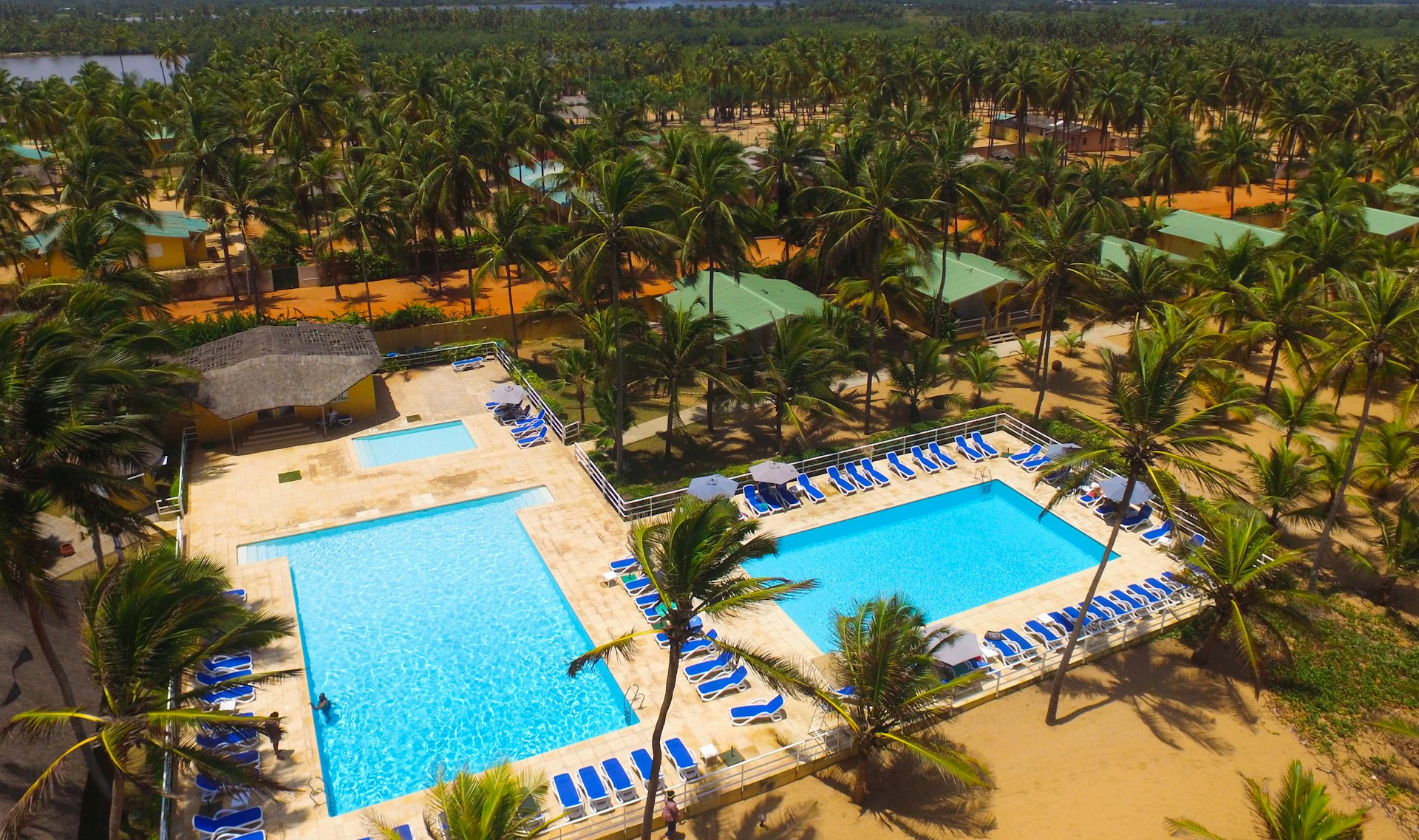
1. Book your accommodation directly and in advance
Benin has accommodation to suit every budget – from beach resorts to guesthouses. Swanky hotels are confined to Cotonou and, to a lesser extent, Ouidah and Natitingou. Most have restaurants and bars, offer wi-fi, and have air-con.
If you want to save money, book in advance and try to book directly. Cheaper accommodation options are usually located on the outskirts of the cities but you’ll then spend more on transport getting into the center. If you don’t have your own wheels or a driver, you’re likely to be catching zems ( zemi-johns ; motorbike taxis). A typical fare within a town costs $0.25 to $0.75.
Luxury travelers will enjoy a stay at Nature Luxury Lodge , a high-end hotel in Ouidah, where you should expect to pay around $458 per night. Golden Tulip le Diplomate Cotonou is a midrange choice, costing from $132 per night. A budget option, such as the Millennium Popo Beach Hotel in Grand Popo, costs roughly $97 per night.
2. Camping is a cheaper way to see the country
Cut your accommodation costs even further by camping in Benin. Stay at Camping Le Paradis Du Soleil in Cotonou from $35 per night, where you can sleep near the beach surrounded by palm trees. Save more on food costs by cooking in the kitchen or at the cool barbecue spot. With just two lakeside tents surrounded by 24 acres of greenery, Glamping Lakeview Ouidah is more of an exclusive experience, costing from $80 per night. It's the perfect budget spot if you're looking to get away from the crowds. Guesthouse Bambou Beach in Grand Popo is one of the most luxurious glamping getaways in Benin. It costs $94 a night to sleep in one of the fancy huts right by the pristine beach with Atlantic Ocean views.
3. Fly directly to Benin – in January if you can…
The cheapest month to fly to Benin is January and it can cost around a whopping 40% less than July and August. Despite more flights from Europe to neighboring Nigeria and nearby Ghana, it’s still cheaper to fly directly to Benin – and that’s without the cost and hassle of making your way overground from either country or Togo.
4. …but March to May is the cheapest time to visit
March to May is the springtime in Benin and the best time for budget travelers to visit. Temperatures tend to drop to a more manageable 25°C (77°F) and moving around the country feels a little less intense. Accommodation prices tend to fall as well.
Ready to go to Benin? Plan the best time for your visit with our seasonal guide
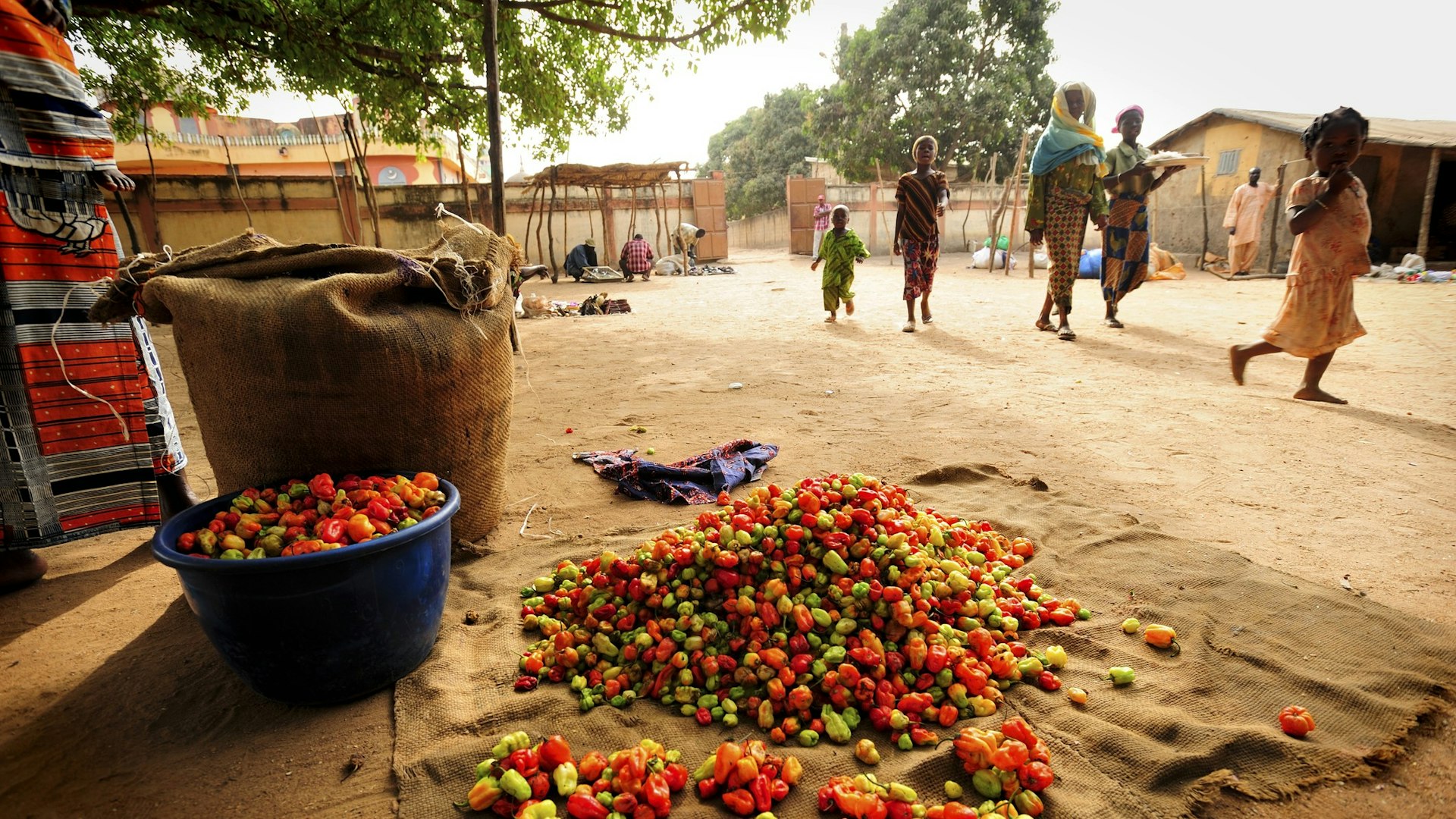
5. Beninese cuisine is the cheapest food to eat
Beninese grub is unquestionably among the best in West Africa and is very similar to Togolese food, the main differences being the names: fufu (a starchy staple from ground plantain or cassava) is generally called igname pilé here, and djenkoumé (a savory cornmeal and tomato cake) is called pâte rouge , for example. In southern Benin, fish is a highlight of local cuisine. It's usually barracuda, dorado or grouper, and is usually served grilled or fried.
For cheap meals, eat in local restaurants serving Beninese food. In Cotonou, Leadicious Cafe serves some excellent djewo (a traditional Beninese dough); La Cabane du Pêcheur on the beach at Cotonou is known for its Dahomey fish stew (fried fish with onions and tomatoes); and Food'in sells some great Beninese pastries like kuli-kuli (sweet peanut fritters) and yovo doko (similar to donuts).
6. Forgo pools and go wild swimming instead
Whilst the beaches along the coast are not safe for swimming because of strong currents, Benin has plenty of places to cool off. Many hotels have swimming pools (some charge for day access for non-guests) but it’s also possible to splash about in the lagoons of Southern Benin and Lake Ahémé.
For an even more refreshing dip head to the Kota Falls , 15km (9 miles) southeast of Natitingou, off the main highway. You can swim in the pool at the bottom of the falls or just sit down and chill in the cool shade of the undergrowth.
7. Explore Cotonou's markets for a taste of Beninese culture
The Grand Marché du Dantokpa is the vibrant life force of Benin’s bustling city, Cotonou. You can purchase anything you need or want in this enigmatic area, such as clothes, pirated CDs, soap, plastic sandals, and even livestock. Look out for traditional items, including Dutch wax cloth and batiks, inside the market building.
The Fetish Market is bound to peak your curiosity. This is the main area to buy any Vodou-related items, which include dried animal parts like heads, skins, and hoofs. You’ll also find dried plants and tree barks which are used for traditional medicine. Benin relies more on its ancient customs rather than Western culture and these markets provide a uniquely fascinating insight into Benin’s national religion.
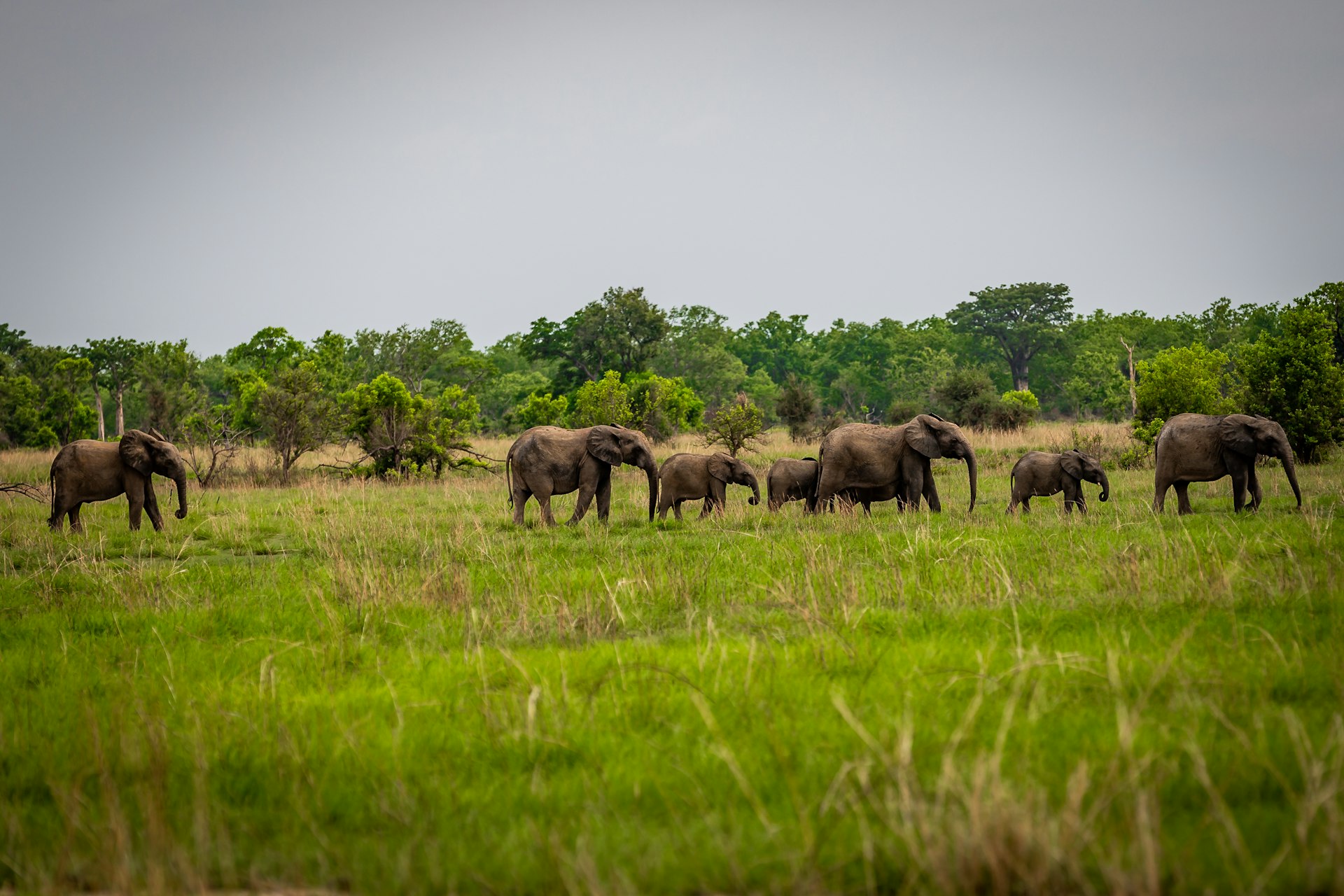
8. Go wildlife spotting in Parc National de la Pendjari
Whilst there is no way of saving money to visit the wonderful 2750 sq km Parc National de la Pendjari itself, it’s still a steal to visit one of West Africa 's best places to spot wildlife. You can seek out lions, leopards, baboons, hippos and elephants here for around US$16 a day. The entry fee alone for the Masai Mara or Serengeti is US$70. Even Kruger National Park charges US$25.
9. Use buses to get between towns…
Buses are the cheapest, most reliable and comfortable way to get around Benin, especially between cities in southern Benin and Natitingou to the north. ATT and Confort Lines buses are better maintained and more reliable than those of other companies. They also have air-con.
Buses almost always operate with guaranteed seating and fixed departure times; arrive early or book the day before to ensure you have a seat on your preferred service.
10. …and hire bush taxis where buses don’t go
Bush taxis, generally beaten-up old vehicles, cover outlying communities that large buses don't serve. There is sometimes a surcharge for luggage but they are cheaper than hiring a car. Most leave from the gares routières ; morning is the best time to find them.
11. Use zems to get across cities and towns
The cheapest way to get around Benin's towns and cities is through a zem (motorbike taxi). While they are by far the fastest and most convenient way of getting around, they can also be dangerous: most drive like lunatics and helmets are not available. Always bargain on the price to avoid being overcharged.
Explore related stories
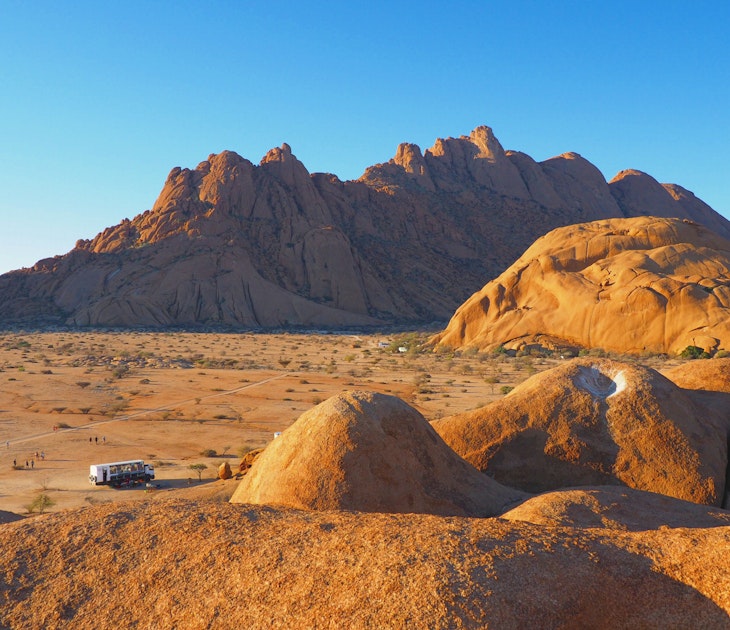
May 16, 2019 • 6 min read
Bumping across Africa in a converted lorry isn’t exactly luxurious, but overland tours provide an ideal way to visit corners of the continent that are…
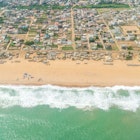
Sep 17, 2023 • 5 min read
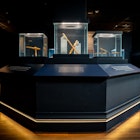
Aug 2, 2023 • 4 min read

Jul 6, 2023 • 5 min read

Jan 4, 2021 • 5 min read

Aug 27, 2019 • 7 min read

Jan 9, 2014 • 4 min read

Apr 23, 2024 • 5 min read
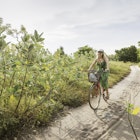

IMAGES
VIDEO
COMMENTS
7. Low season is the time to visit. Travel during the low season either from February to April or September to November. Conditions in Benin are at their best from September to November, just before the peak of the dry season. Temperatures aren't yet at their highest and you'll be able to move around more easily.
Weather is perfect this time of year in Benin to be enjoyable for warm weather travelers. The average high during this season is between 98.1°F (36.7°C) and 93.4°F (34.1°C). On average, it rains or snows a very small amount: 0 to 2 times per month. These times of year are fairly slow with tourists. Best Times to Travel › Benin
8. Best Time to Visit Benin. Roughly, the wet season runs from May to September, whilst the rest of the year is dry. The cooler part of the dry season runs from October to January and the hotter part of the dry season is from February to April. I visited Benin at the end of February and it was bloody hot and I've never been so sweaty in my life.
Best time to visit Benin Republic. The best time to visit any country depends on what you want to see and do during your trip. Here is a little insight on the best times to visit Benin Republic based on different factors. November to April is peak travel in Benin. This is the dry season and holidays like Christmas and Easter fall in these ...
The best time to visit Benin is in the dry months of December to March - which also coincide with the annual Voodoo festival in January - an unmissable experience. These months are slightly cooler and more pleasant, although watch out for the dusty harmattan wind - lipbalm and moisturiser are must-haves! Home \ Africa \ Benin.
The best time to visit Benin as a tourist is during the dry season, which typically extends from November to February. This period offers the most comfortable weather for travel, with lower humidity and fewer rain showers.
The best time to visit Benin is during the dry season, which runs from November to February. During this time, the weather is mild, and rainfall is minimal, making it ideal for exploring the country's outdoor attractions and cultural festivals.
Benin. Hidden away in the green folds of Africa, Benin is a small country that few westerners have thought to make a holiday destination, but we guarantee you that once visited it will forever leave you enchanted. Stuart Butler, author of Benin: the Bradt Guide. Despite the extraordinary range of attractions, few westerners have thought to make ...
In Benin the climate is warm and humid throughout the year, but during the winter, from November to January, the air is dry and it does not rain; this is the best time to go and visit this country. Winter is hot sometimes torrid especially in the North, while the coast is less hot but much humid and this causes the highest perceived temperature ...
Back to Africa. All the countries. Benin : tips on the best time to visit and what to pack in the suitcase.
For comparison: London 51.8 °F, NYC 53.6 °F, LA 64.2 °F. Warmest month: March (84 °F) Coldest month: August (78.1 °F) The maximum water temperature in Cotonou is 84.2 °F. You can take a bath at these temperatures. Months with water temperature of at least 70 °F (adequate for beach vacation): all months.
It's best to visit Benin in January, February, March and December - that's when you can count on very good weather all over the country. Also, choosing months such as April and November is a good time to travel, but sometimes there may be weather conditions that make the visit difficult. We can expect worse weather in May and also in October ...
Based on a number of factors like the weather and climate, cost of flights and hotels, peak travel seasons and much more, the best time to go to Benin is September-October. The warmest month of the year in Porto-Novo, one of the most popular travel destinations in Benin, is January, where the average maximum temperature gets to around 34℃ (93 ...
The best times to visit Benin City for ideal weather are. November 26th to April 1st. ... Weather is perfect this time of year in Benin City to be enjoyable for warm weather travelers. The average high during this season is between 98.1°F (36.7°C) and 90°F (32.2°C). On average, it rains or snows a very small amount: 0 to 1 times per month.
Call us in Washington, D.C. at 1-888-407-4747 (toll-free in the United States and Canada) or 1-202-501-4444 (from all other countries) from 8:00 a.m. to 8:00 p.m., Eastern Standard Time, Monday through Friday (except U.S. federal holidays). See the State Department's travel website for the Worldwide Caution and Travel Advisories.
Discover the best time to visit Best time to visit Benin according the weather by months. Destinations; Types. Luxury 5 star hotels; Luxury hotels with private pools; ... You picked the perfect time to visit Benin? Check the staying options there. Where. Benin. Who. 2 guests-+ When. Search .
The best time to visit Benin is the months of December to March. How many days do you need to see Benin? While on vacation in Benin for 14 days, I discovered that this country has permanently moved to its own rhythm. Benin offers a wide variety of interesting and exciting activities, such as eating fried beans and yams, canoeing across a lagoon ...
The best months to go to Cotonú are January, February, March, April, May, August, September, October, November and December. On average, the warmest months in Cotonou are January, February, March, April, May, June, October, November and December. June is the wettest month in this city. Cotonou is the city with the best climate, with good ...
Backpacking in Benin: a Two to Three Week Benin Itinerary. Benin Travel ItineraryDays 1-2: Cotonou, Ganvié (see above) Day 3: Porto Novo: Leafy Streets and Colonial Architecture. Benin Itinerary Days 4-5: Abomey (see above) and head north. Days 6-9 (or longer): Check out a national park and go on a safari in Benin!
Embark on an enlightening journey to Benin, a West African nation where the sacred rituals of Vodun, the historical remnants of the Dahomey Kingdom, and the tranquil beauty of Pendjari National Park converge. Wander through the Royal Palaces of Abomey, partake in the vibrant festivities of the Vodun Festival, or encounter diverse wildlife in ...
Weather in Venice in May. Mayis probably one of the best times to visit Venice. The weather is warm but not yet hot, allowing you to explore the city's narrow streets and countless bridges for long periods. The city is alive with colour, from fresh greenery to clear blue skies, perfect for leisurely gondola rides.
There is sometimes a surcharge for luggage but they are cheaper than hiring a car. Most leave from the gares routières; morning is the best time to find them. 11. Use zems to get across cities and towns. The cheapest way to get around Benin's towns and cities is through a zem (motorbike taxi). While they are by far the fastest and most ...